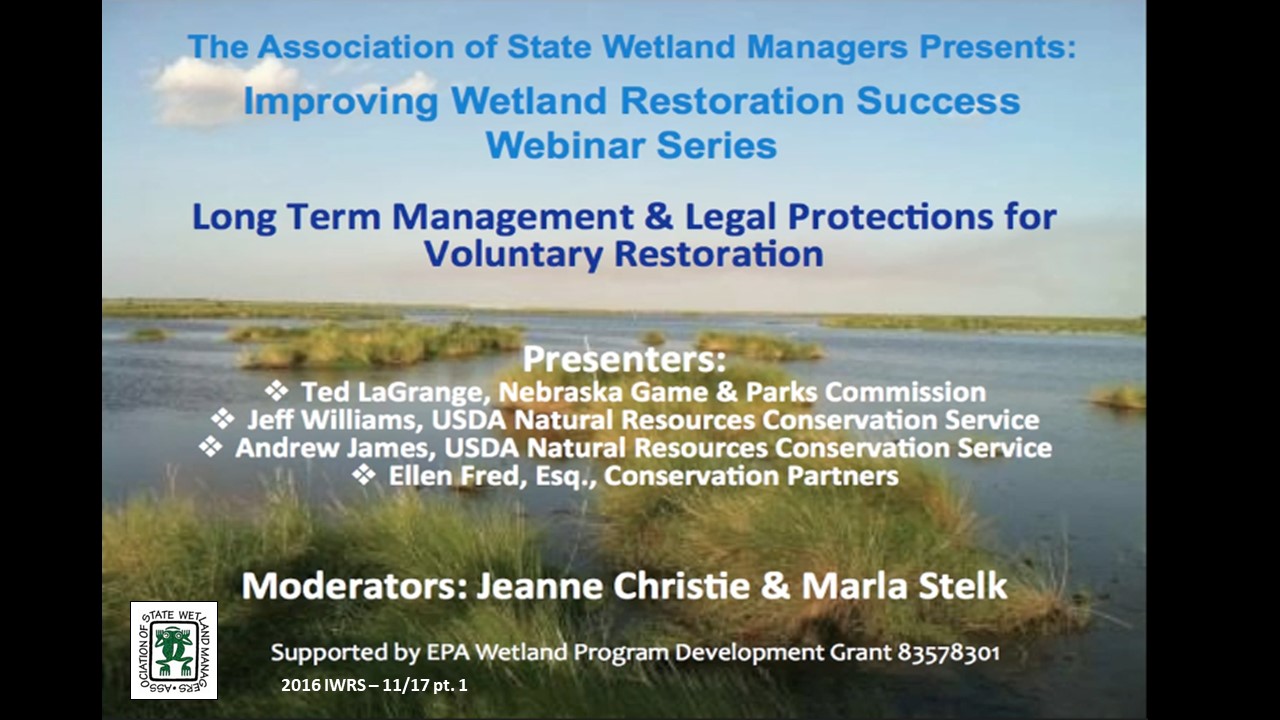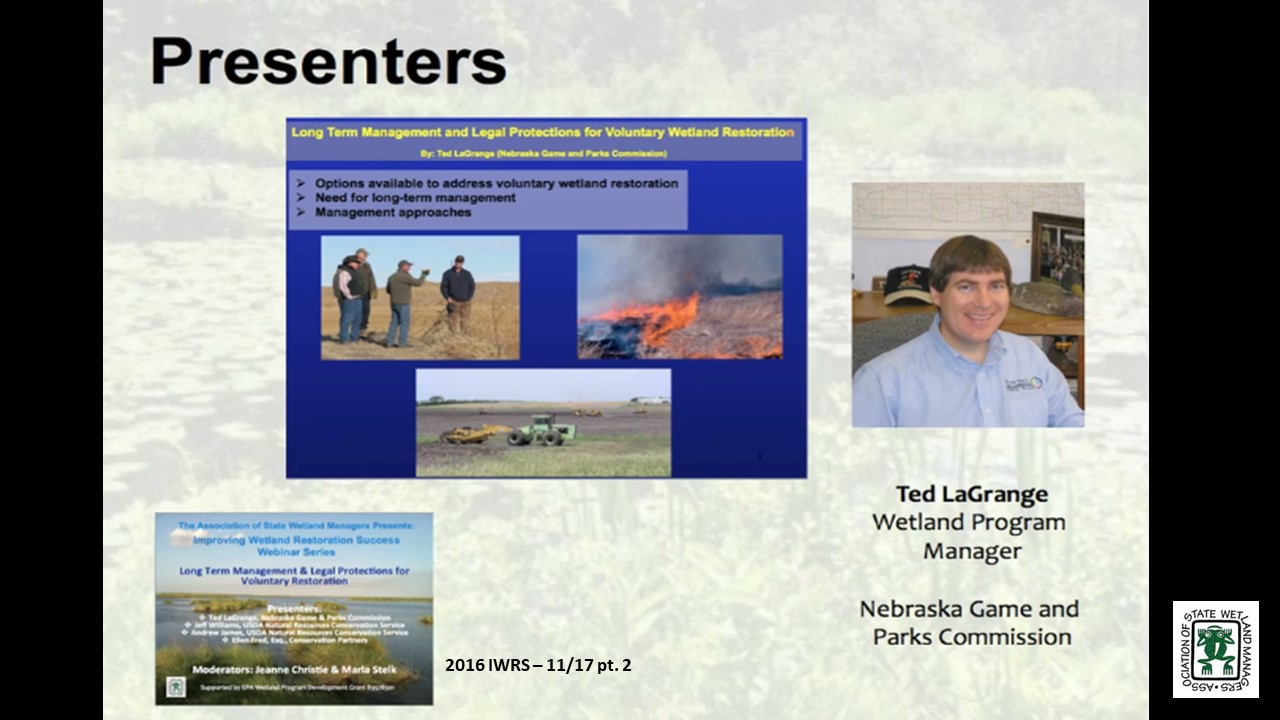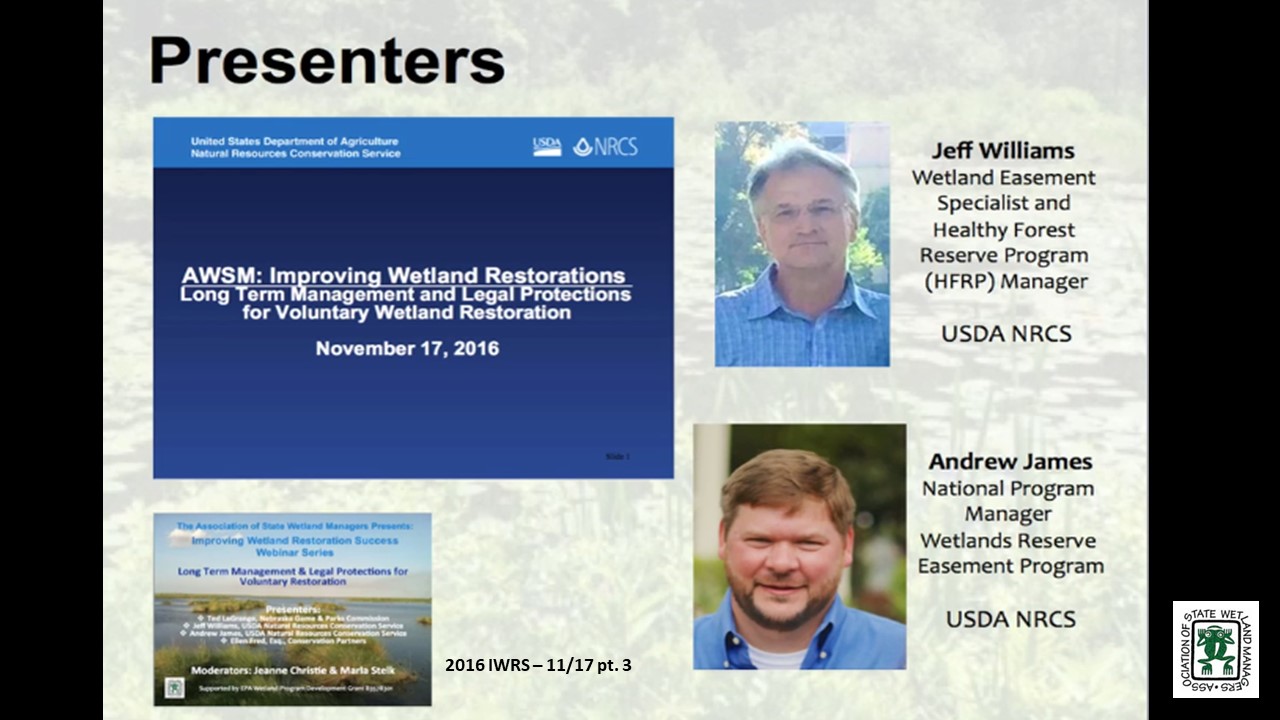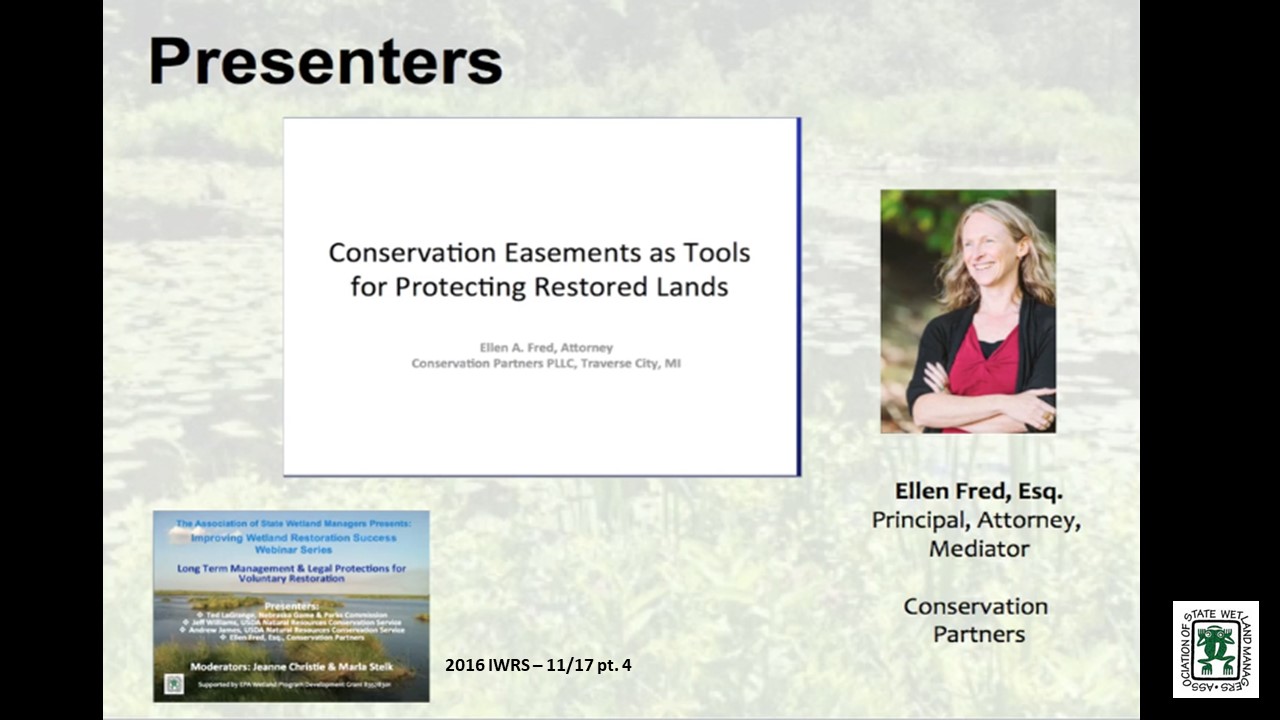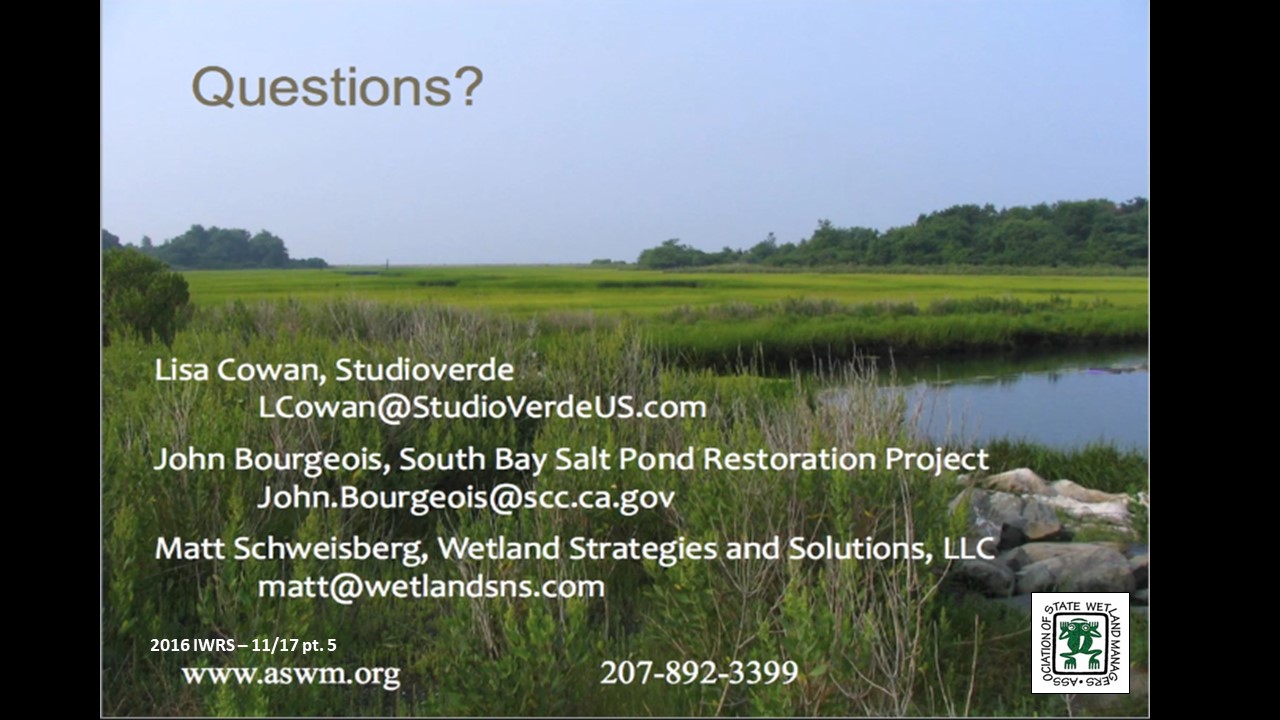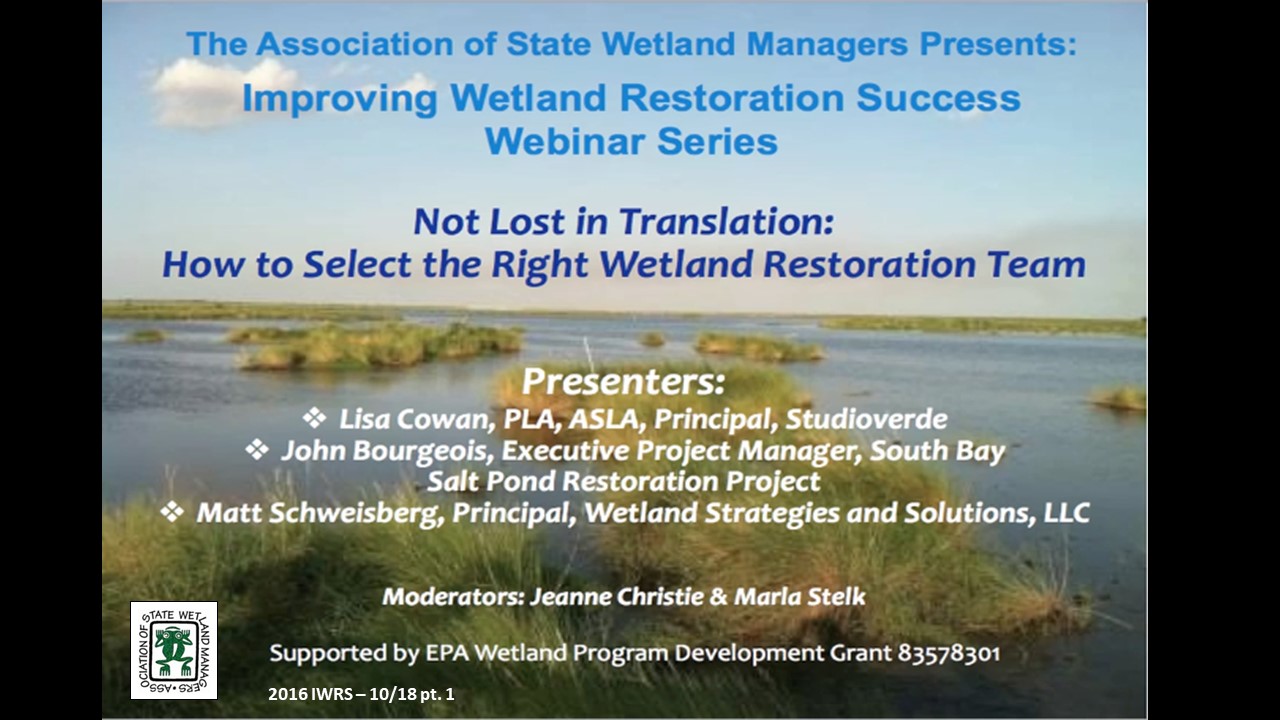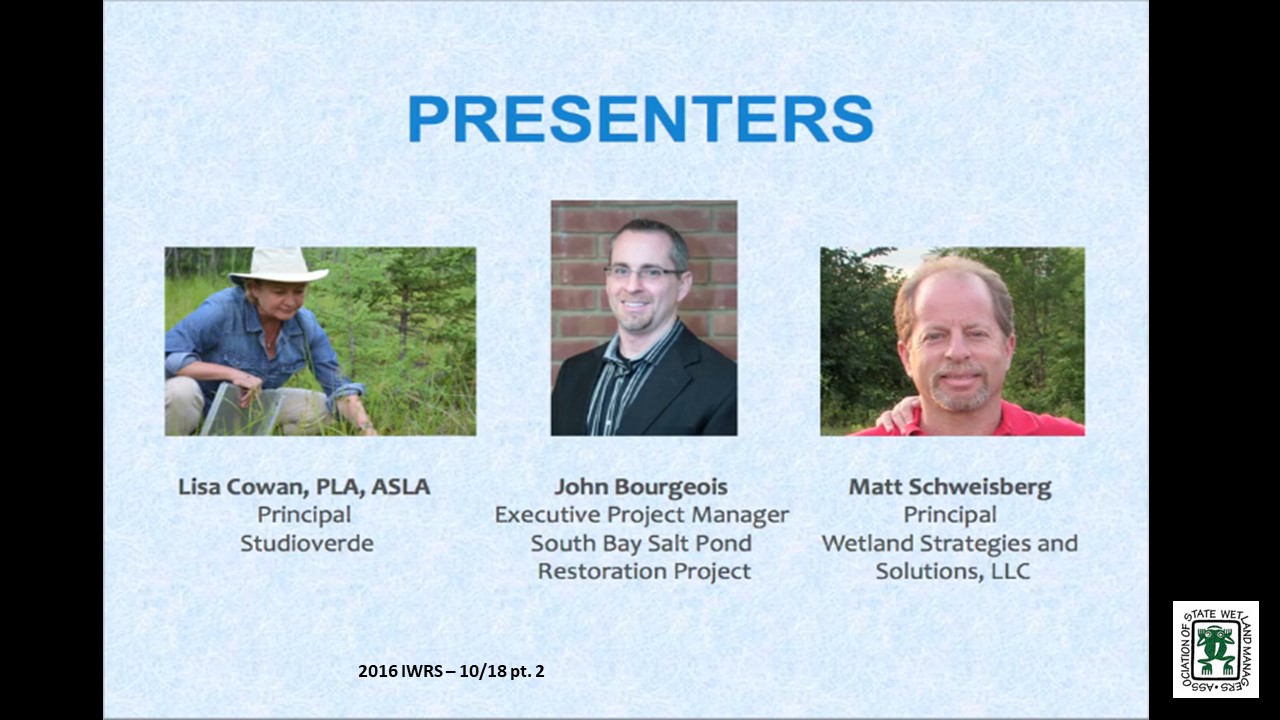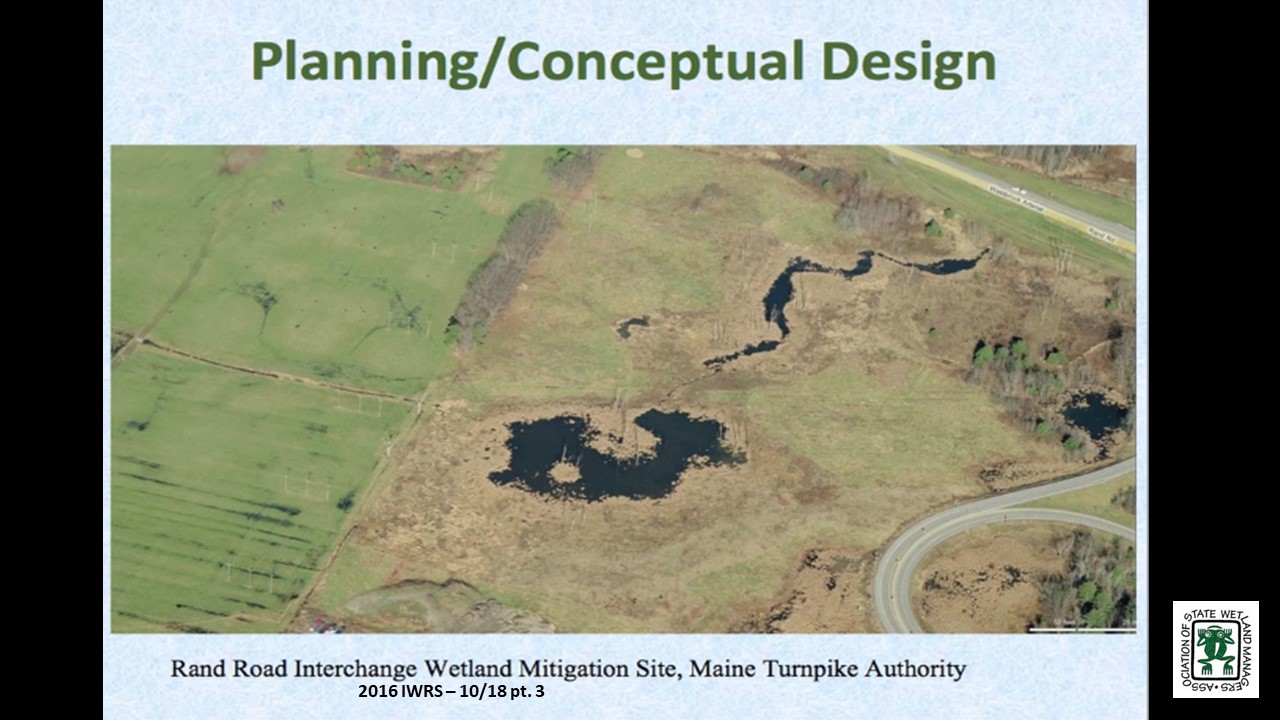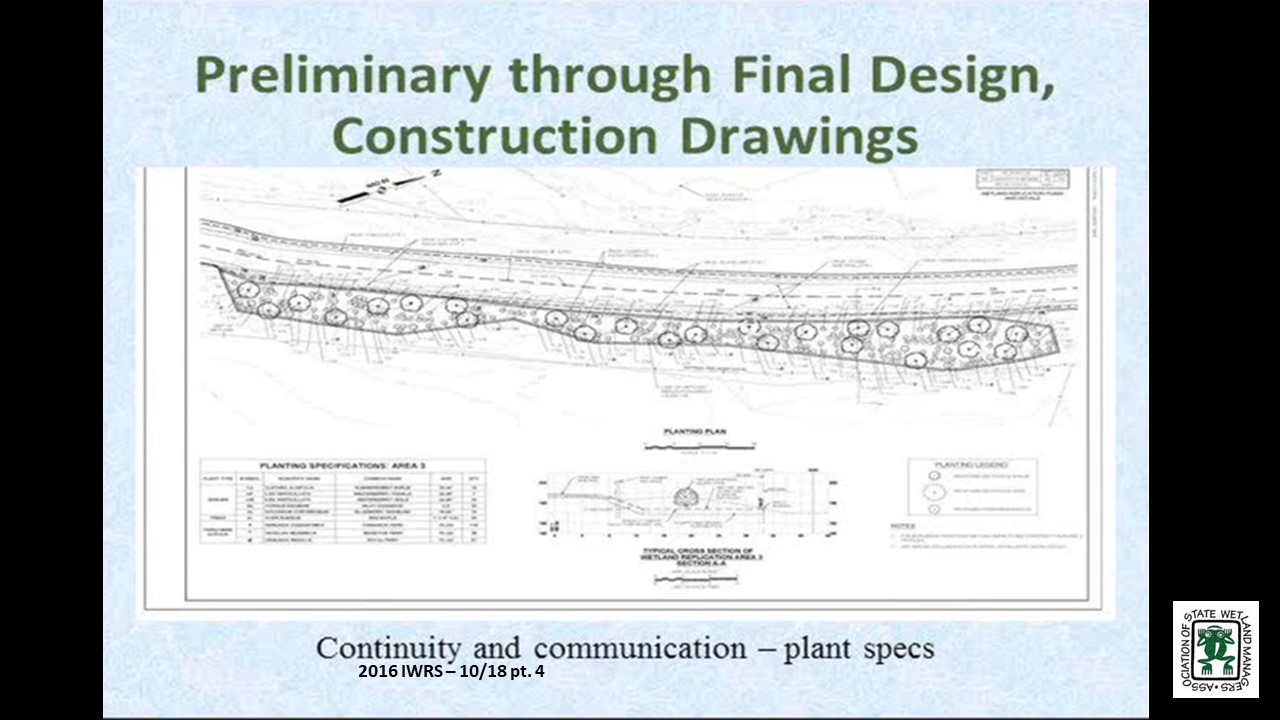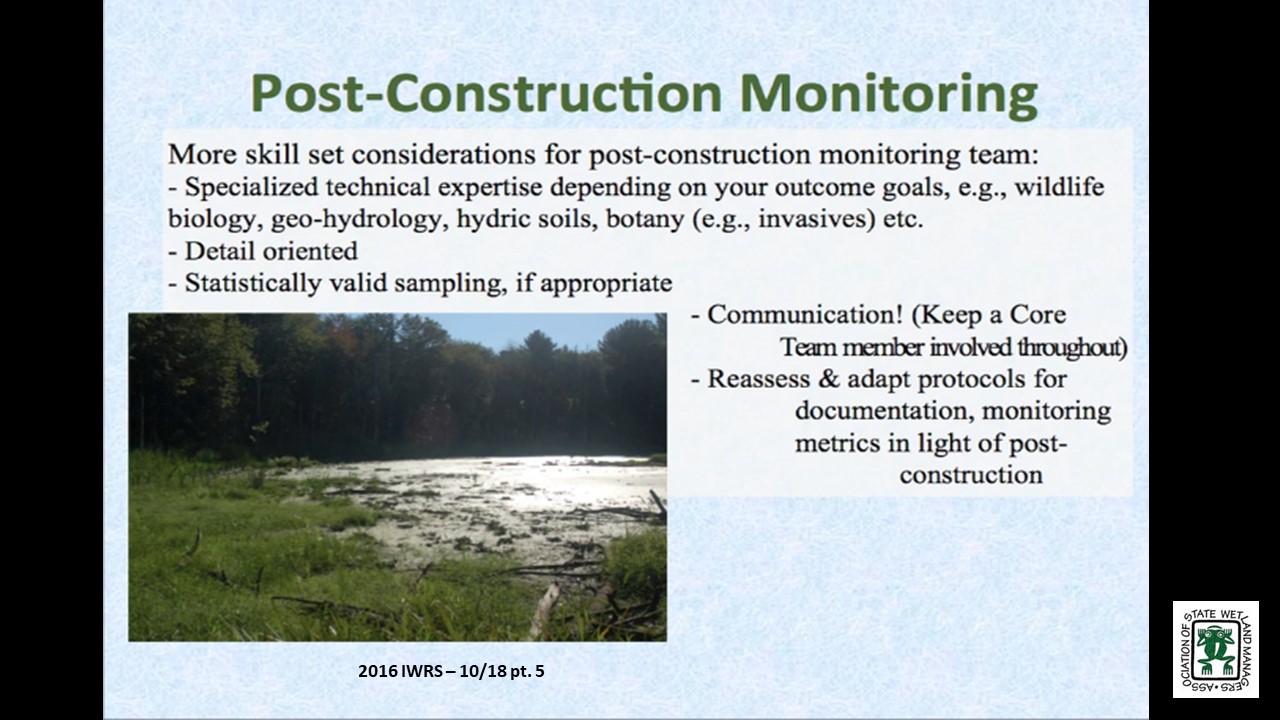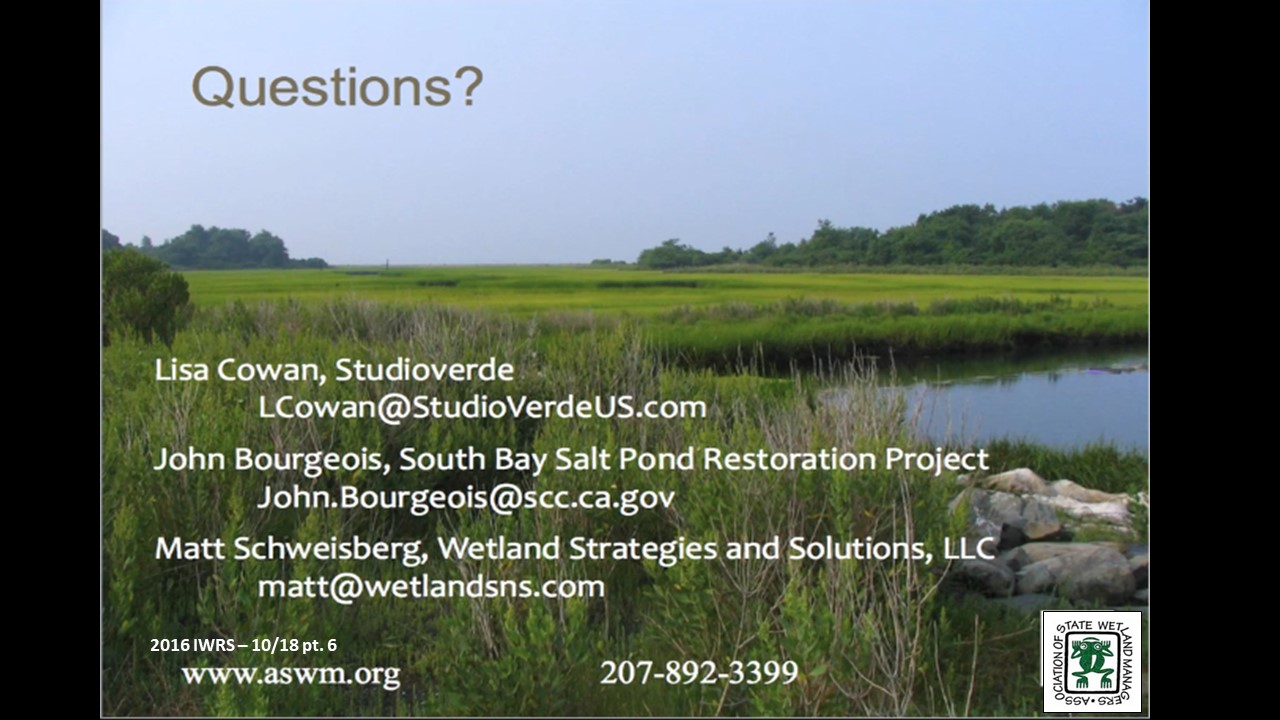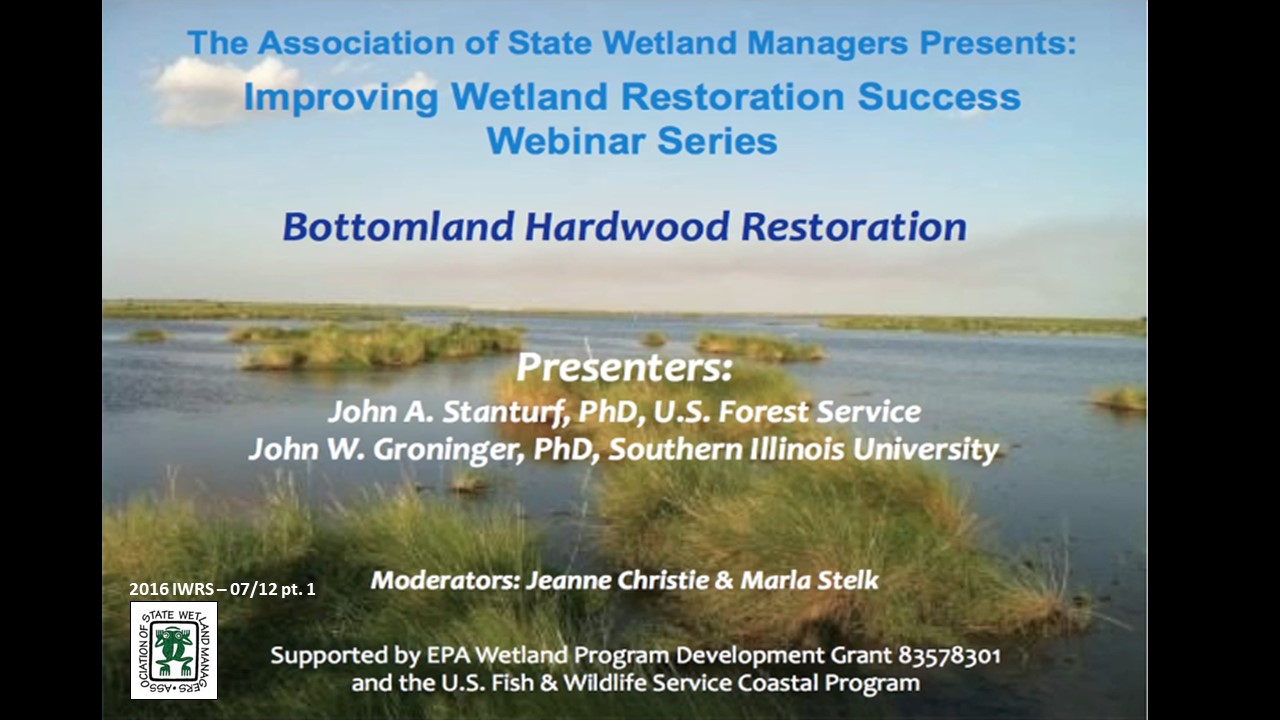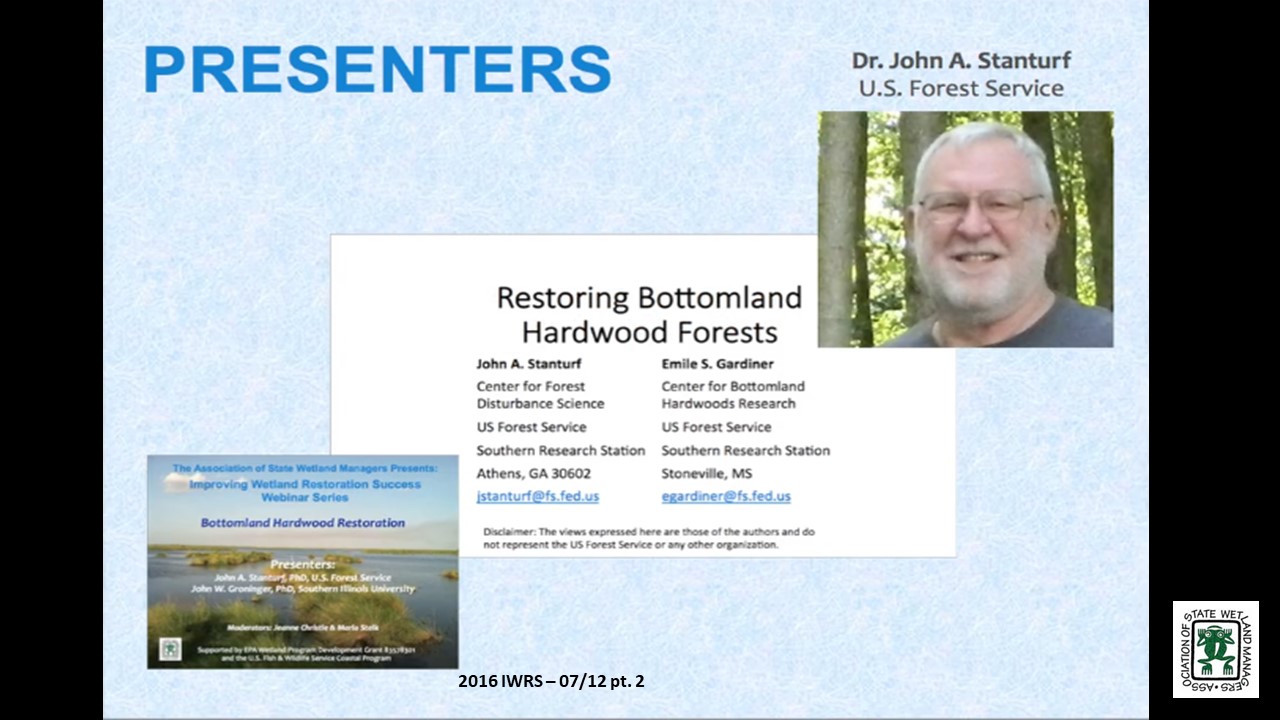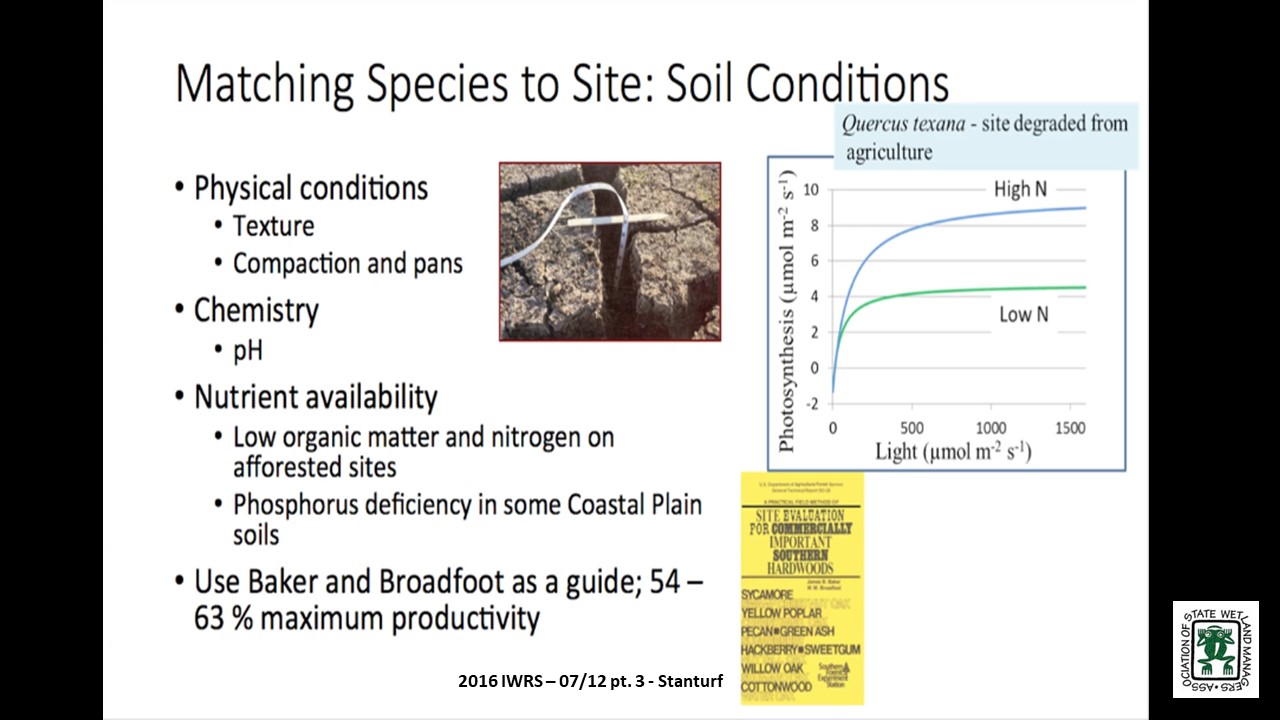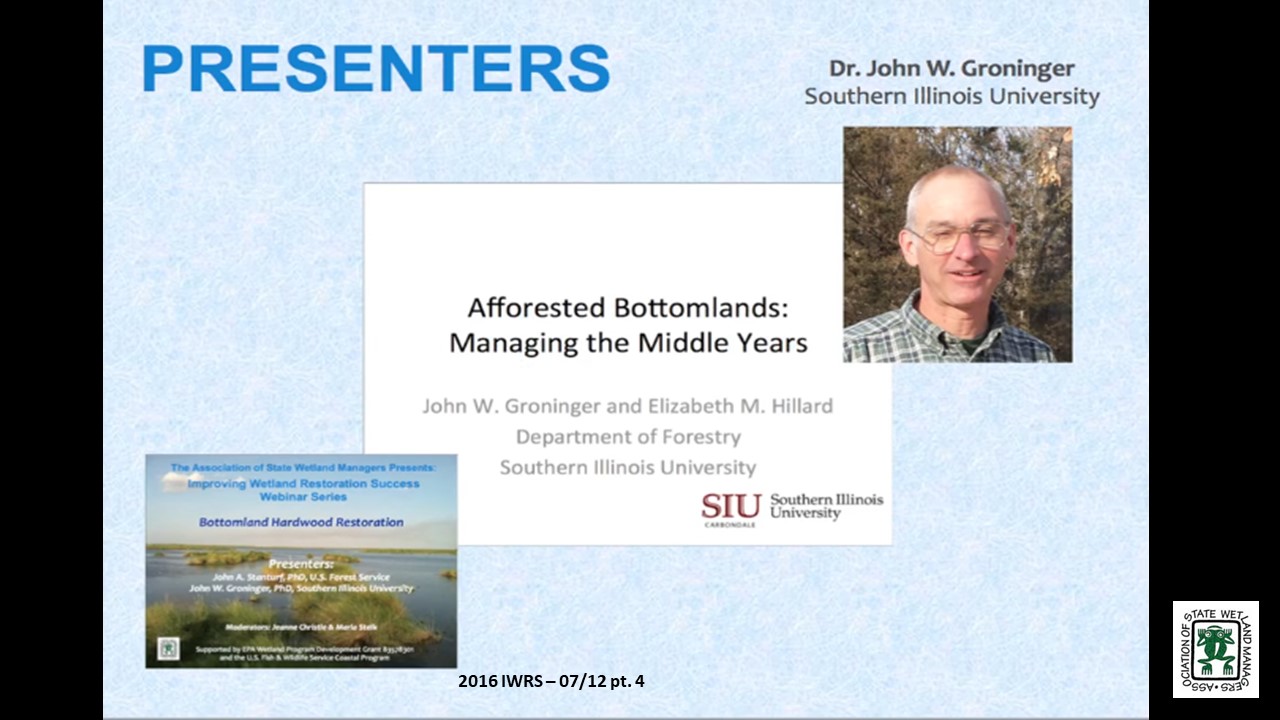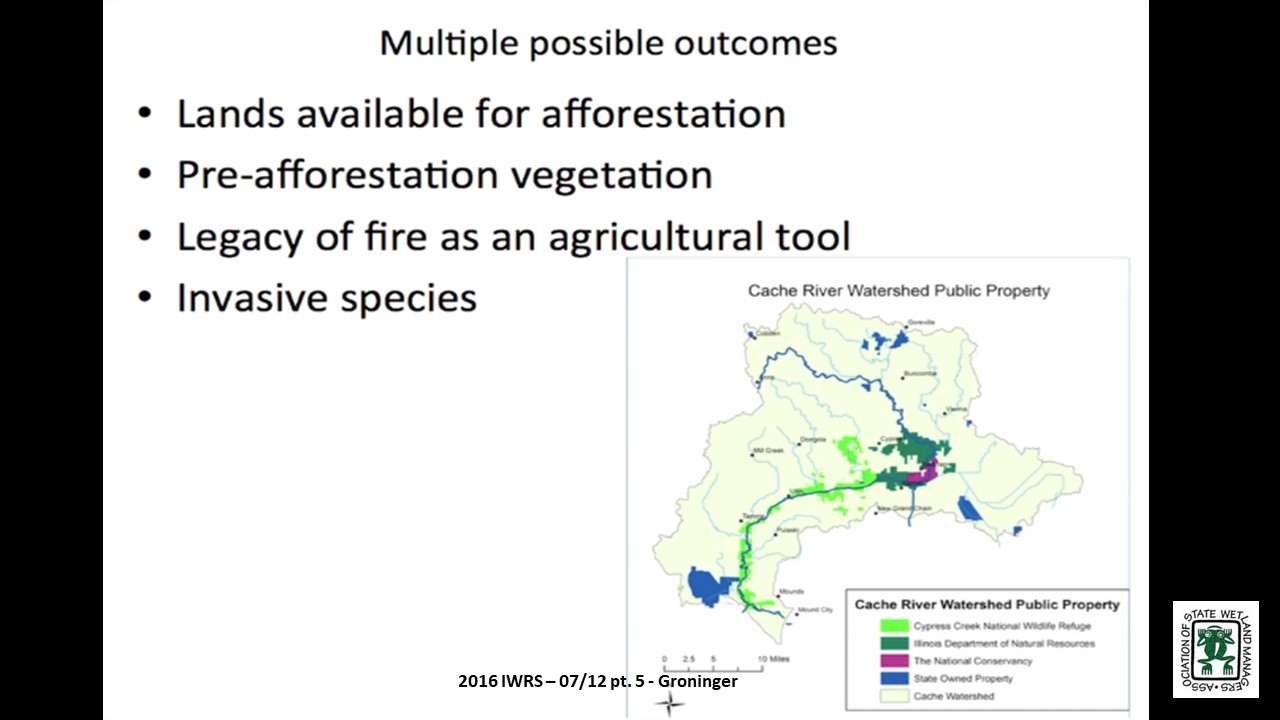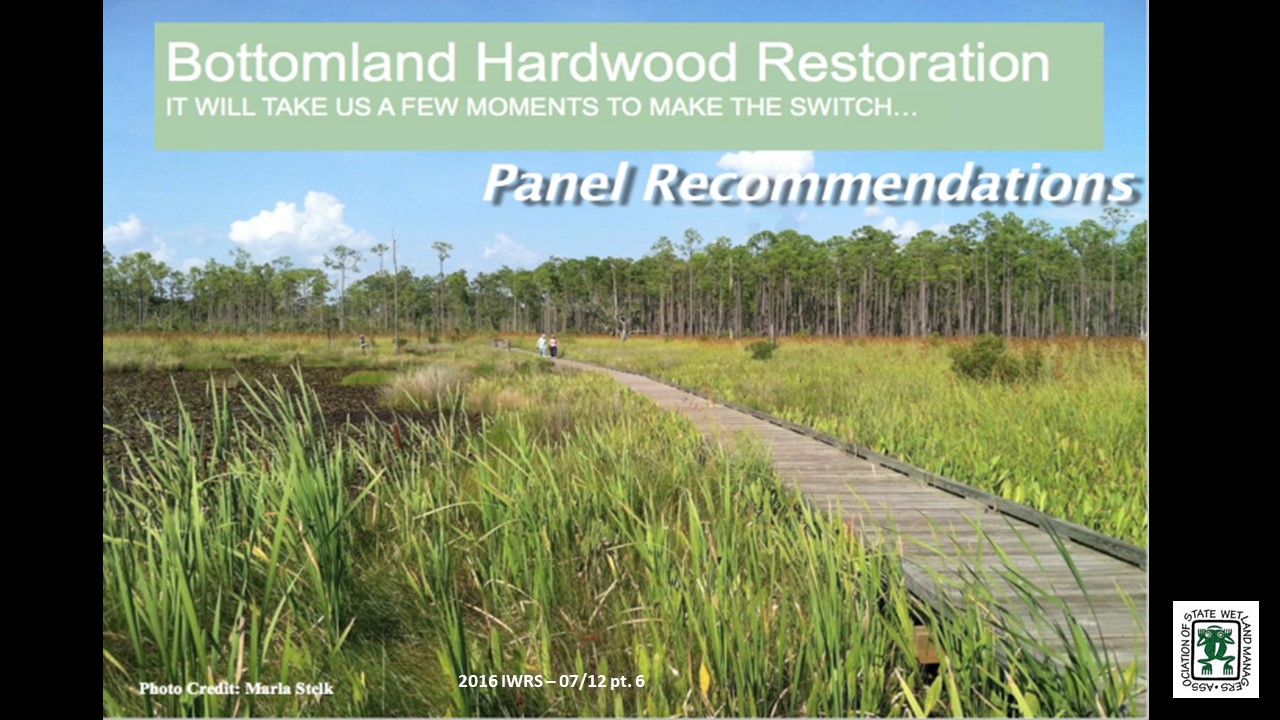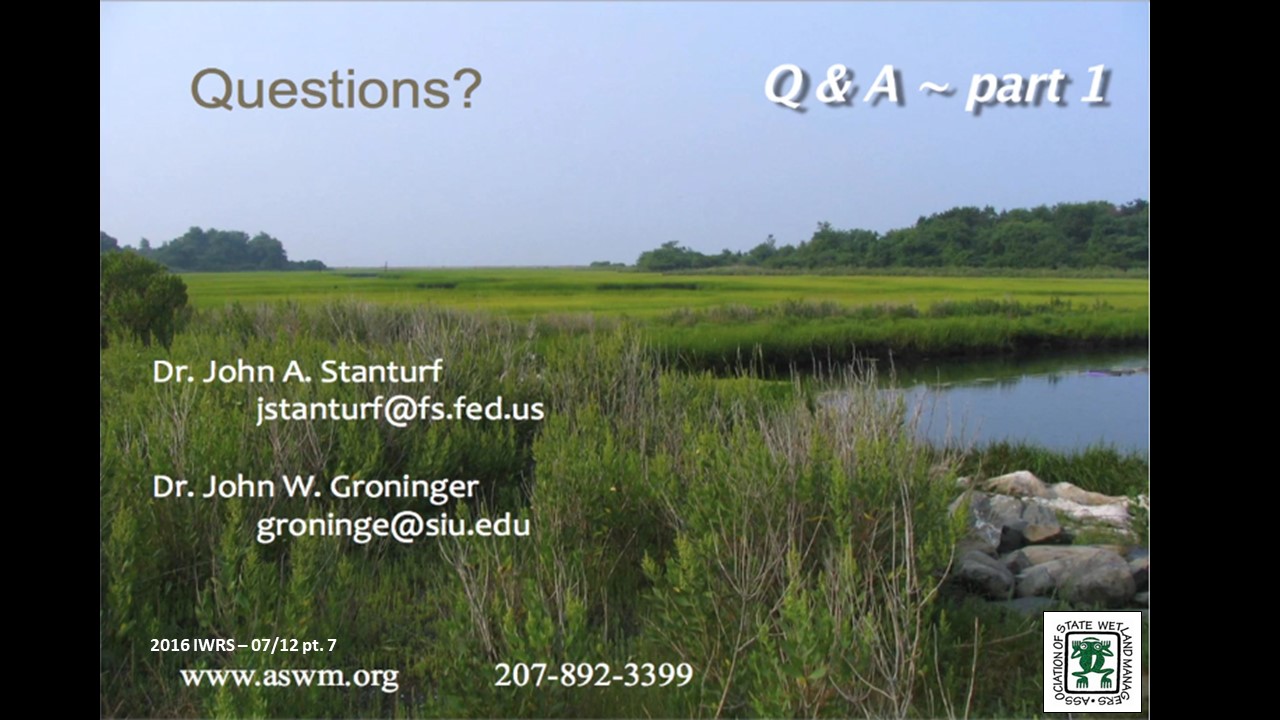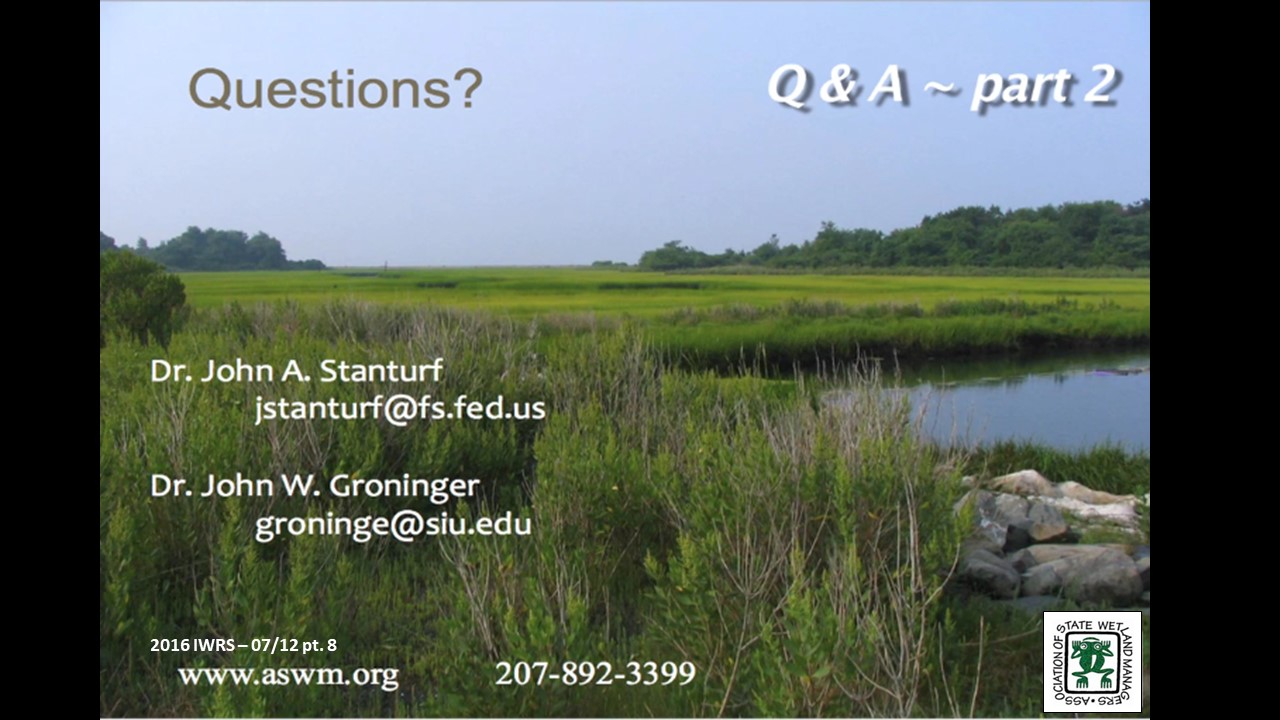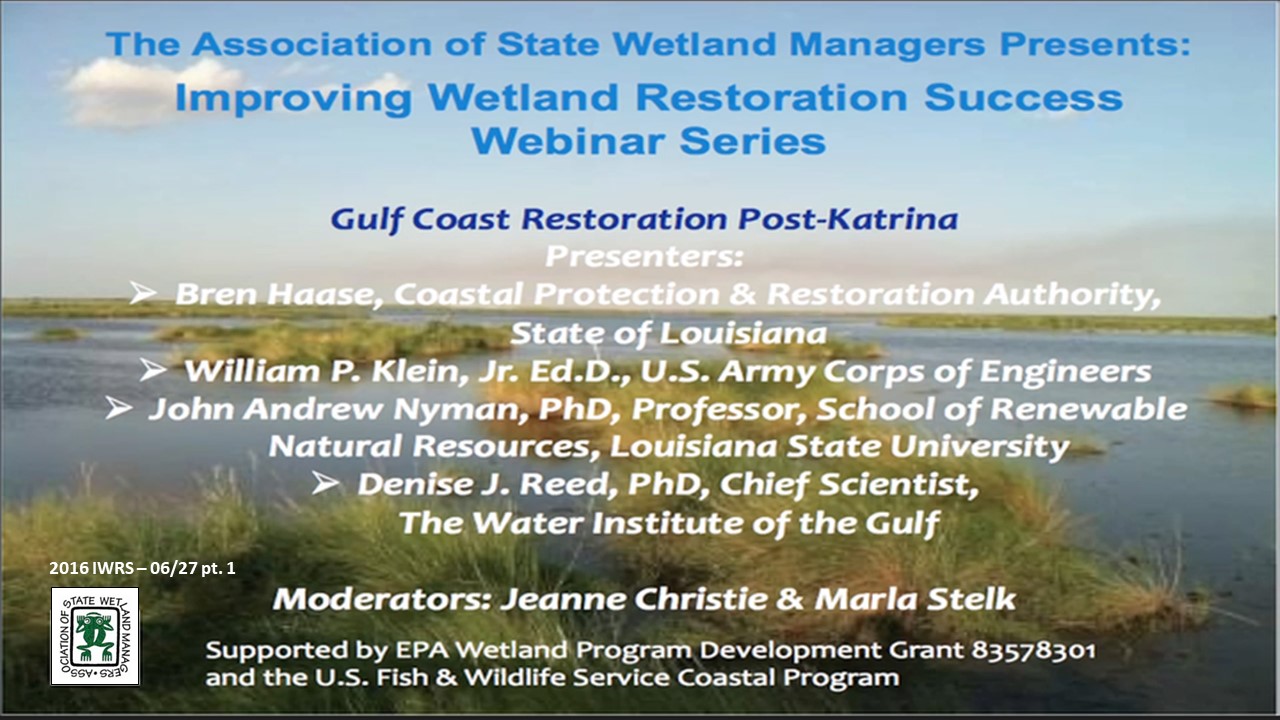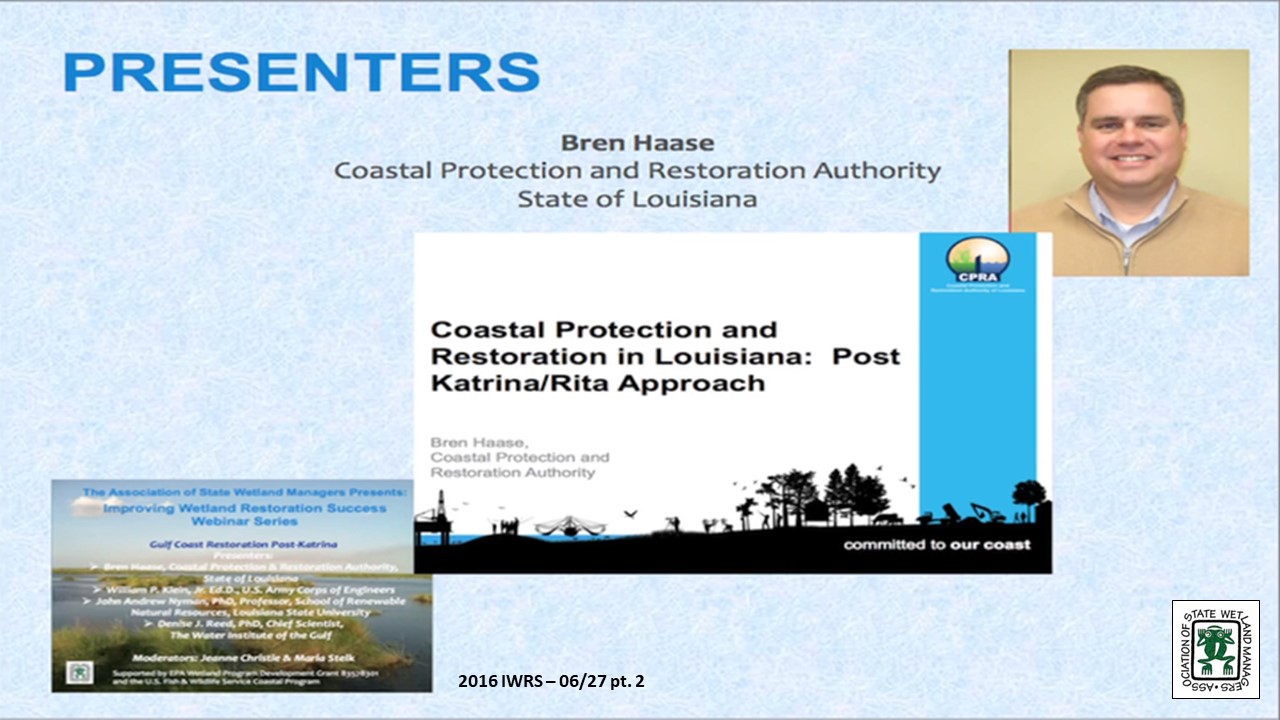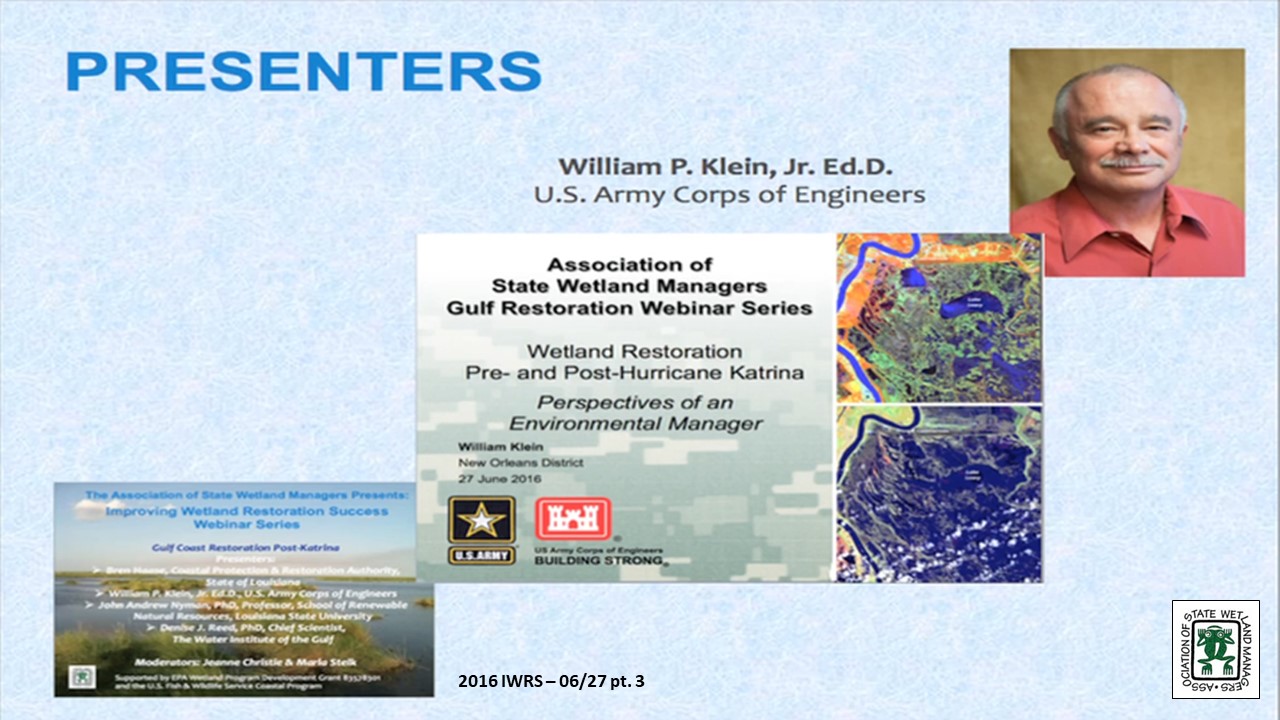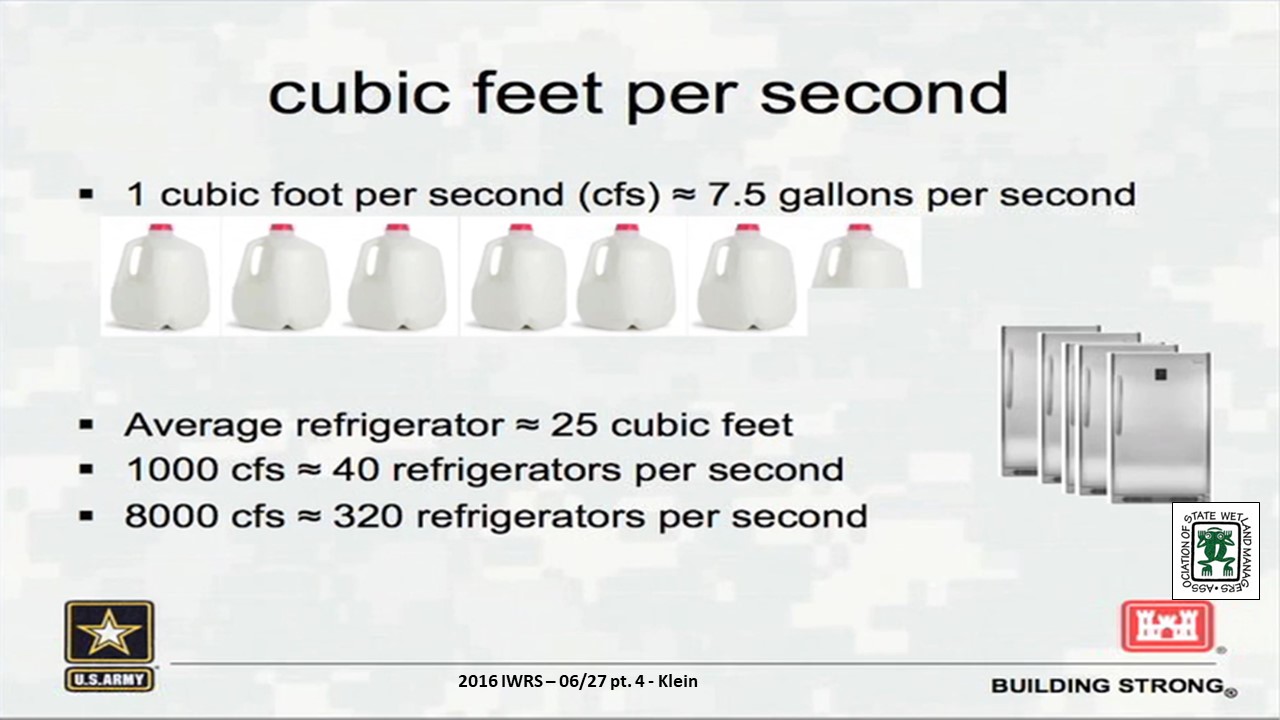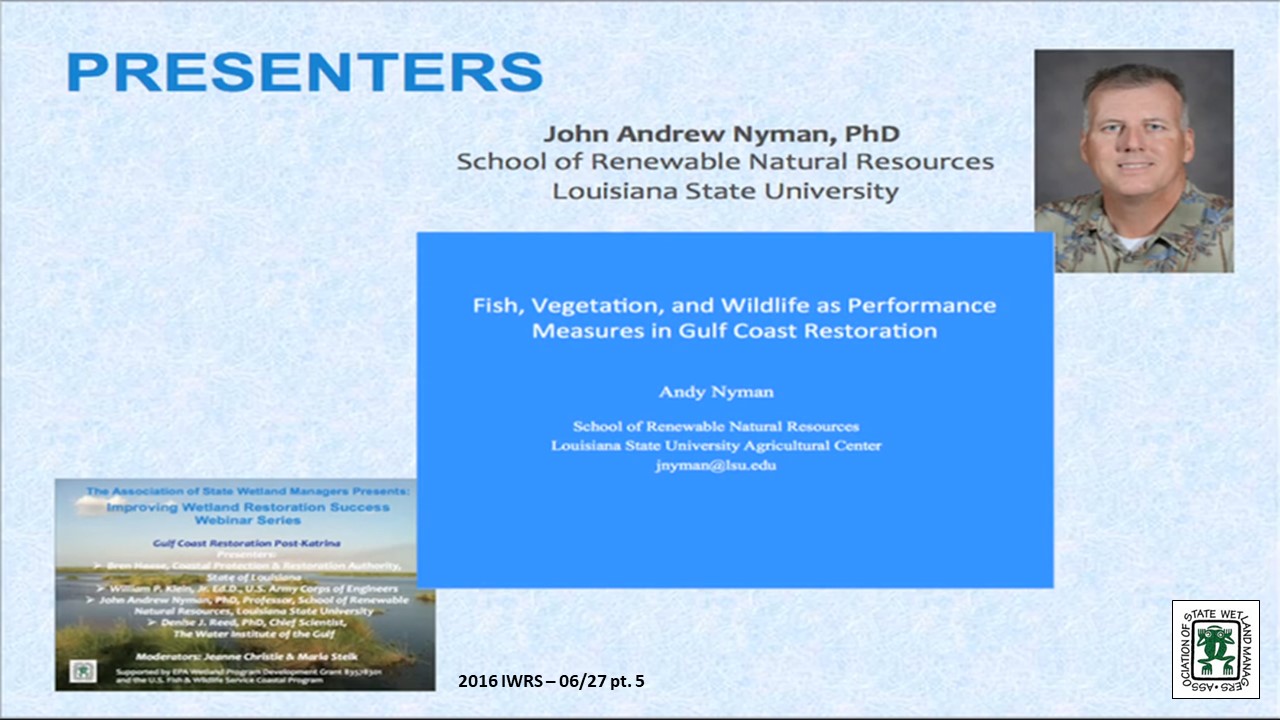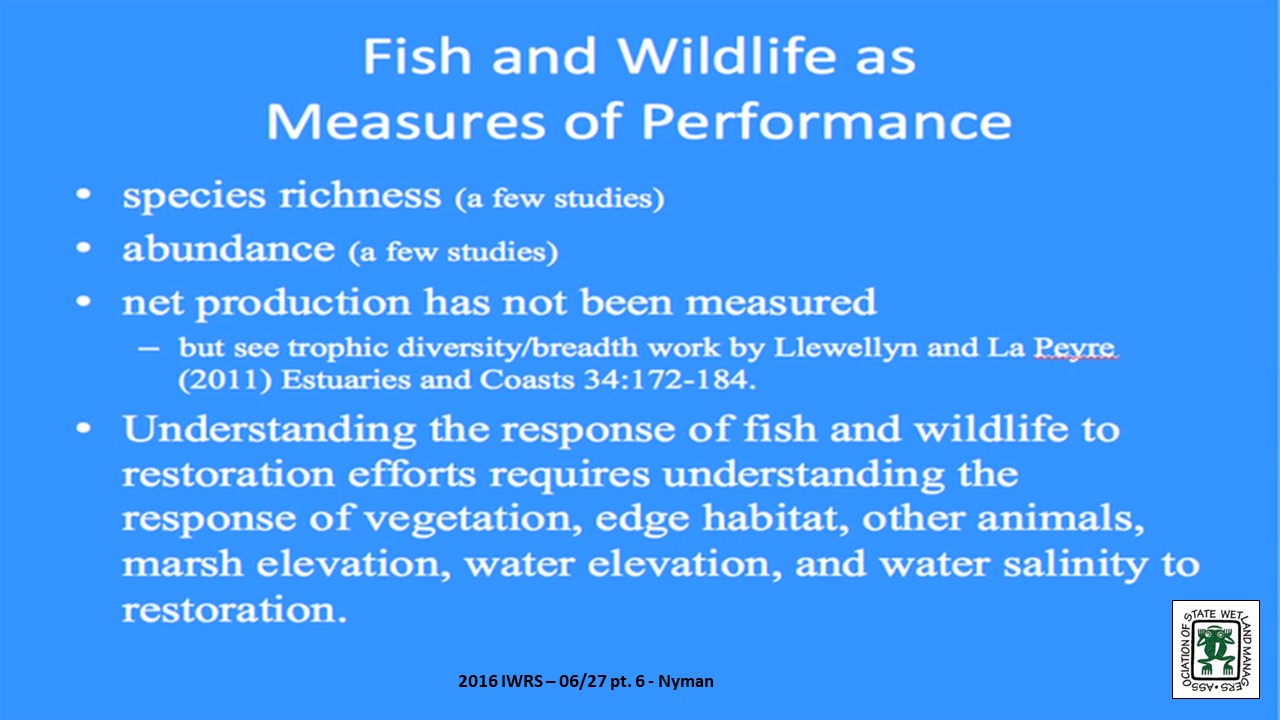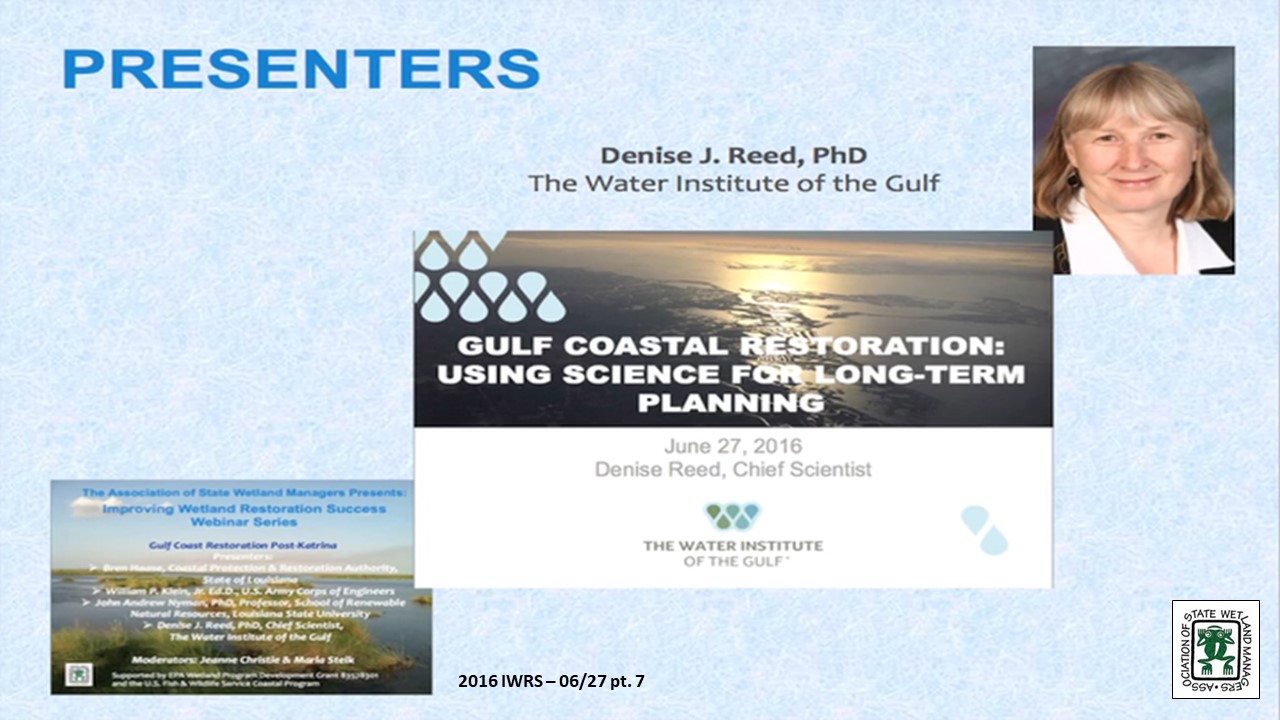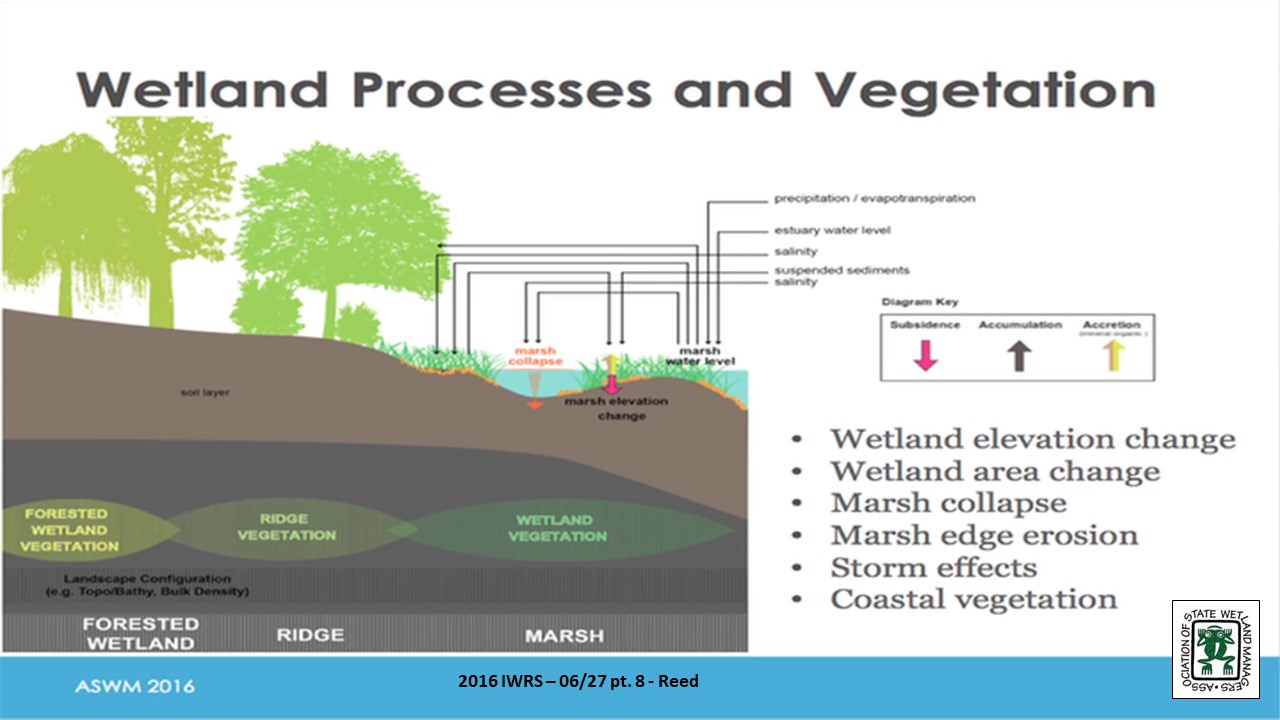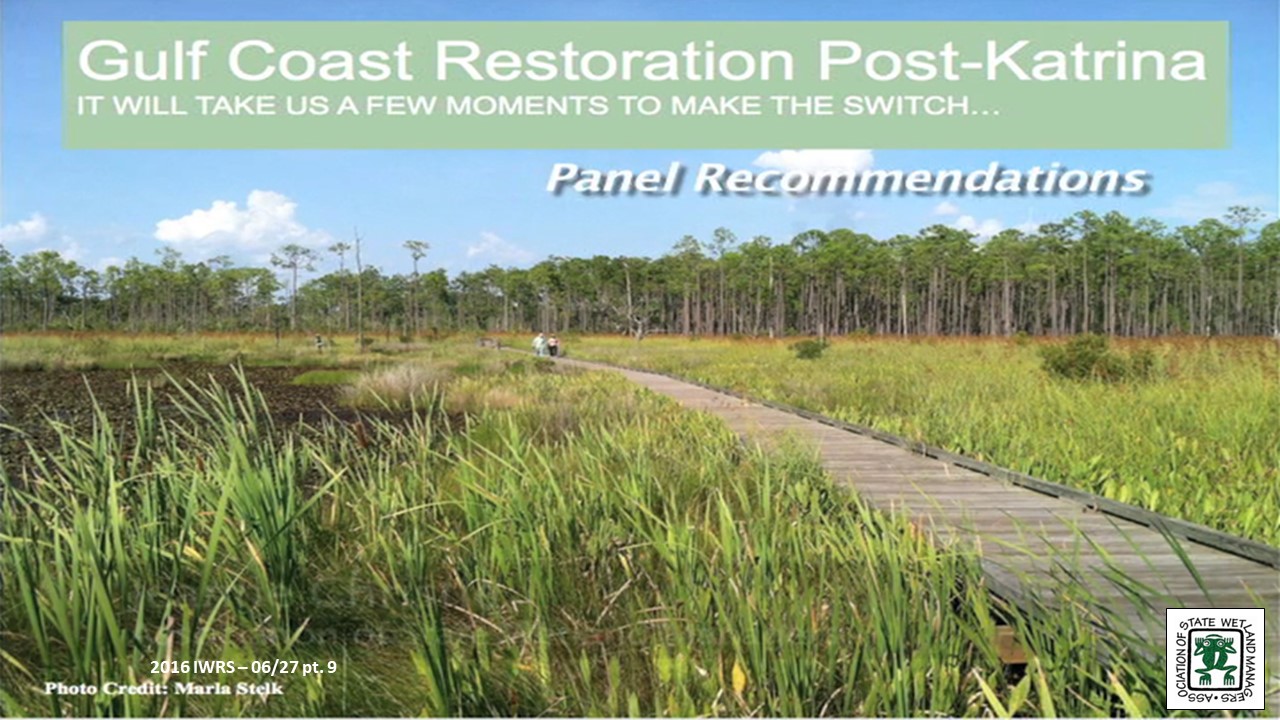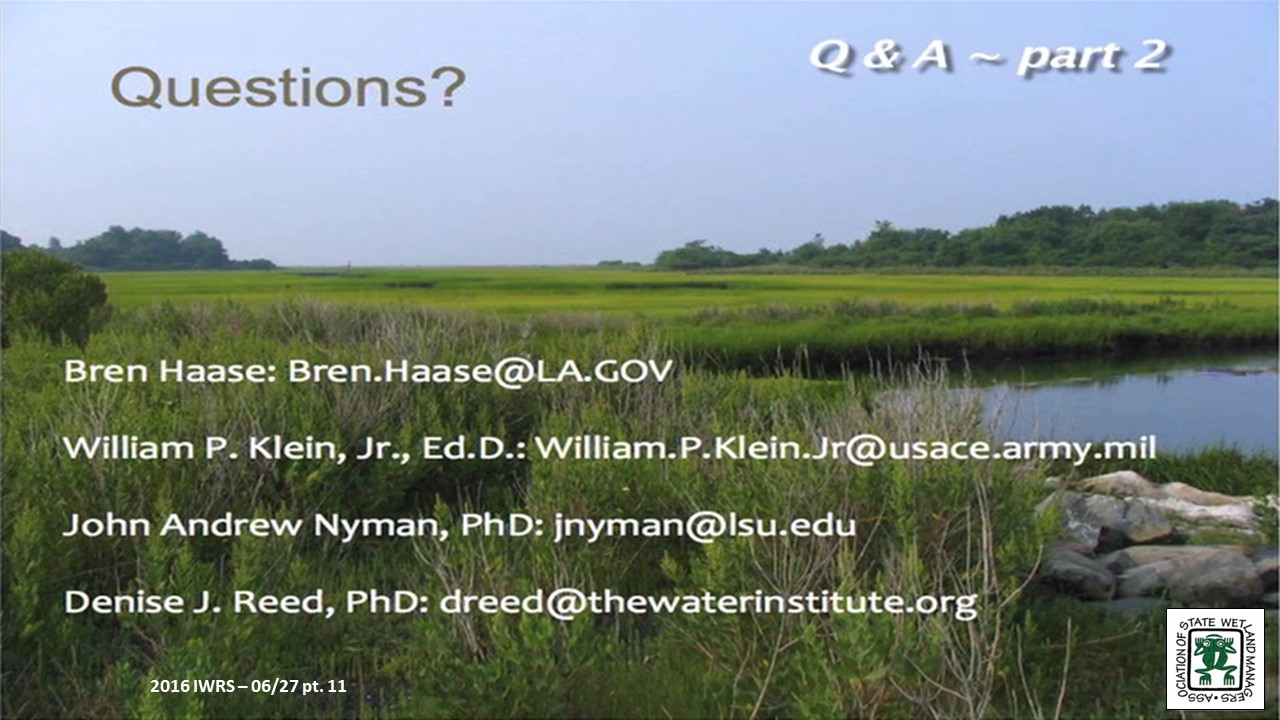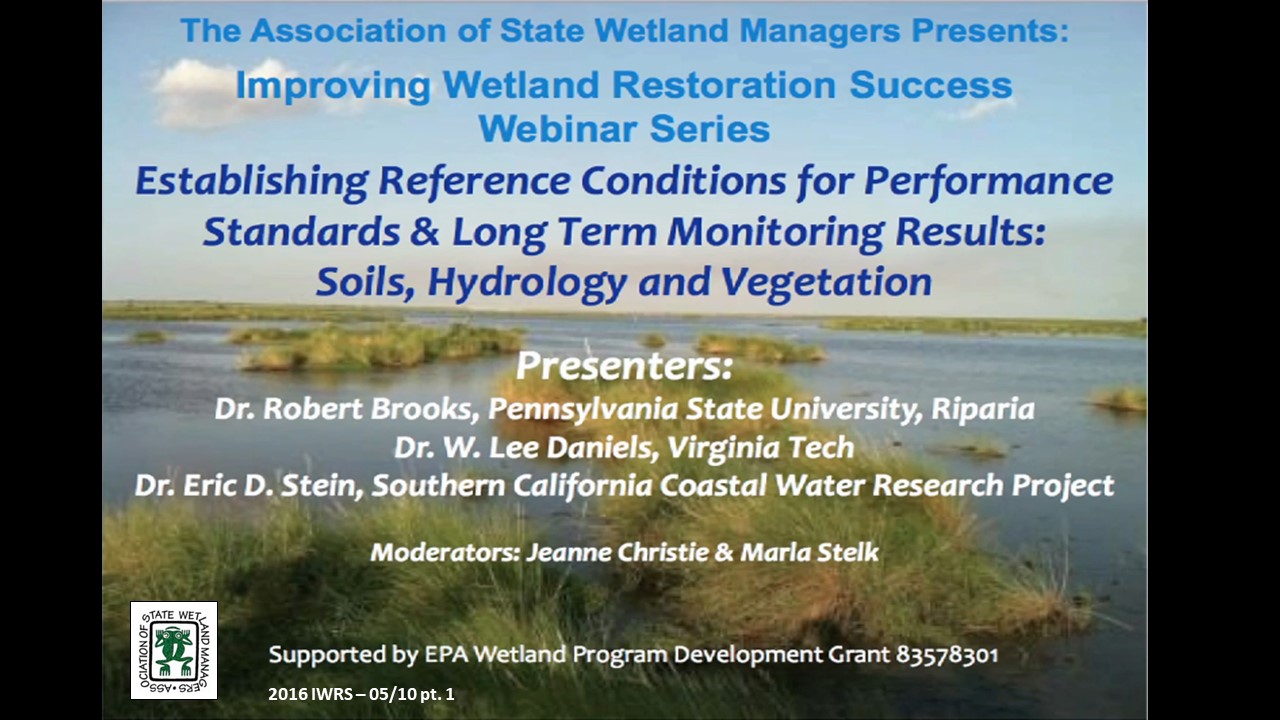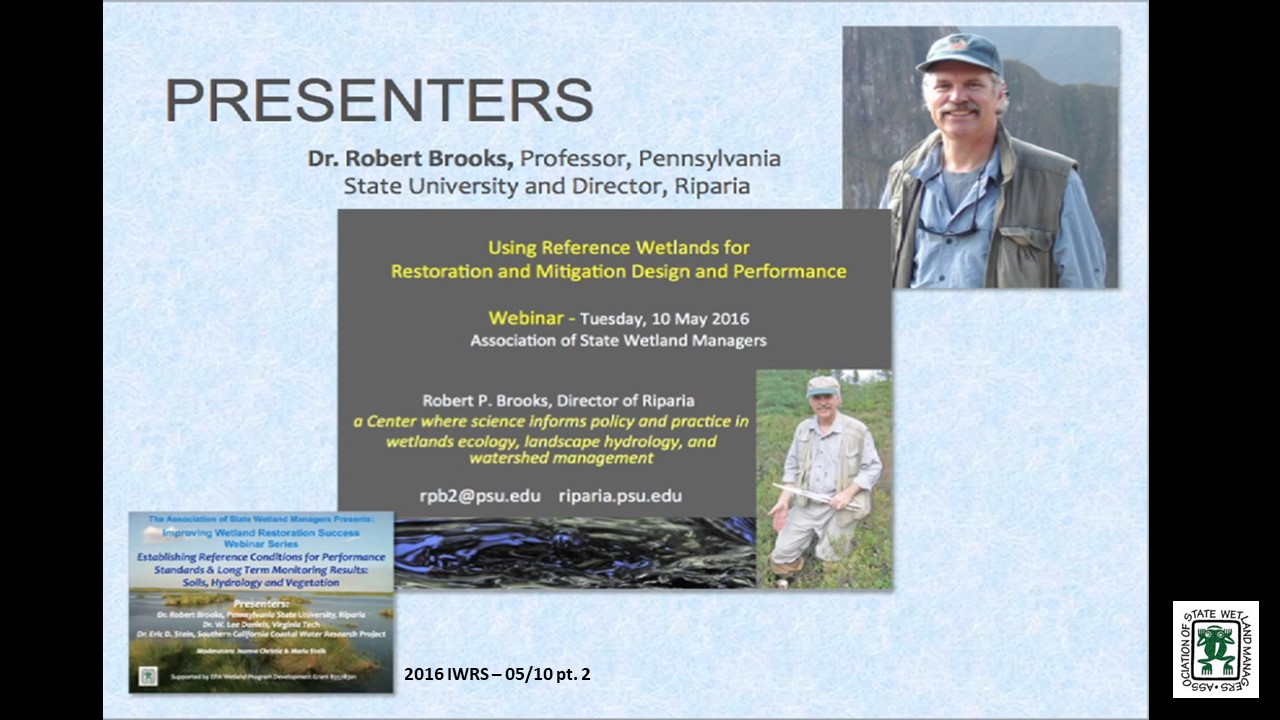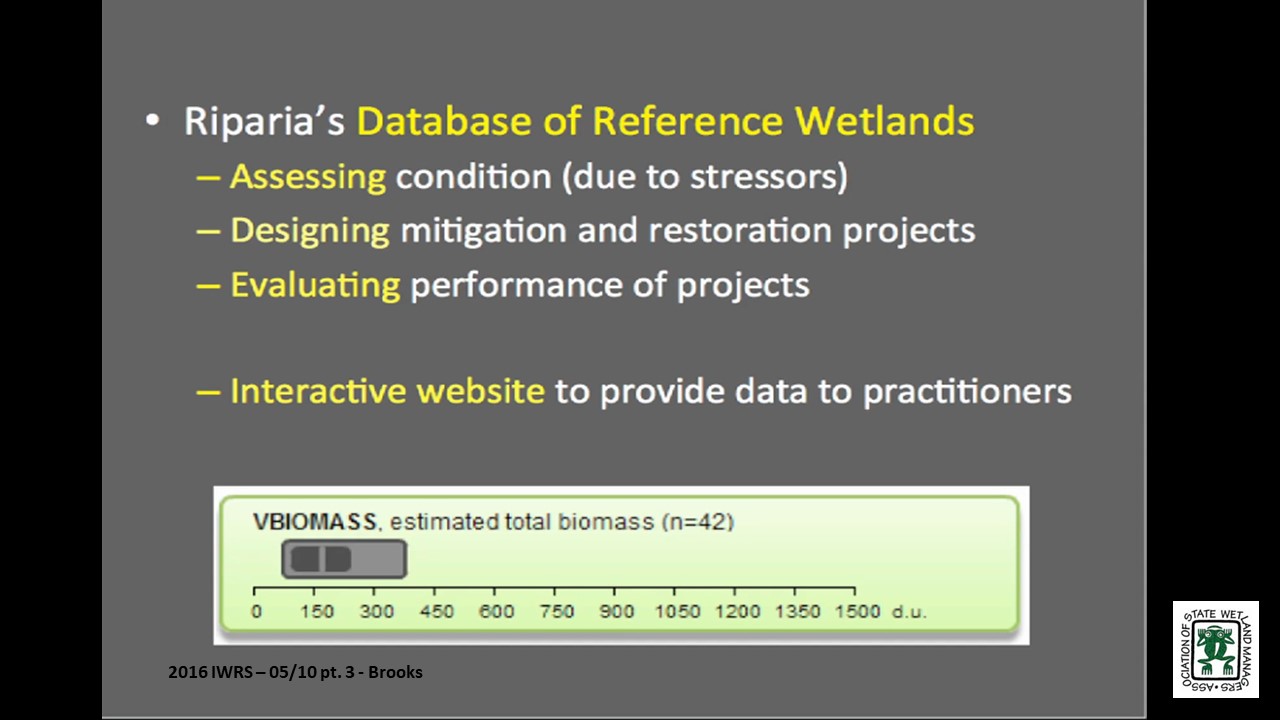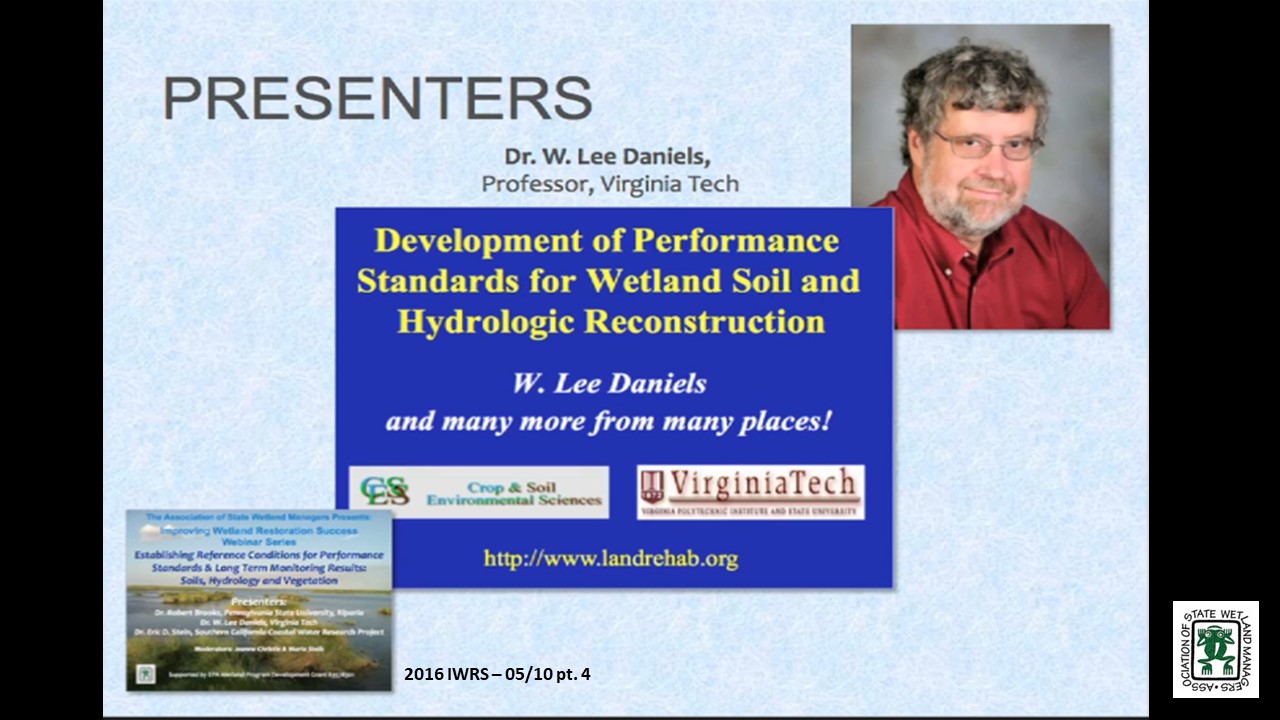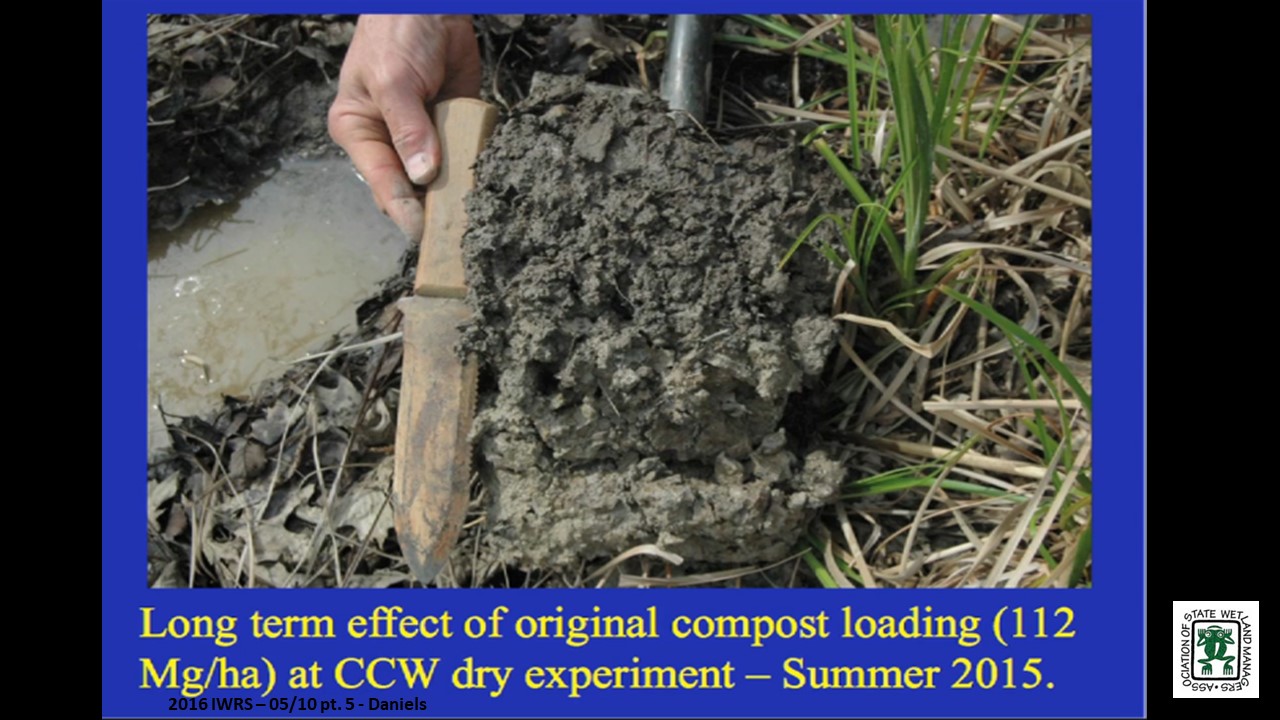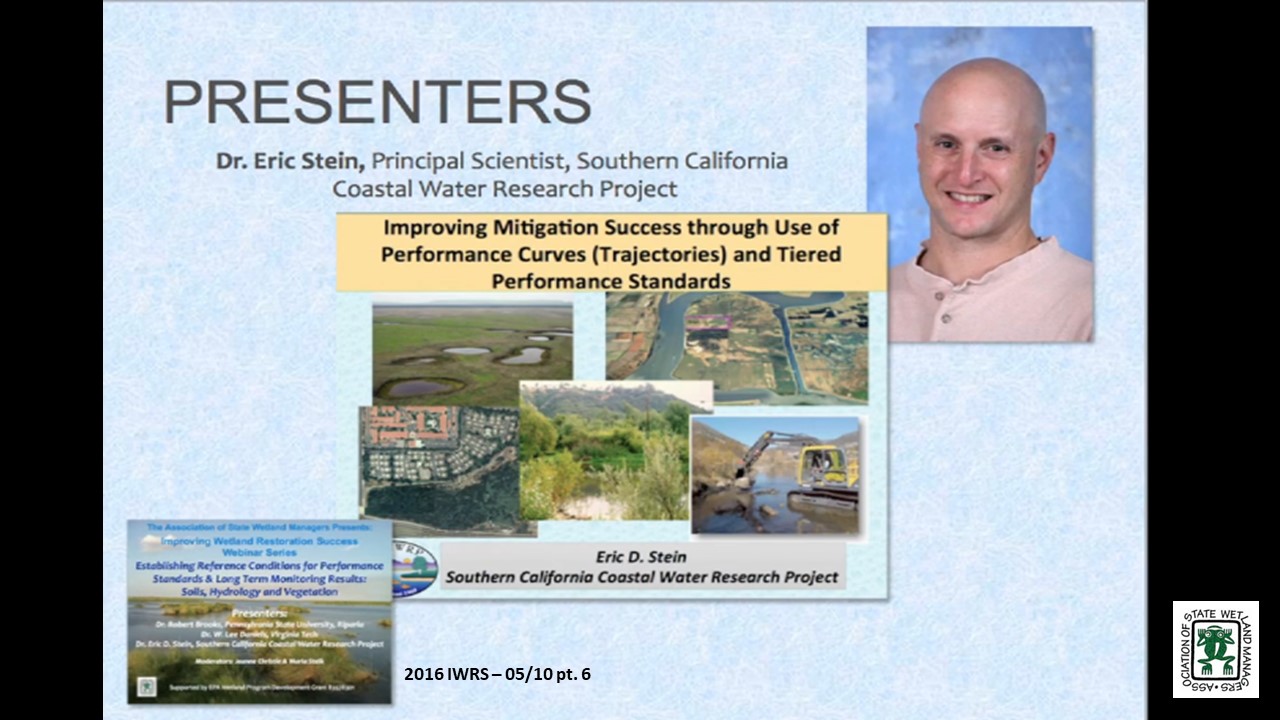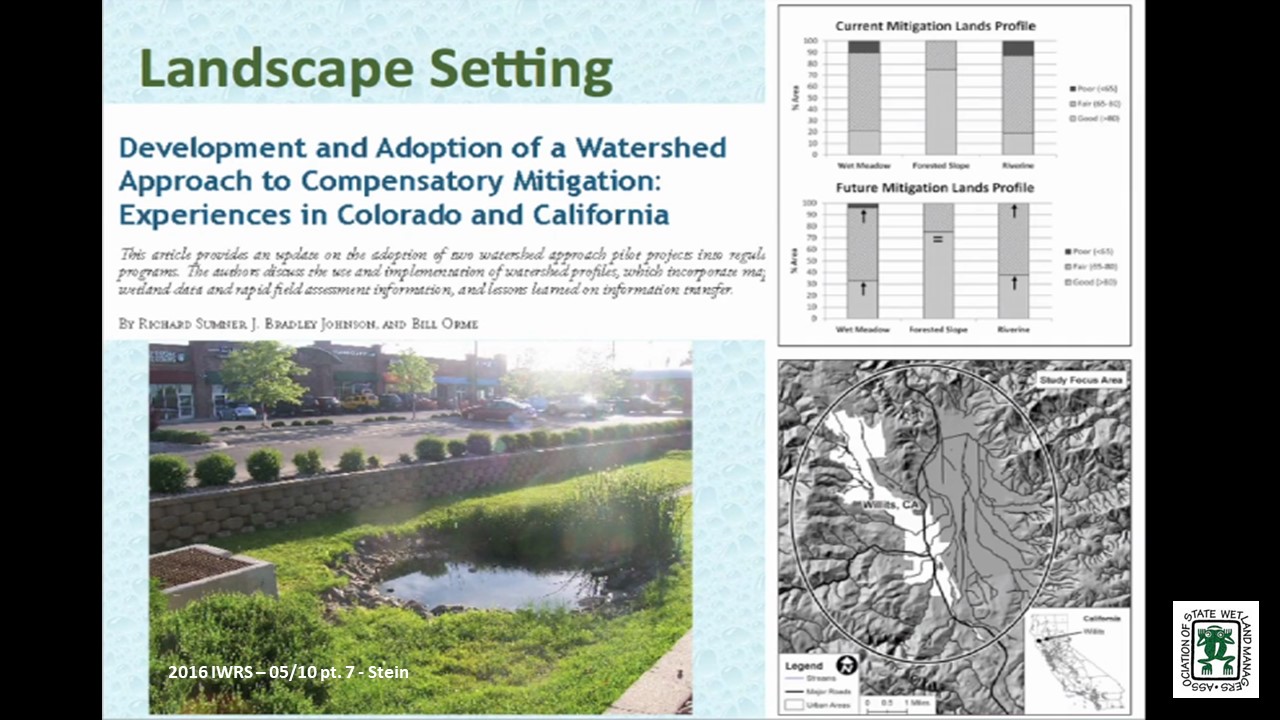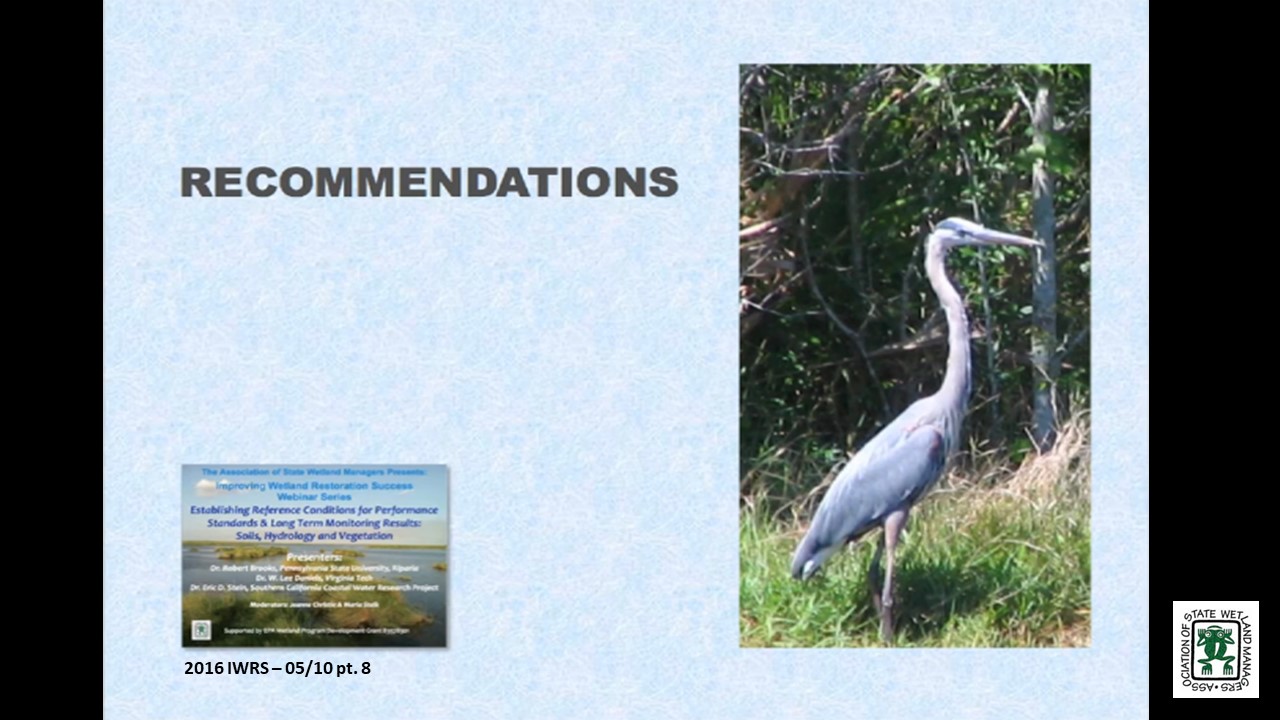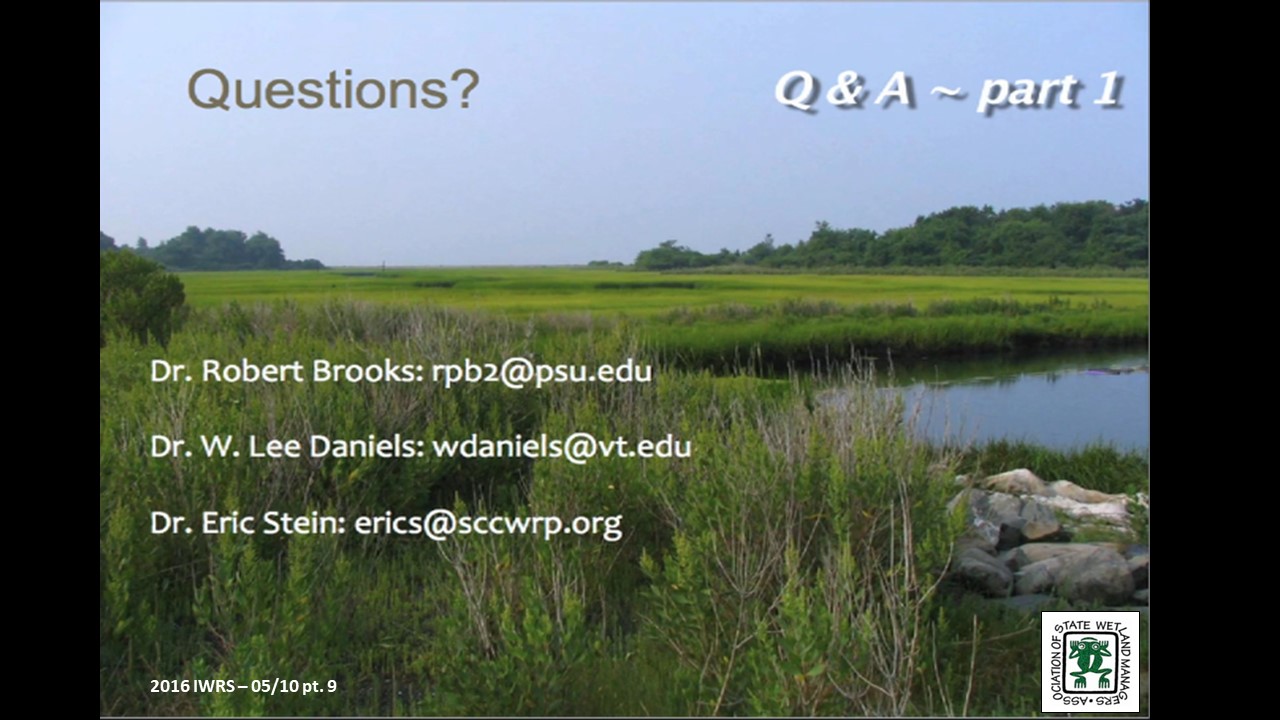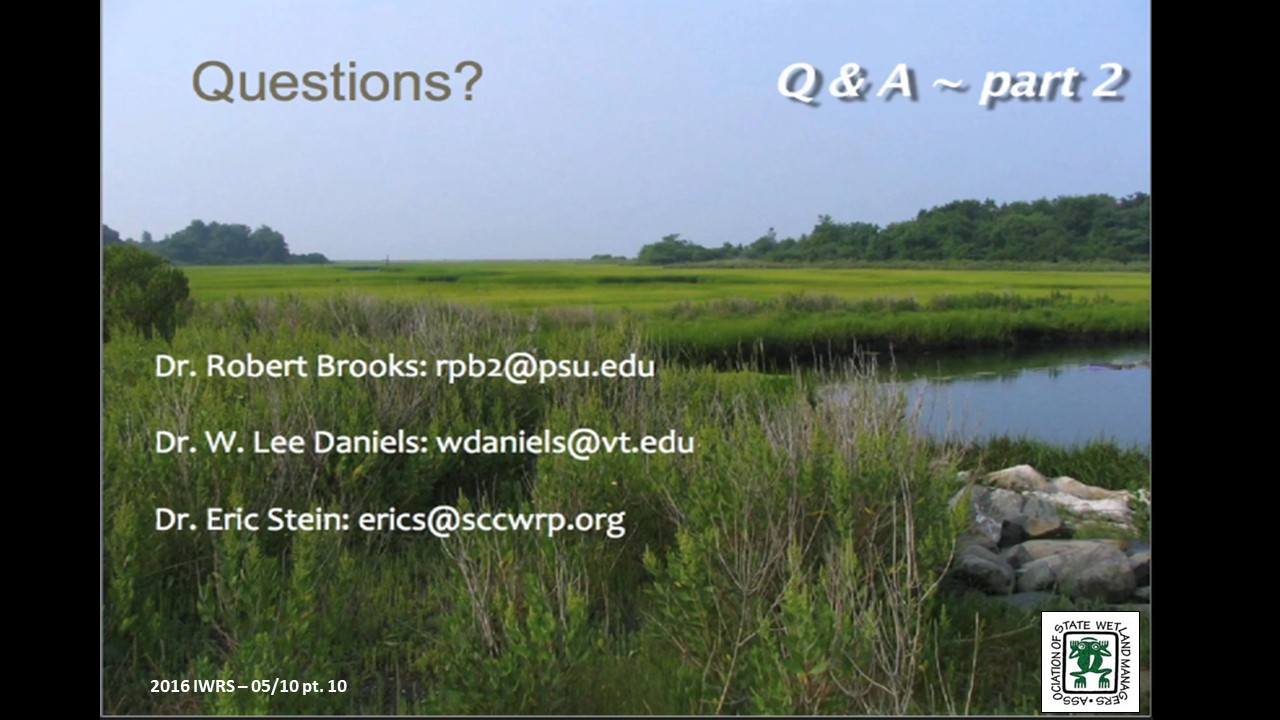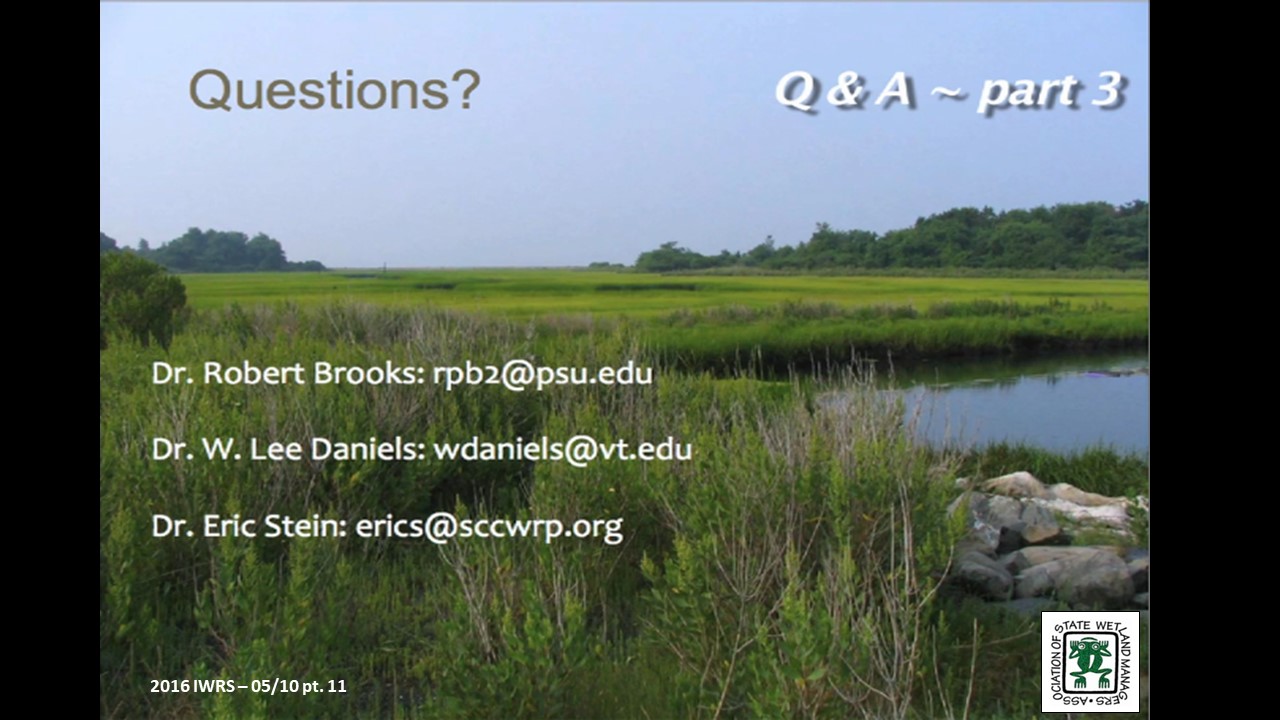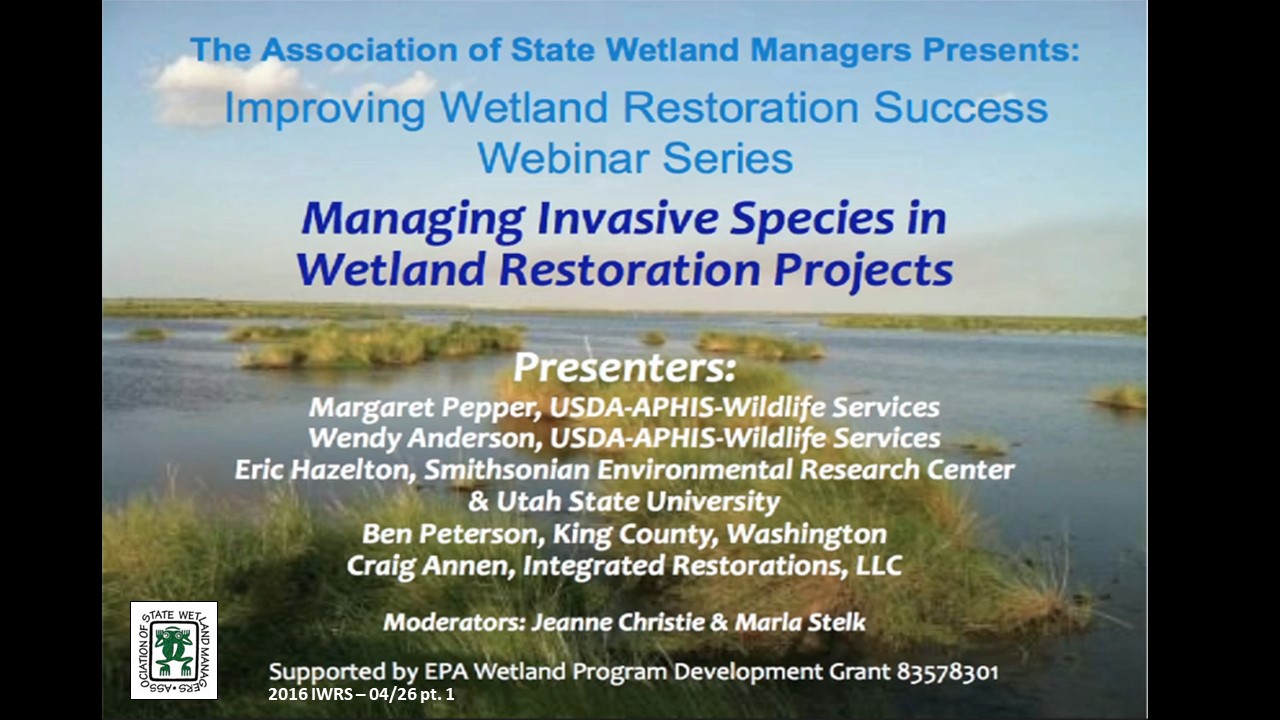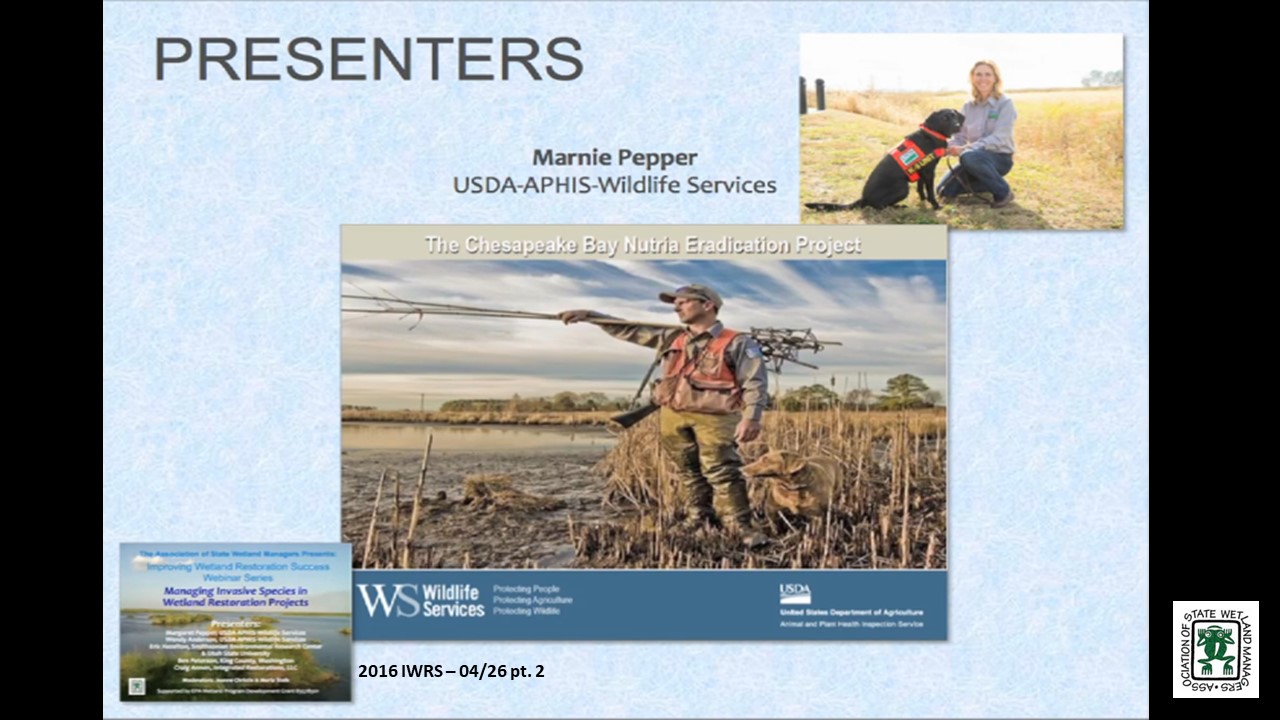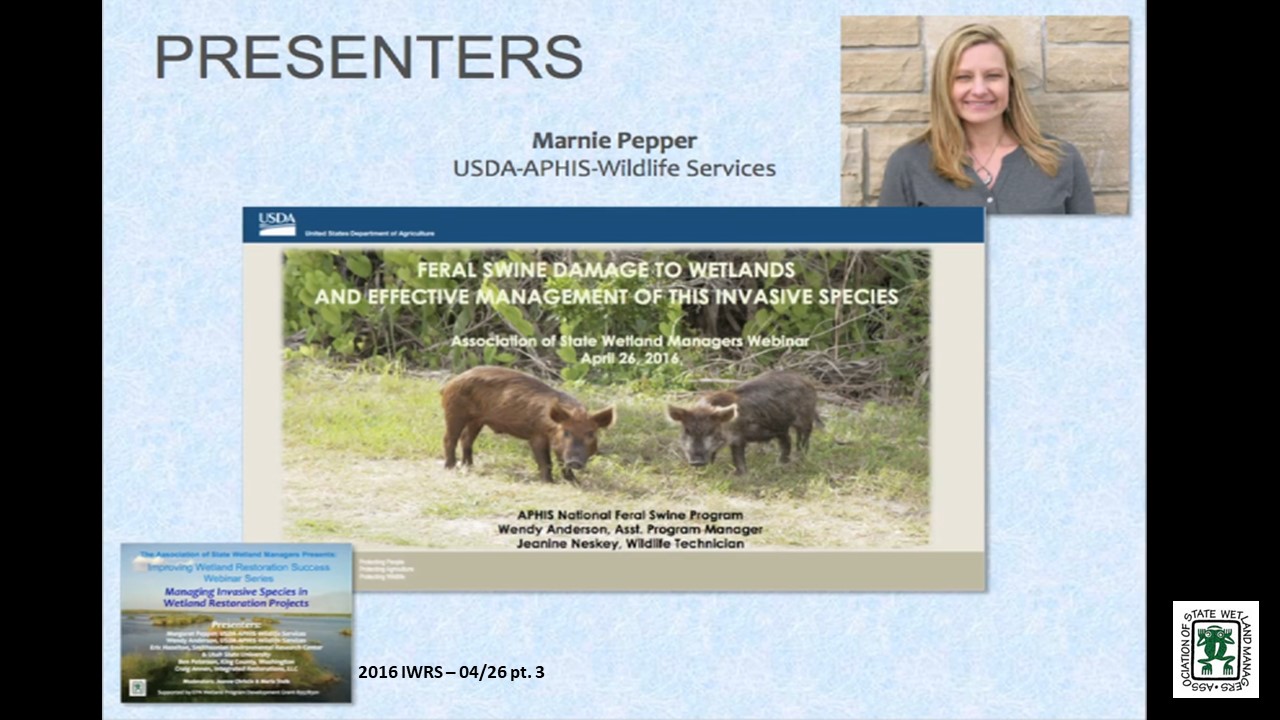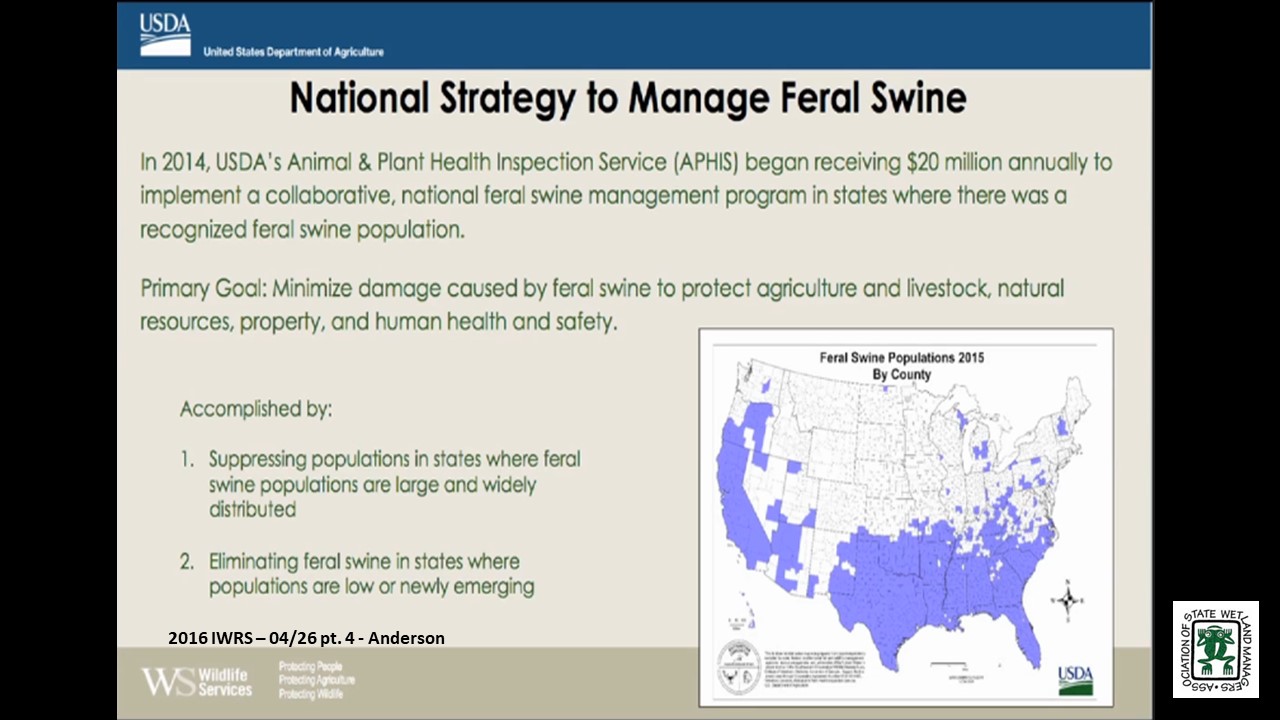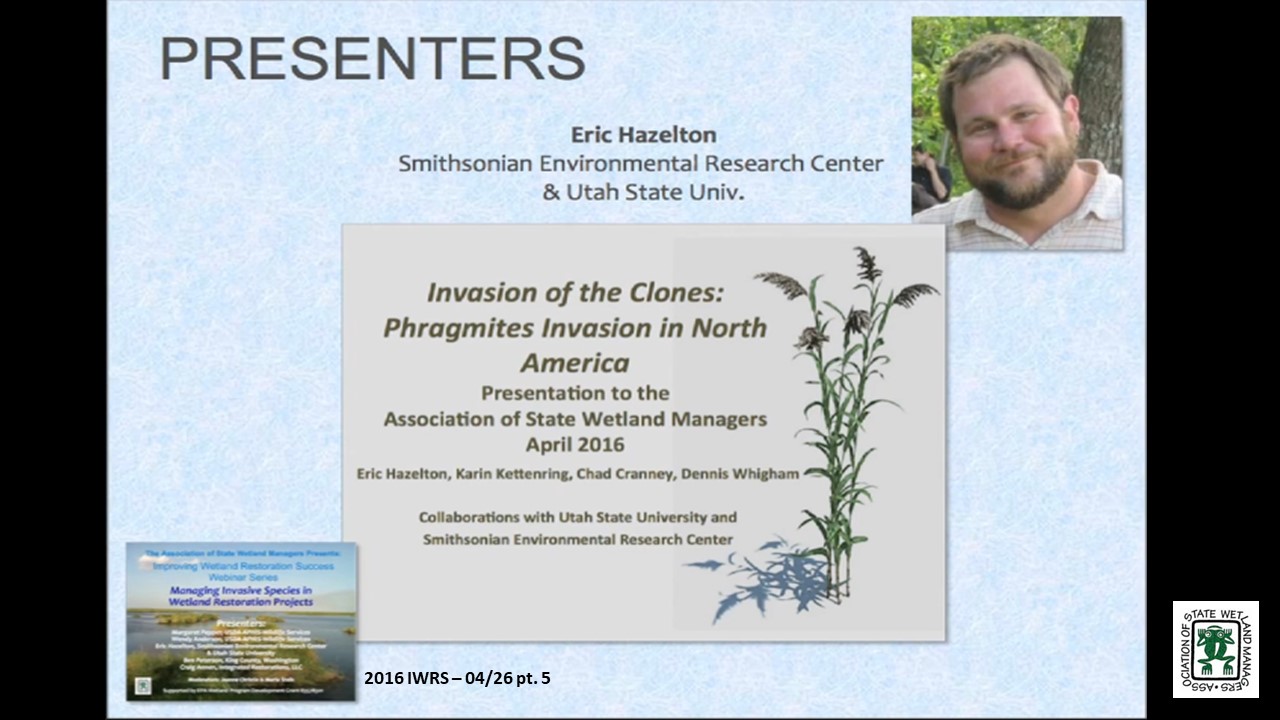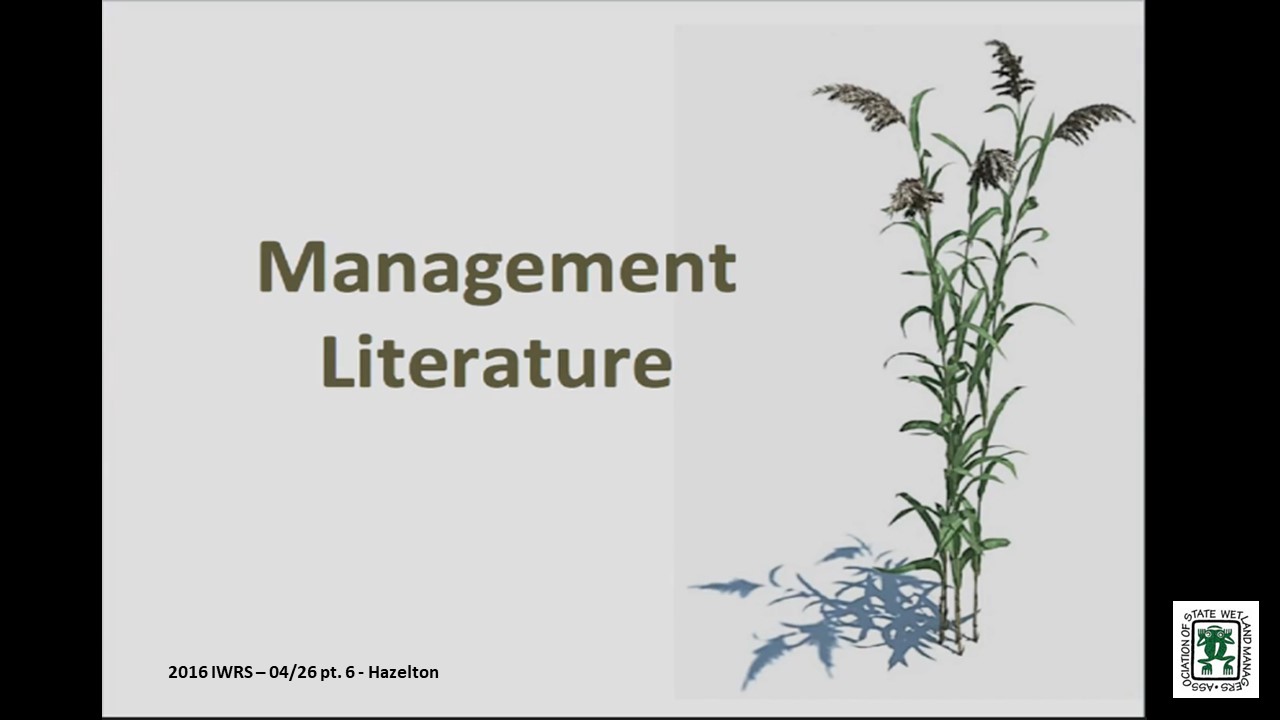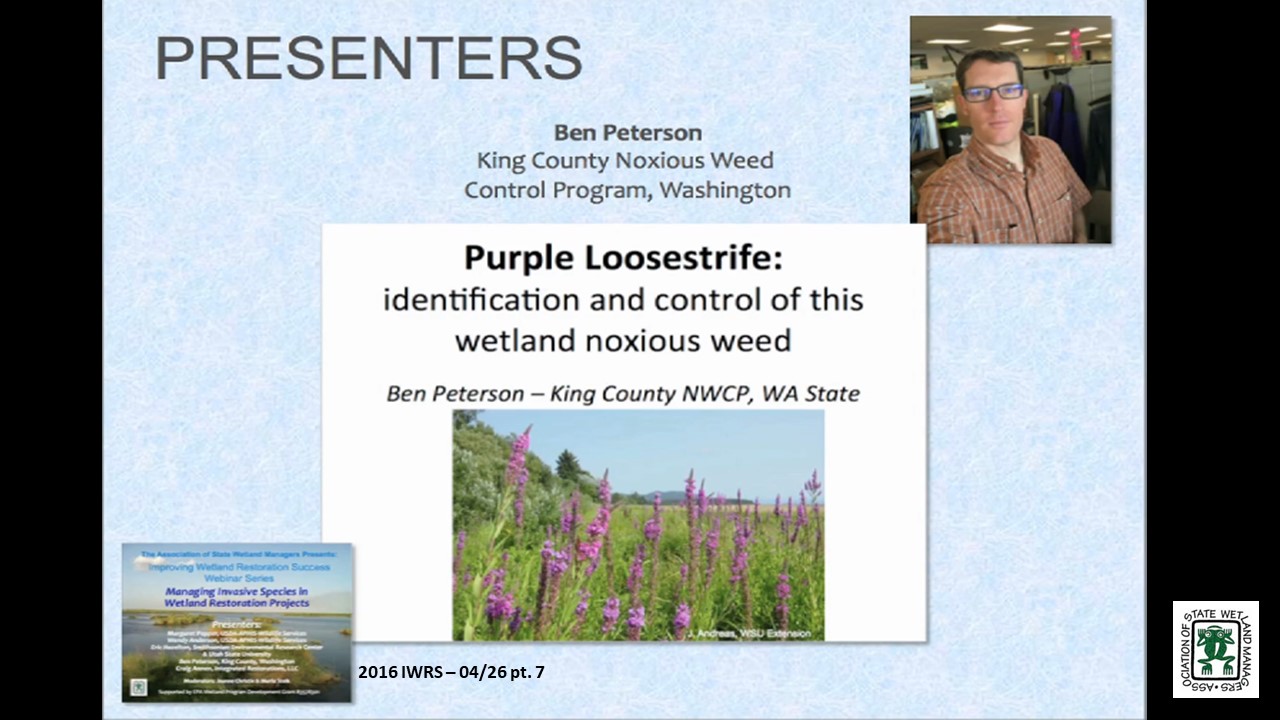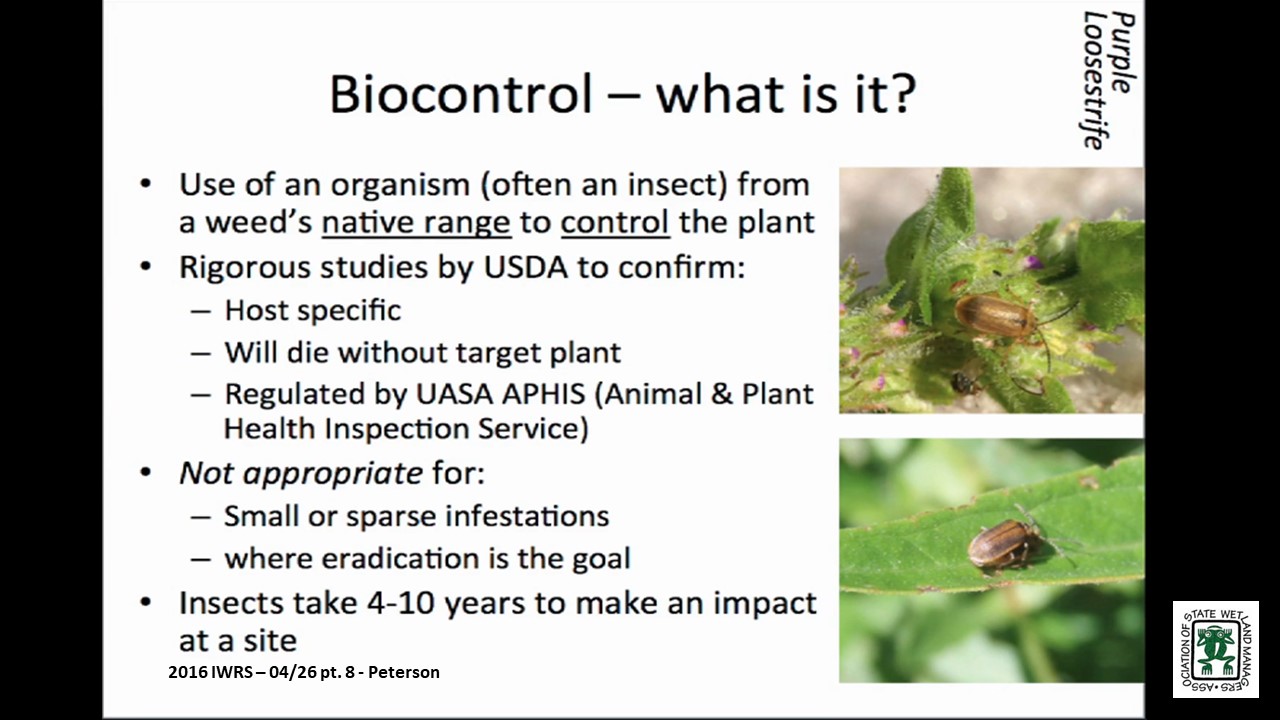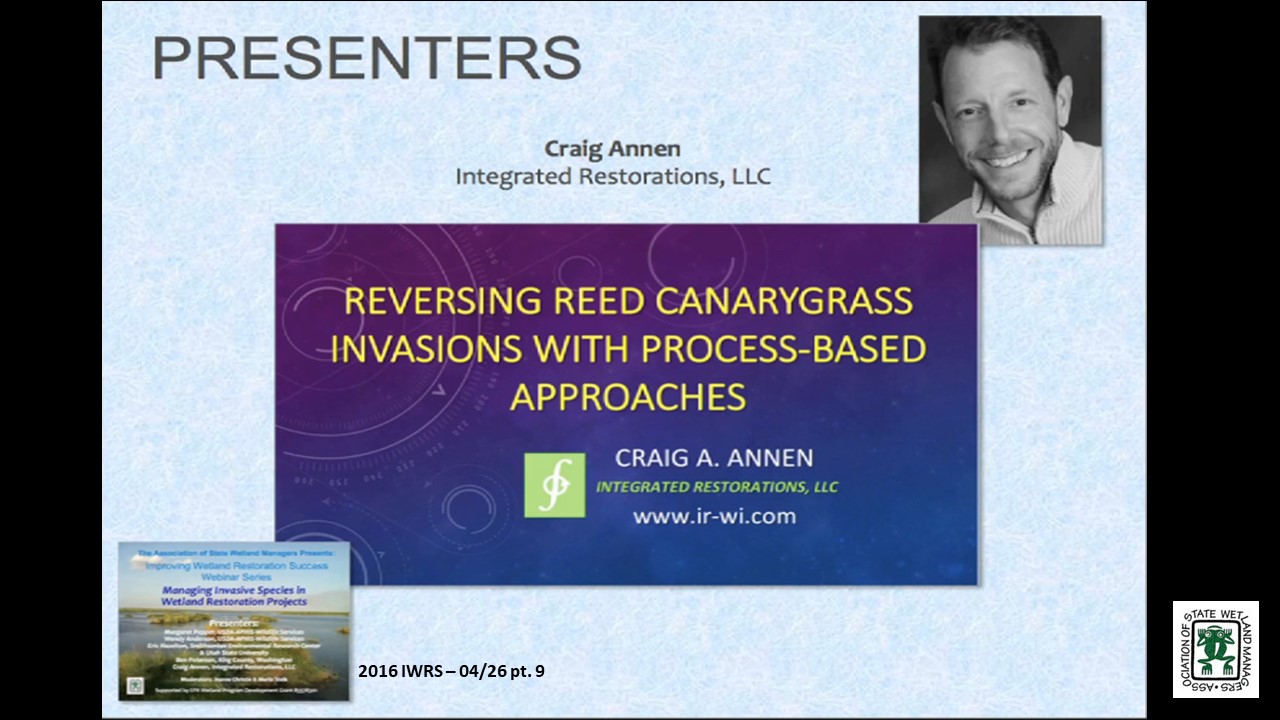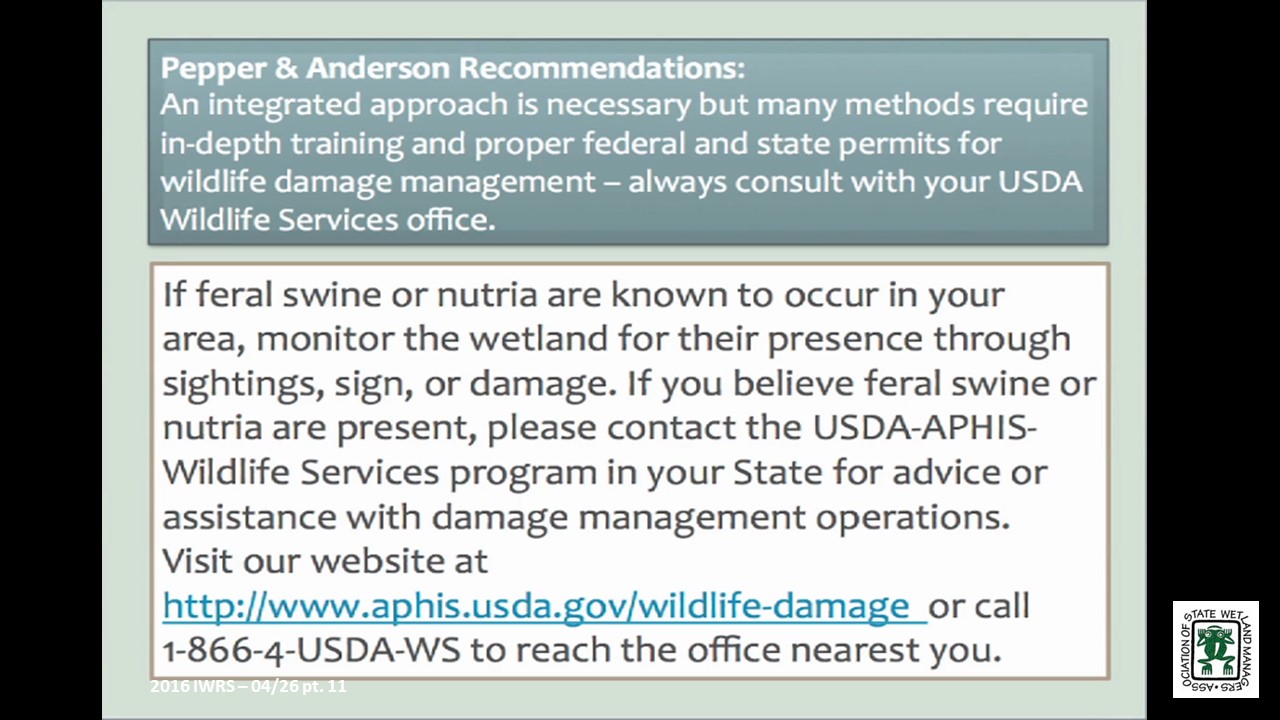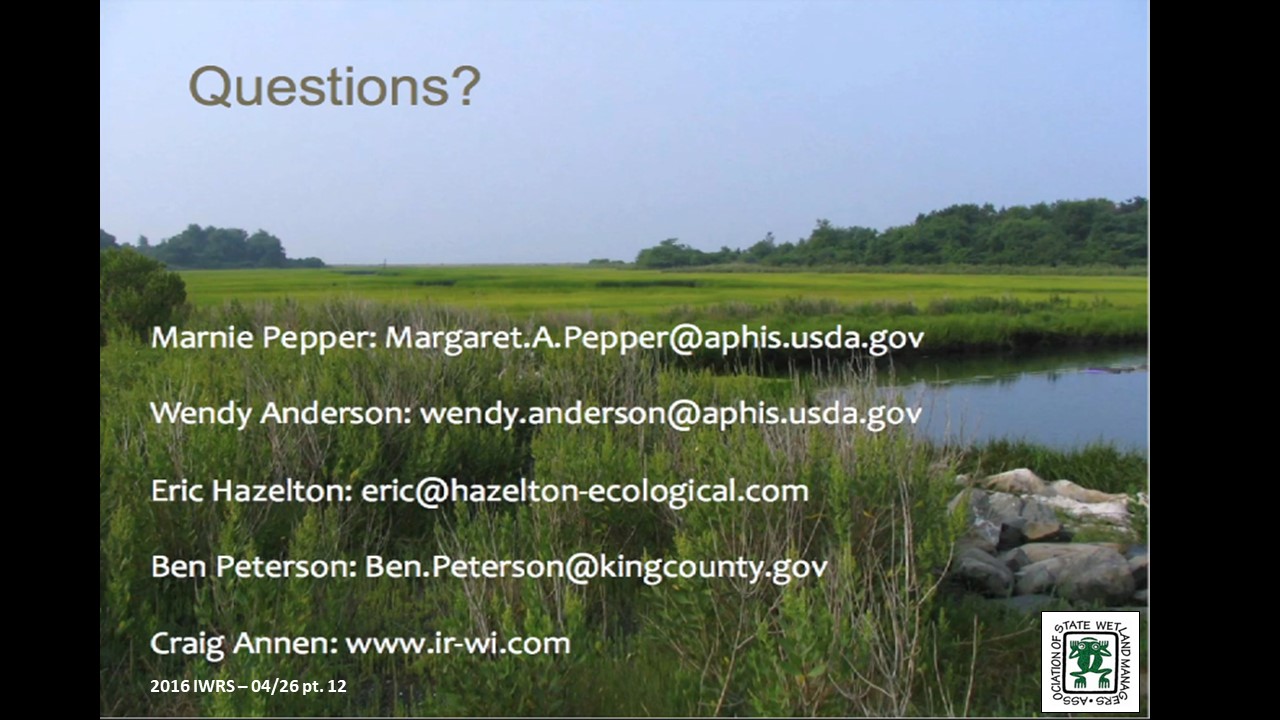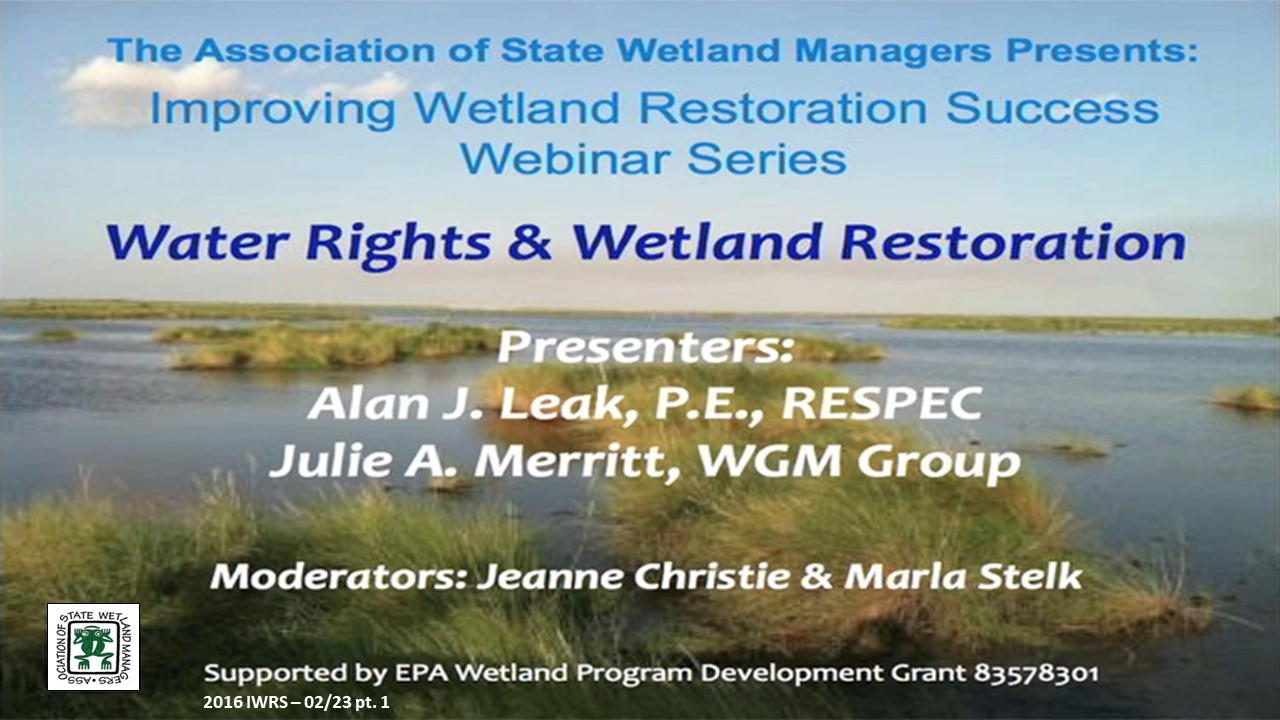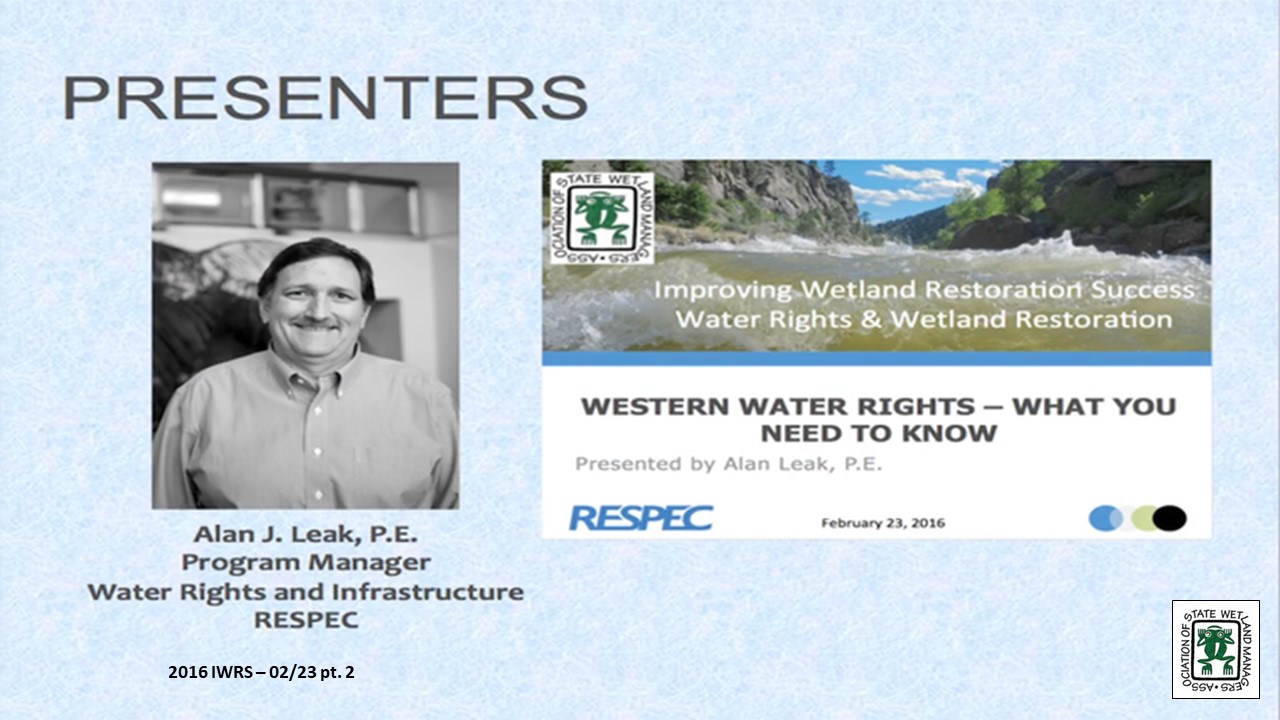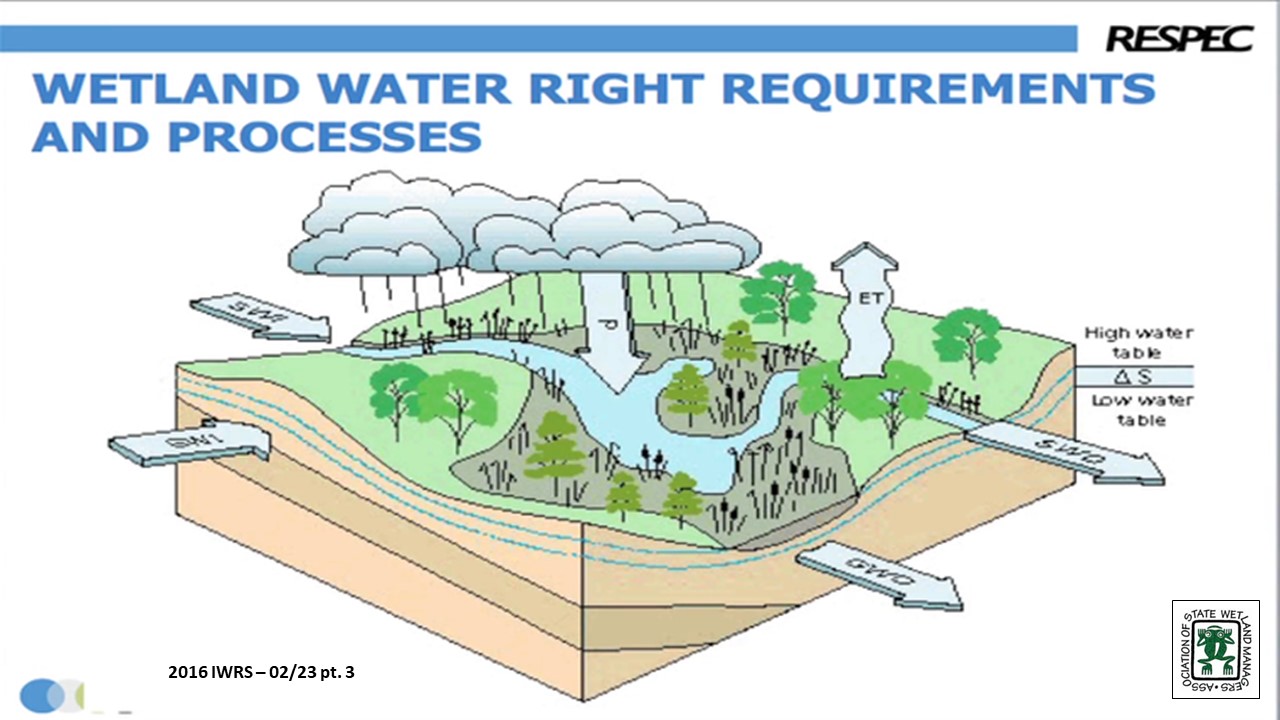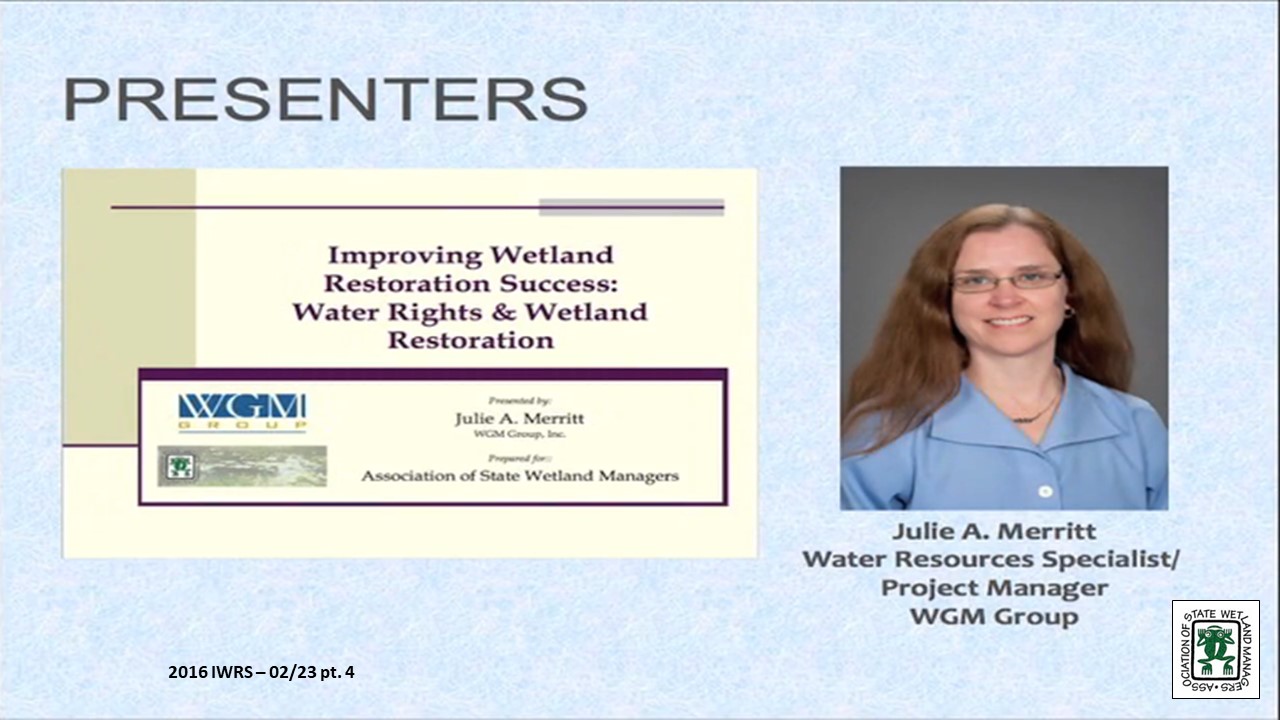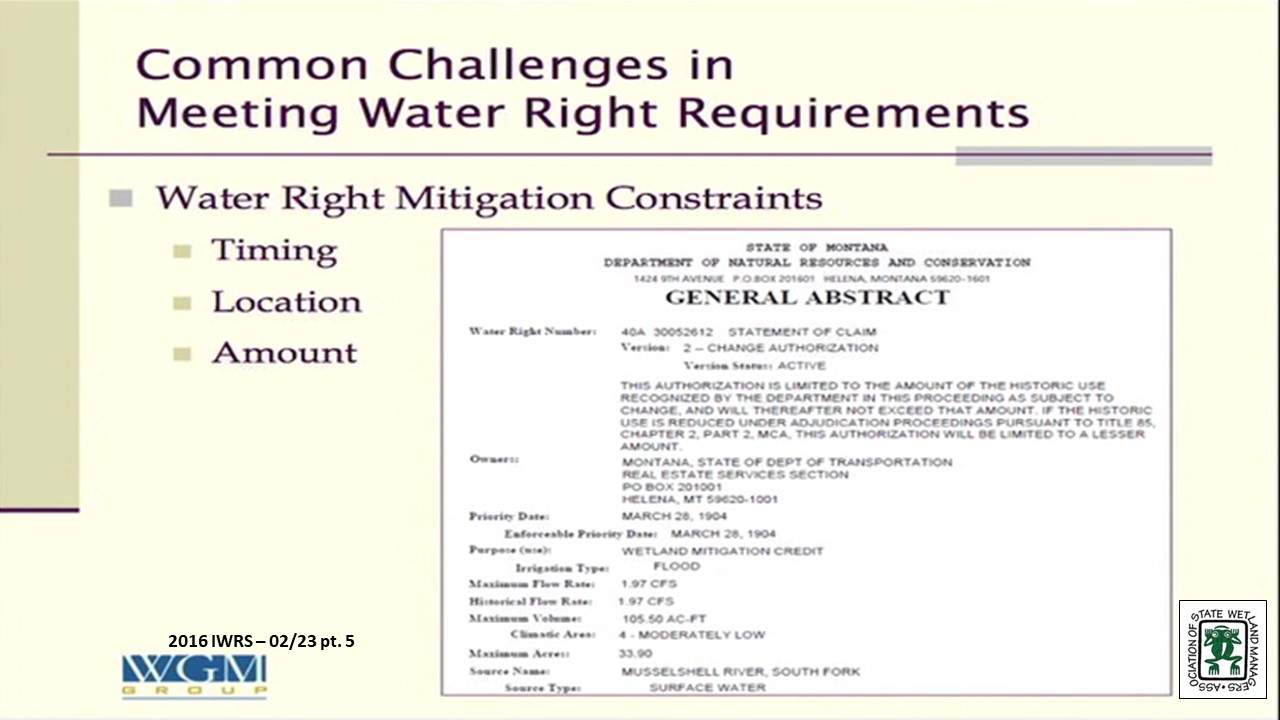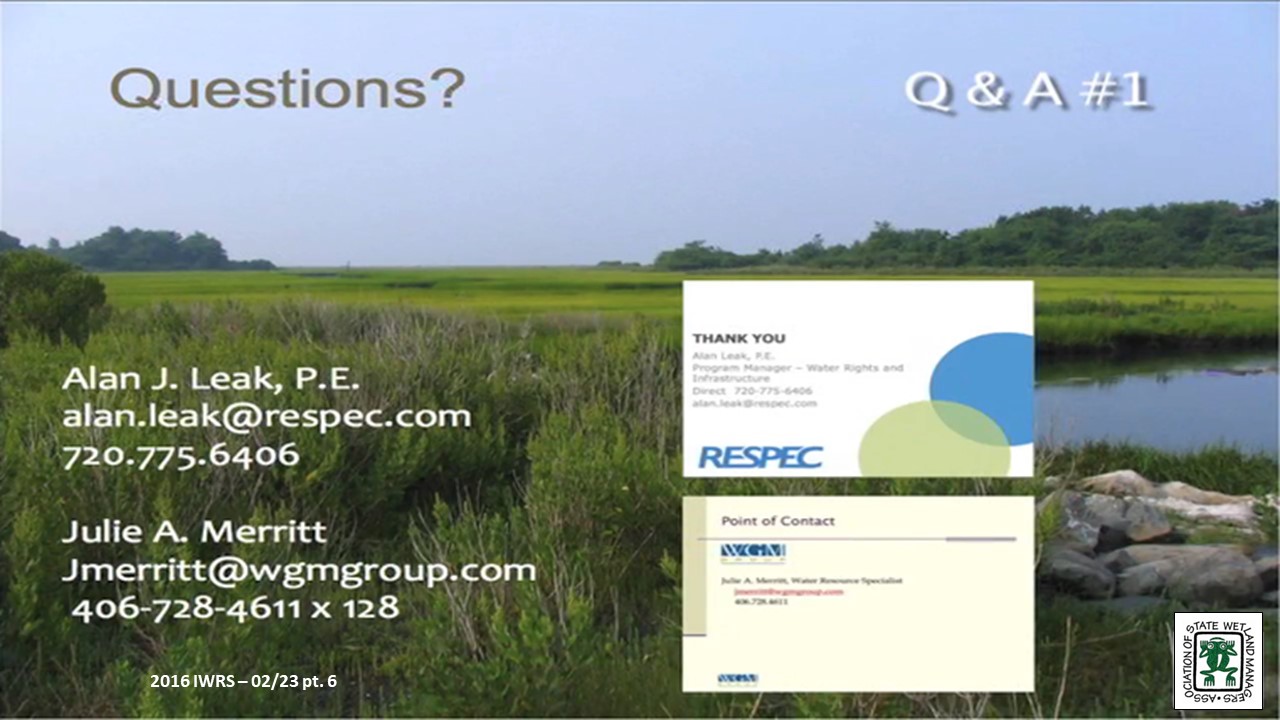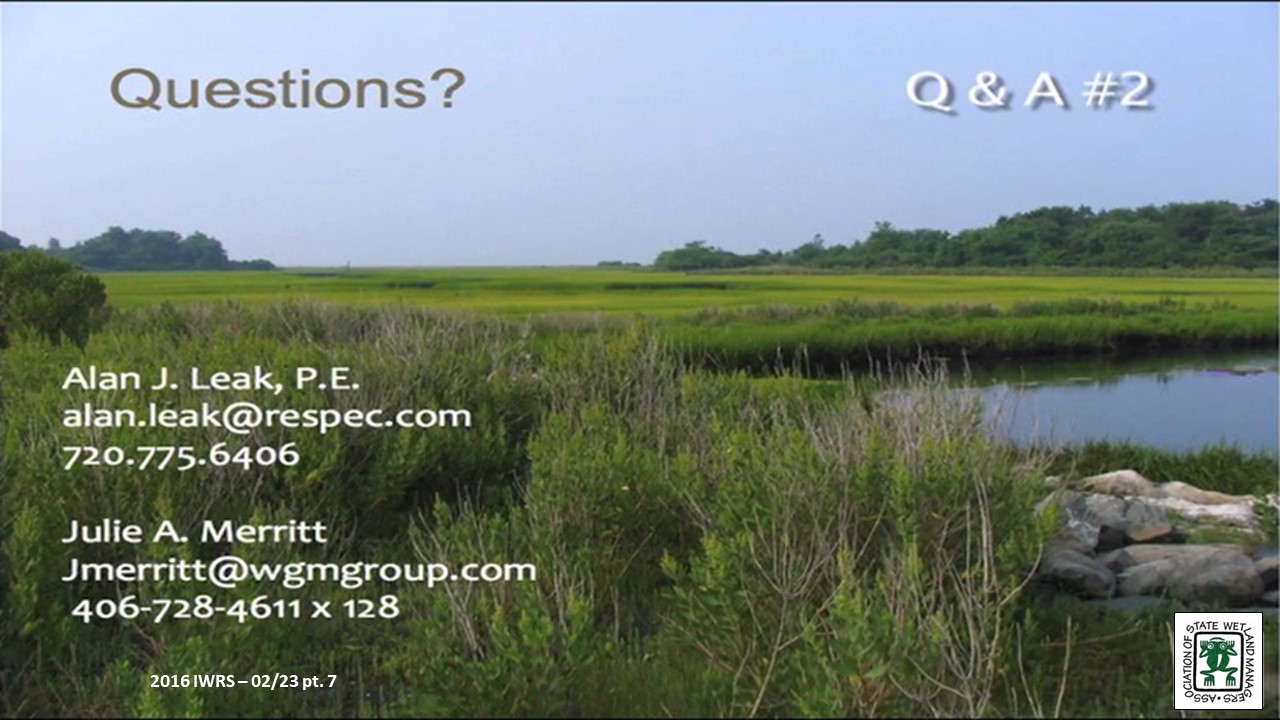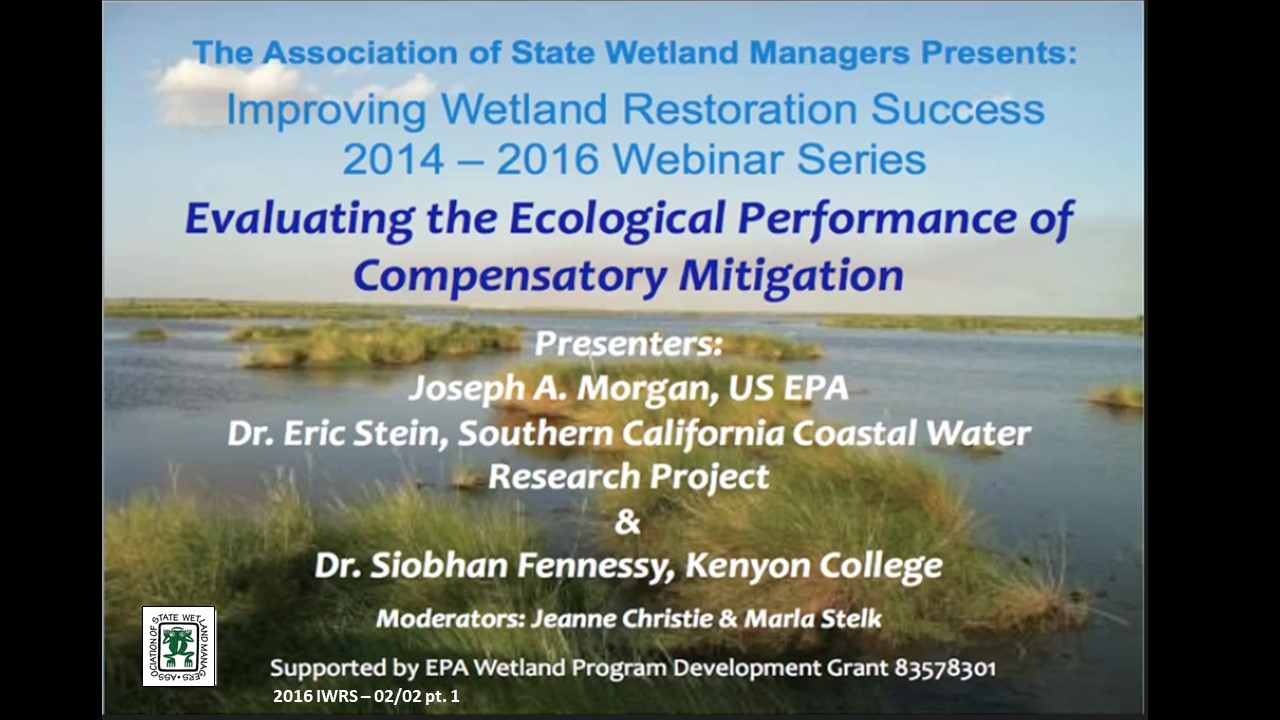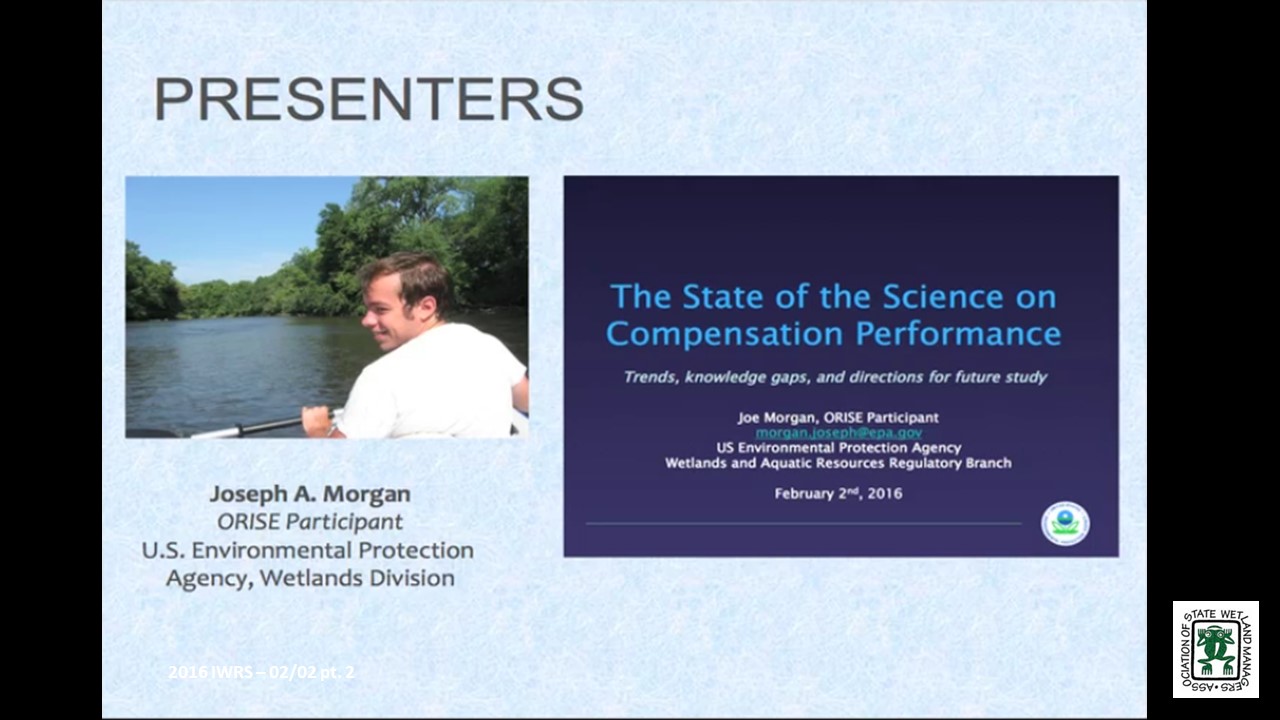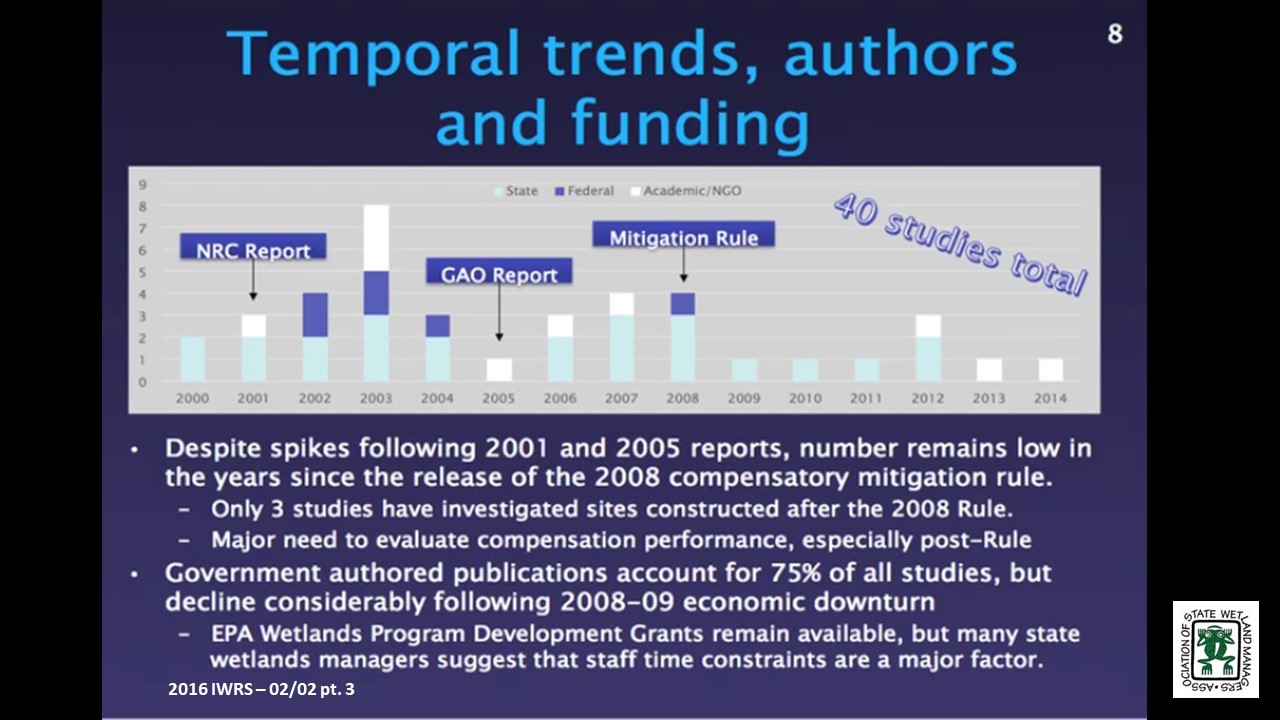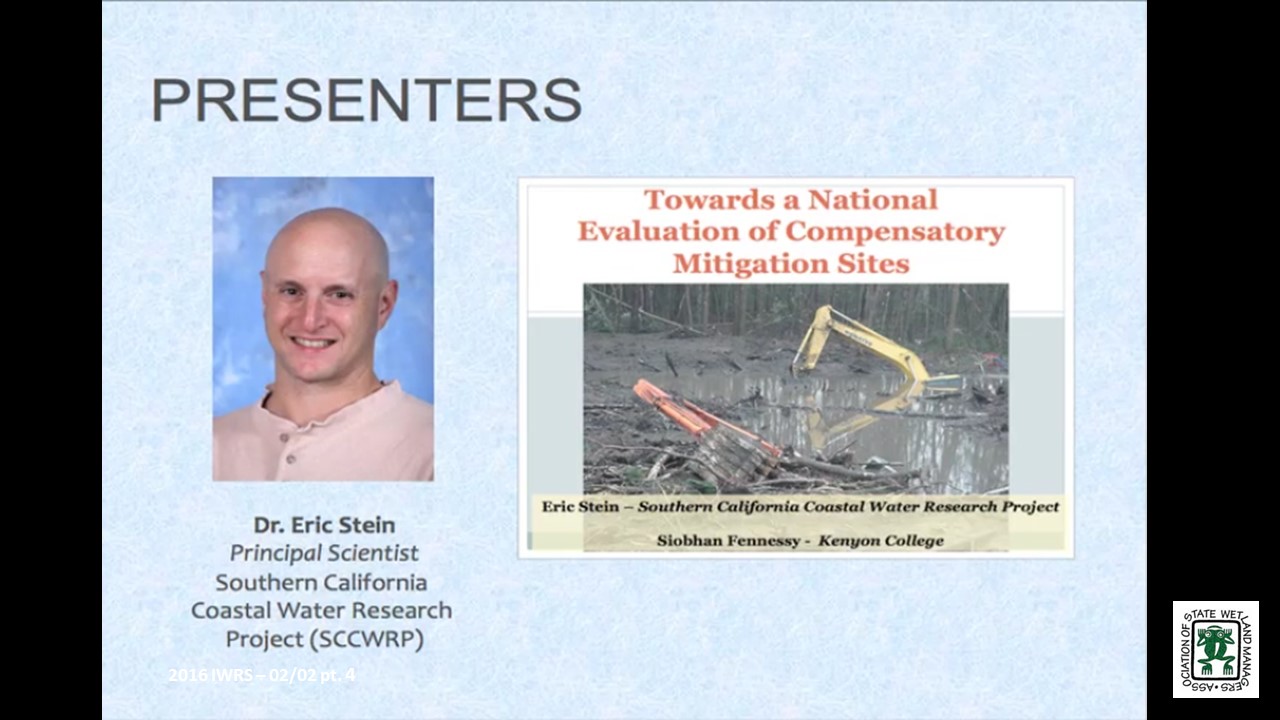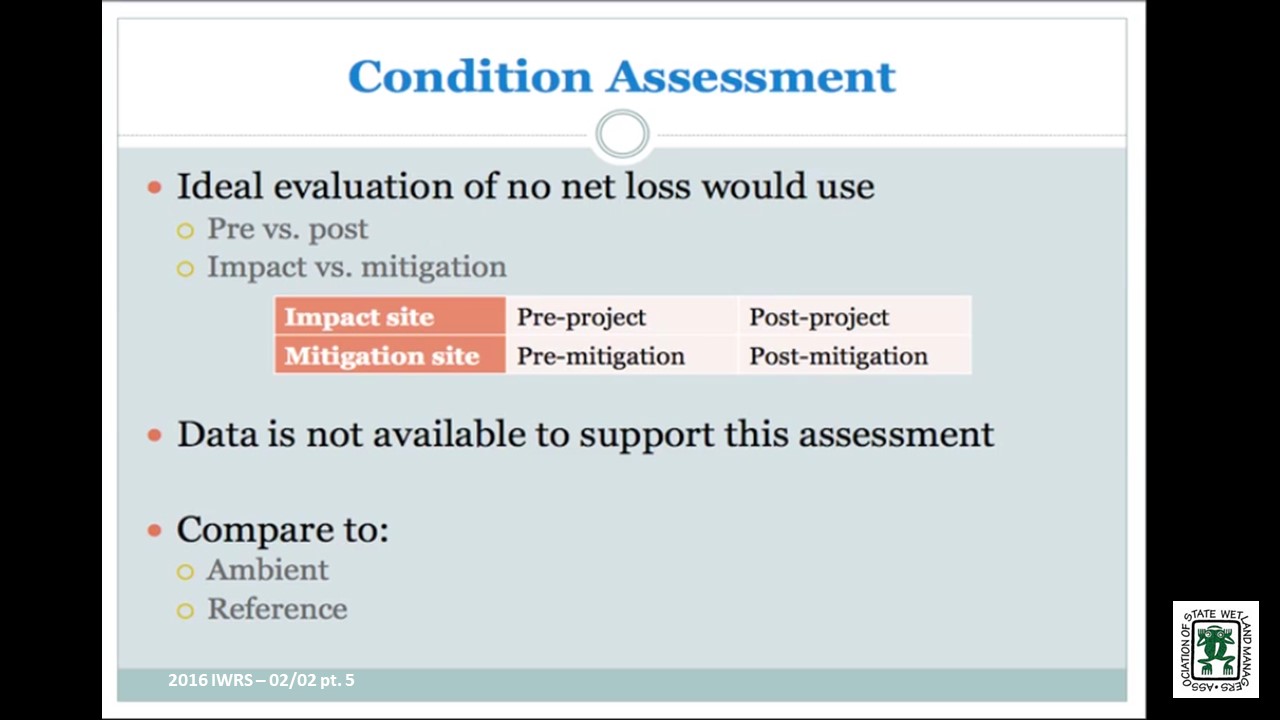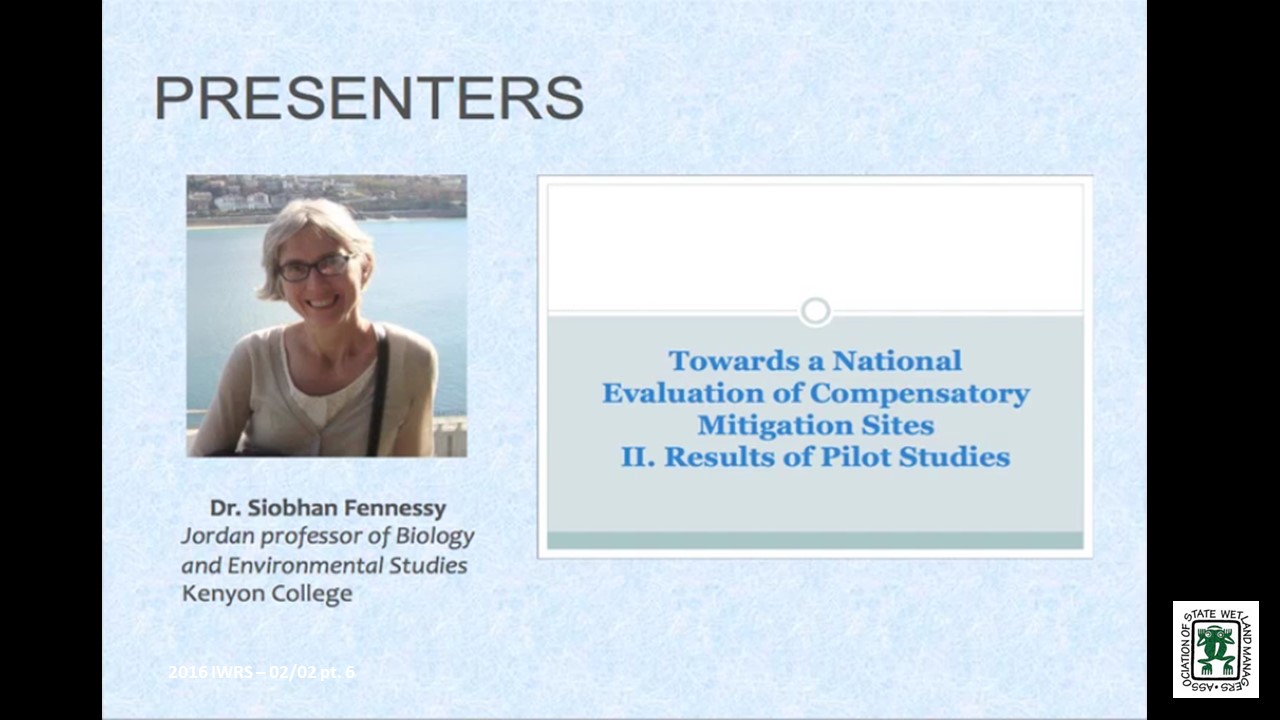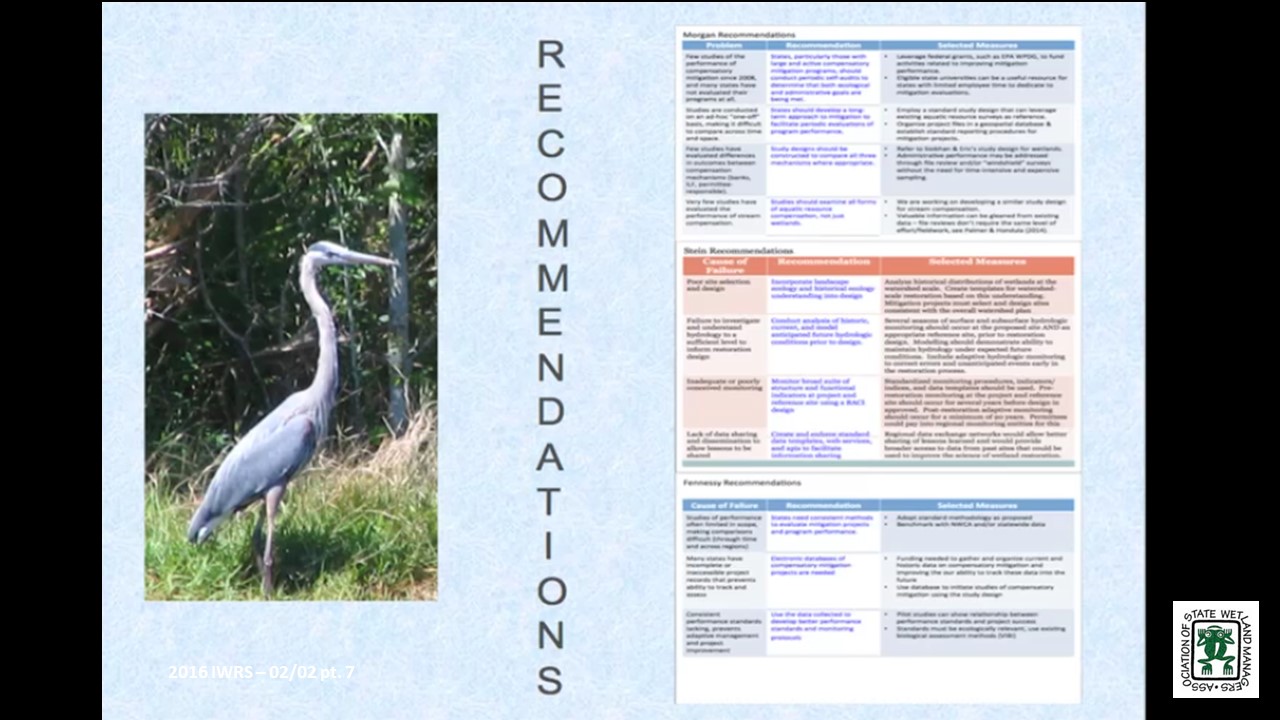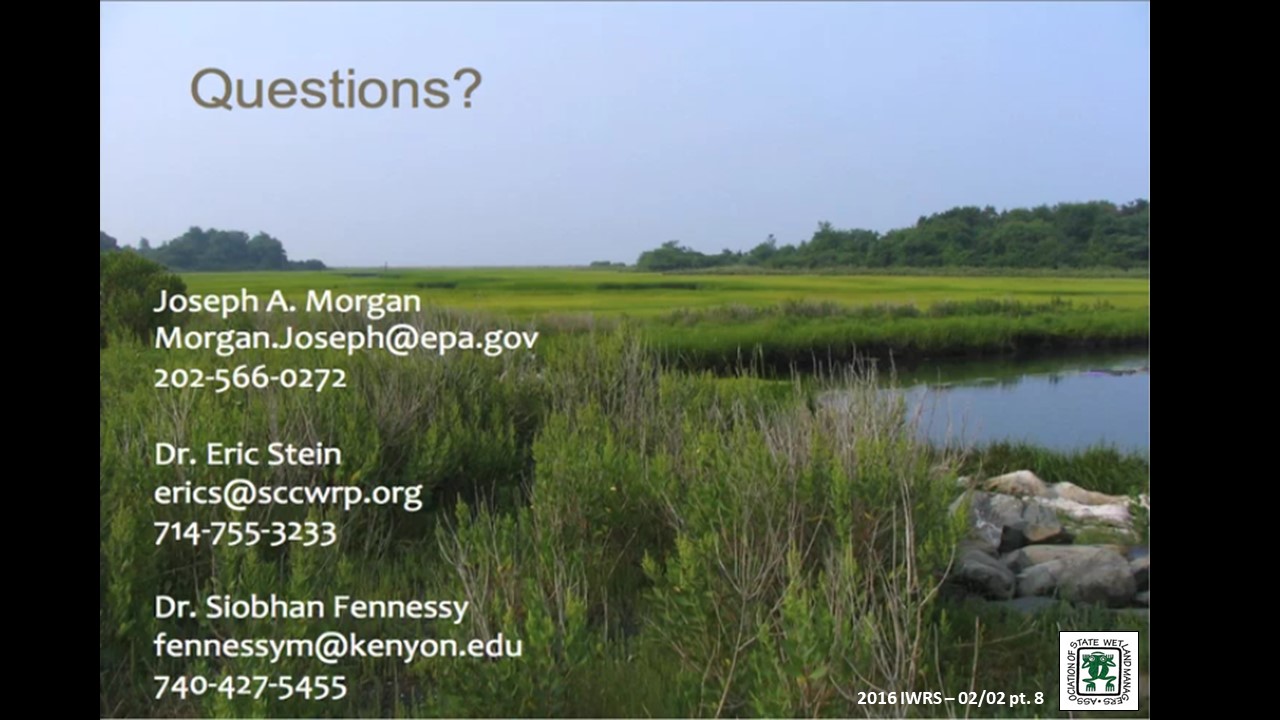Long-term Management & Legal Protections for Voluntary Restoration
Held Thursday, November 17, 2016 - 3:00 p.m. ET
INTRODUCTION
- Marla Stelk, Policy Analyst, Association of State Wetland Managers and Jeanne Christie, Association of State Wetland Managers [POWERPOINT PRESENTATION]
PRESENTERS
- Ellen Fred, Esq., Conservation Partners [POWERPOINT PRESENTATION]
- Ted LaGrange, Nebraska Game & Parks Commission [POWERPOINT PRESENTATION]
- Jeff Williams, USDA Natural Resources Conservation Service [POWERPOINT PRESENTATION]
- Andrew James, USDA Natural Resources Conservation Service
[POWERPOINT PRESENTATION]
ABSTRACTS
Abstract: Ellen Fred, Esq., Conservation Partners
This presentation will discuss some of the various legal instruments available to ensure long-term protections for wetlands. A conservation easement is a legal tool used to ensure that property remains in its natural and ecological condition in perpetuity. Easements are typically crafted as negative covenants—i.e., telling a landowner what actions she cannot undertake—but in certain circumstances they can be tailored to include certain affirmative obligations, including restoration. Easements are often used as a means to protect the public and private investment in restoration projects and can also incorporate management plans and other land-use mechanisms to ensure that the long-term management of the property is conducted in a manner that protects and enhances the restored features of a property.
Abstract: Ted LaGrange, Nebraska Game & Parks Commission
There are a number of options available to address voluntary wetland restoration, including on private lands. Some examples that I will briefly touch on include: technical assistance, short-term agreements, long-term agreements, conservation easements, and fee-title ownership. Regardless of the option used to enable the wetland restoration, it is extremely important to plan for and to implement the long-term management needed to sustain the wetland. I will discuss why management is so important and some of the ways to accomplish the management needed.
Abstract: Jeff Williams, USDA Natural Resources Conservation Service and Andrew James, USDA Natural Resources Conservation Service
Agricultural Conservation Easement Program (ACEP): Building partnerships with landowners to voluntarily protect and restore wetlands with the Wetland Reserve Easement (WRE) component.
ACEP-WRE provides opportunities for landowners (including tribes) to restore, restore, and enhance wetlands. The USA acquires either 30 year or perpetual conservation easements using a standard template conservation easement. NRCS will pay either up to 75% of estimated costs of restoration for 30 year easements or up to 100% of restoration costs for perpetual easements. Landowners must meet specific eligibility criteria. Proposed wetland parcels must meet both legal and technical criteria to be eligible for WRE. Policy describes the ranking process by which proposed parcels compete on a state-wide basis. Detailed guidance is provided for the acquisition process. A preliminary and final restoration plan is created in collaboration with the landowner that meets the goals and objectives of the necessary restoration while meeting Agency standards and specifications. Long term management, operation and maintenance, compatible uses, annual monitoring, as well as violations and enforcement procedures are addressed in policy.
BIOS
 Ellen Fred has been practicing land conservation law for 13 years. Ellen serves clients on all aspects of land conservation law, including drafting and customizing conservation easements and related documents, analyzing the state and federal income, gift, and estate tax implications of employing various conservation approaches, negotiating with landowners, tax-exempt organizations, and governmental agencies, and managing mitigation projects. Ms. Fred is a member of the State Bar of California and is admitted to appear before the United States Court of Appeals for the Ninth Circuit. Prior to establishing her solo practice, Ms. Fred was with the San Francisco law firm of Coblentz, Patch, Duffy & Bass, LLP, where she practiced for four years in its land conservation section. Ms. Fred has published various articles on land conservation issues in the Hastings Law Journal and The Back Forty Journal of Land Conservation Law and has presented at numerous conferences on land conservation topics. She graduated with high honors and high distinction in Russian and Eastern European Studies from the University of Michigan in 1993 and earned her law degree, summa cum laude, from the University of California, Hastings College of the Law, where she was elected to the Order of the Coif and the Thurston Society.
Ellen Fred has been practicing land conservation law for 13 years. Ellen serves clients on all aspects of land conservation law, including drafting and customizing conservation easements and related documents, analyzing the state and federal income, gift, and estate tax implications of employing various conservation approaches, negotiating with landowners, tax-exempt organizations, and governmental agencies, and managing mitigation projects. Ms. Fred is a member of the State Bar of California and is admitted to appear before the United States Court of Appeals for the Ninth Circuit. Prior to establishing her solo practice, Ms. Fred was with the San Francisco law firm of Coblentz, Patch, Duffy & Bass, LLP, where she practiced for four years in its land conservation section. Ms. Fred has published various articles on land conservation issues in the Hastings Law Journal and The Back Forty Journal of Land Conservation Law and has presented at numerous conferences on land conservation topics. She graduated with high honors and high distinction in Russian and Eastern European Studies from the University of Michigan in 1993 and earned her law degree, summa cum laude, from the University of California, Hastings College of the Law, where she was elected to the Order of the Coif and the Thurston Society.
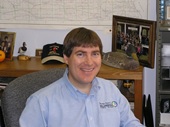 Ted LaGrange
Ted LaGrange
An Iowa native, Ted moved to Nebraska in 1993 to work as the Wetland Program Manager for the Nebraska Game and Parks Commission. As Wetland Program Manager he works on a wide variety of wetland issues throughout the state including private land restoration programs, public lands management, resource advocacy and outreach. Prior to moving to Nebraska, he worked for 8 years as a Waterfowl Research Technician for the Iowa Department of Natural Resources in Clear Lake. Stationed in northern Iowa, he worked with the prairie pothole restoration program, especially evaluation of plant and waterfowl response to wetland restoration. Ted received B.S. and M.S. degrees in wildlife biology from Iowa State University. During his college years he spent summers working on refuges in Oregon and New York for the US Fish and Wildlife Service, working on a muskrat ecology study on the Upper Mississippi River, and working on the Marsh Ecology Research Project for Delta Waterfowl and Wetlands Research Station in Manitoba. His professional interests are in prairie wetlands and waterfowl/waterbird ecology.
 Jeff Williams is employed by the USDA Natural Resources Conservation Service (NRCS) as a Wetland Easement Specialist and Healthy Forest Reserve Program (HFRP) Manager in Washington, DC. He has previously served as an easement Specialist for Utah NRCS working with local and national partners implementing both repealed conservation easement programs for the Wetland Reserve Program (WRP), Grasslands Reserve Program (GRP), and Farm and Ranchland Protection Program (FRPP) as well as the new conservation easement programs in ACEP. He has worked for the Bureau of Land Management, US Forest Service, and Department of Army. He has a BS in Range Science and MA in Economics from Utah State University.
Jeff Williams is employed by the USDA Natural Resources Conservation Service (NRCS) as a Wetland Easement Specialist and Healthy Forest Reserve Program (HFRP) Manager in Washington, DC. He has previously served as an easement Specialist for Utah NRCS working with local and national partners implementing both repealed conservation easement programs for the Wetland Reserve Program (WRP), Grasslands Reserve Program (GRP), and Farm and Ranchland Protection Program (FRPP) as well as the new conservation easement programs in ACEP. He has worked for the Bureau of Land Management, US Forest Service, and Department of Army. He has a BS in Range Science and MA in Economics from Utah State University.
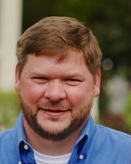 Andrew James currently serves as the National Program Manager for the Wetlands Reserve Easement (WRE) component of the Agricultural Conservation Easement Program (ACEP) for USDA Natural Resources Conservation Service (NRCS) in Washington, D.C. Before moving to Washington, D.C. in 2014, Andrew served as the Conservation Easement Program Coordinator for Louisiana NRCS (2010 – 2014) and Arkansas NRCS (2006 – 2010). Prior to his employment with NRCS, Andrew served as the State Waterfowl Biologists for the Arkansas Game and Fish Commission in Little Rock, AR from 2002 - 2006. He earned a BS in Wildlife Conservation from Louisiana Tech University in Ruston, LA and an MS in Wildlife Biology from the University of Arkansas in Fayetteville, AR.
Andrew James currently serves as the National Program Manager for the Wetlands Reserve Easement (WRE) component of the Agricultural Conservation Easement Program (ACEP) for USDA Natural Resources Conservation Service (NRCS) in Washington, D.C. Before moving to Washington, D.C. in 2014, Andrew served as the Conservation Easement Program Coordinator for Louisiana NRCS (2010 – 2014) and Arkansas NRCS (2006 – 2010). Prior to his employment with NRCS, Andrew served as the State Waterfowl Biologists for the Arkansas Game and Fish Commission in Little Rock, AR from 2002 - 2006. He earned a BS in Wildlife Conservation from Louisiana Tech University in Ruston, LA and an MS in Wildlife Biology from the University of Arkansas in Fayetteville, AR.
![]()
Not Lost in Translation: How to Select the Right Wetland Restoration Team
Held Tuesday, October 18, 2016 - 3:00 p.m. ET
INTRODUCTION
- Marla Stelk, Policy Analyst, Association of State Wetland Managers and Jeanne Christie, Association of State Wetland Managers
PRESENTERS
- Lisa Cowan, PLA, ASLA, Principal, Studioverde
- John Bourgeois, Executive Project Manager, South Bay Salt Pond Restoration Project
- Matt Schweisberg, Principal, Wetland Strategies and Solutions, LLC
PowerPoint presentations available here.
ABSTRACT
Wetland restoration has a spotty history of success. There are numerous reasons that restoration projects fail to achieve their full range of objectives. From initial planning to design to construction to follow-up monitoring, there are several junctures where things may not go smoothly. In fact, there are key points where projects may deteriorate or fall apart. One principal reason can be the team working on the project. Have you wondered about the expertise and capabilities necessary to make a wetland restoration team operate effectively, efficiently, and successfully? We have too. Join our group of experts to learn about the various ingredients that are needed to form a top-notch wetland restoration team. This webinar will include a thorough discussion of the potential skill sets to include in your team. The discussion will cover key professional expertise, important personality traits, and requisite communication abilities.
BIOS
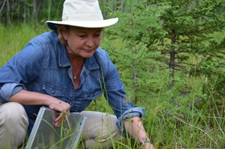 Lisa Cowan, is Principal at Studioverde - a collaborative of landscape architects and practitioners specializing in ecological restoration, sustainable design and Sustainable Sites Initiative certification. Lisa’s work exemplifies a lifelong interest in the restoration of natural systems and community engagement in the natural world. She has expertise in design and construction plans, low impact construction methodologies and monitoring and was the lead landscape architect on over 30 successful wetland and riparian restoration projects. Lisa’s work in wetland restoration and creation was featured in Landscape Architecture Magazine in 2015. Lisa teamed with Marla Stelk, ASWM on a talk about wetland restoration and role of landscape architects as an integrated team member at the ASLA 2014 Annual Meeting in Denver, Colorado.
Lisa Cowan, is Principal at Studioverde - a collaborative of landscape architects and practitioners specializing in ecological restoration, sustainable design and Sustainable Sites Initiative certification. Lisa’s work exemplifies a lifelong interest in the restoration of natural systems and community engagement in the natural world. She has expertise in design and construction plans, low impact construction methodologies and monitoring and was the lead landscape architect on over 30 successful wetland and riparian restoration projects. Lisa’s work in wetland restoration and creation was featured in Landscape Architecture Magazine in 2015. Lisa teamed with Marla Stelk, ASWM on a talk about wetland restoration and role of landscape architects as an integrated team member at the ASLA 2014 Annual Meeting in Denver, Colorado.
 John Bourgeois became Executive Project Manager of the South Bay Salt Pond Restoration project in December 2009. John brings over 18 years of experience working on large scale wetland restoration issues to the Project. For the previous 12 years, he worked as a restoration ecologist with the Bay Area ecological consulting firm H. T. Harvey & Associates where he worked on numerous closely related San Francisco Bay wetlands projects. Prior to coming to California, John worked on wetland issues at the USGS National Wetland Research Center, the Coastal Restoration Division of the Louisiana Department of Natural Resources, and the U.S. Forest Service’s Institute of Pacific Islands Forestry. John has a M.S. from the University of Louisiana at Lafayette, a B.S. from Tulane University. He currently lives in Los Gatos with his wife Susan, where he is very active in his community having served on the planning commission and other committees for over 10 years.
John Bourgeois became Executive Project Manager of the South Bay Salt Pond Restoration project in December 2009. John brings over 18 years of experience working on large scale wetland restoration issues to the Project. For the previous 12 years, he worked as a restoration ecologist with the Bay Area ecological consulting firm H. T. Harvey & Associates where he worked on numerous closely related San Francisco Bay wetlands projects. Prior to coming to California, John worked on wetland issues at the USGS National Wetland Research Center, the Coastal Restoration Division of the Louisiana Department of Natural Resources, and the U.S. Forest Service’s Institute of Pacific Islands Forestry. John has a M.S. from the University of Louisiana at Lafayette, a B.S. from Tulane University. He currently lives in Los Gatos with his wife Susan, where he is very active in his community having served on the planning commission and other committees for over 10 years.
 Matt Schweisberg (matt@wetlandsns.com) is the principal of Wetland Strategies and Solutions, LLC, where he provides policy, regulatory and technical advice and assistance for clients seeking to navigate a wide range of regulatory and non-regulatory issues related to wetlands and other aquatic resources. He works throughout the U.S. Matt is a Professional Wetland Scientist under the Professional Certification Program of the Society of Wetland Scientists. He is a retired federal wetlands ecologist and wildlife biologist who spent over 32 years with the U. S. Environmental Protection Agency at its HQ office in Washington, D.C. and New England Region office in Boston. Matt served as Chief of the New England Region’s Wetlands Protection Program and Senior Wetland Ecologist, and on national work groups developing guidance and regulations on Clean Water Act jurisdiction. He has testified before federal grand juries and served several times as an expert witness in federal, state, and private litigation. He co-instructs a week-long intensive course on wetland identification and delineation at the Eagle Hill Institute in Maine, and has taught courses in wetland regulation, restoration and creation, wetland ecology, and wetland identification and delineation for federal and state agencies, academic organizations, and environmental consultants. He received his degree in Wildlife Management from the University of Maine.
Matt Schweisberg (matt@wetlandsns.com) is the principal of Wetland Strategies and Solutions, LLC, where he provides policy, regulatory and technical advice and assistance for clients seeking to navigate a wide range of regulatory and non-regulatory issues related to wetlands and other aquatic resources. He works throughout the U.S. Matt is a Professional Wetland Scientist under the Professional Certification Program of the Society of Wetland Scientists. He is a retired federal wetlands ecologist and wildlife biologist who spent over 32 years with the U. S. Environmental Protection Agency at its HQ office in Washington, D.C. and New England Region office in Boston. Matt served as Chief of the New England Region’s Wetlands Protection Program and Senior Wetland Ecologist, and on national work groups developing guidance and regulations on Clean Water Act jurisdiction. He has testified before federal grand juries and served several times as an expert witness in federal, state, and private litigation. He co-instructs a week-long intensive course on wetland identification and delineation at the Eagle Hill Institute in Maine, and has taught courses in wetland regulation, restoration and creation, wetland ecology, and wetland identification and delineation for federal and state agencies, academic organizations, and environmental consultants. He received his degree in Wildlife Management from the University of Maine.
September - Break
![]()
August - Break ![]()
Bottomland Hardwood Restoration
Held Tuesday, July 12, 2016 - 3:00 p.m. ET
INTRODUCTION
- Marla Stelk, Policy Analyst, Association of State Wetland Managers and Jeanne Christie, Association of State Wetland Managers [POWERPOINT PRESENTATION]
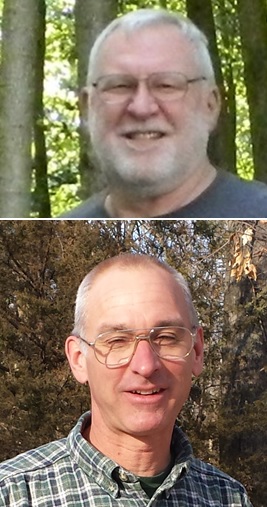 PRESENTERS
PRESENTERS
- John A. Stanturf, PhD, U.S. Forest Service [POWERPOINT PRESENTATION]
- John W. Groninger, PhD Southern Illinois University [POWERPOINT PRESENTATION]
ABSTRACTS
Restoring Bottomland Hardwood Forests – John A. Stanturf, PhD, U.S. Forest Service
Bottomland hardwood forests (BLH) occur in the floodplains of major and minor rivers and reach their greatest extent in the southern US, in particular the Lower Mississippi Alluvial Valley. These species rich forests have been extensively cleared for agriculture and the rivers altered for flood control and navigation. Nevertheless, federal, state and private programs are attempting to restore BLH, mostly on economically marginal agricultural land. Matching species to site, primarily in terms of inundation regime and flooding tolerance, is a critical performance factor but often difficult to accomplish in altered landscapes. The challenges of obtaining quality seedlings and insuring an adequate planting job have resulted in outright failures or sub-par results. Adequate competition control may be constrained by limitations placed by federal cost-sharing programs. Attempts to restore microtopography and hydrological re-connection can be costly, produce adverse off-site impacts, or both. The presentation focuses on best available science and current practice in bottomland hardwood restoration.
Afforested Bottomlands: Managing the Middle Years – John W. Groninger, PhD, Southern Illinois University
Agency land managers in the Cache River Wetlands of southern Illinois are faced with maintaining the full range of habitat conditions for diverse wildlife species. Following a period of intense afforestation concluding approximately 15 years ago, the Cache has been subjected to several significant stand and landscape level forces having long-term implications for restoration performance. Forest stand dynamics, historic disturbance patterns, invasive species and the use of indicator species for landscape level management will be highlighted. The presentation focuses on afforested stands now between establishment and maturity but also addresses management options for other important habitat components.
BIOS
John Stanturf is a Senior Scientist with the US Forest Service in Athens, GA. From 1992 to 2000, he was Project Leader at the Center for Bottomland Hardwoods Research in Stoneville, MS where he and colleagues established a long-term study at the Sharkey Restoration Site. They compared two standard WRP techniques for restoring bottomland hardwoods (planting and direct seeding Nuttall oak) with a passive and a more intensive technique (Eastern cottonwood nurse crop with interplanted Nuttall oak). In his current position he retains an interest in bottomland hardwood silviculture and restoration while focusing globally on forest landscape restoration to meet the Bonn Challenge/New York Declaration to restore 350 million ha of deforested and degraded land by 2 030.
John Groninger is a professor in the Department of Forestry at Southern Illinois University where his teaching and research interests have include silviculture, agroforestry, urban forestry, and watershed rehabilitation in highly disturbed and socially unstable environments. Since coming to SIU in 1997, he and his graduate students have maintained a strong interest in regeneration and stand development within the Cache River Wetlands. This work is part of a broadly interdisciplinary effort among SIU researchers to address the full range of conservation management challenges within agriculture dominated watersheds. Prior to his present position, John was a Ph.D. student and Post-doctoral researcher and instructor at Virginia Tech
![]()
Gulf Coast Restoration Post-Katrina
![]()
Held Monday, June 27, 2016 - 3:00 p.m. ET
INTRODUCTION
- Marla Stelk, Policy Analyst, Association of State Wetland Managers and Jeanne Christie, Association of State Wetland Managers [POWERPOINT PRESENTATION]
PRESENTERS
- Bren Haase, Planning and Research Division, Coastal Protection and Restoration Authority, State of Louisiana [POWERPOINT PRESENTATION]
- William P. Klein, Jr. Ed.D., U.S. Army Corps of Engineers [POWERPOINT PRESENTATION]
- John Andrew Nyman, PhD, Professor, School of Renewable Natural Resources, Louisiana State University [POWERPOINT PRESENTATION]
- Denise J. Reed, PhD, Chief Scientist, The Water Institute of the Gulf [POWERPOINT PRESENTATION]
ABSTRACTS
Coastal Protection and Restoration in Louisiana: Post Katrina/Rita Approach – Bren Haase, Planning and Research Division, Coastal Protection and Restoration Authority, State of Louisiana
Louisiana is facing a coastal land loss crisis that has claimed 1,880 square miles of land since the 1930’s. Given the importance of so many of south Louisiana’s assets – waterways, natural resources, unique culture and wetlands – this land loss crisis is of national significance. Following the hurricane season of 2005 in which Louisiana saw both Hurricanes Katrina and Rita make landfall, Louisiana’s Coastal Protection and Restoration Authority (CPRA) was created. The CPRA is established as the single state entity with authority to articulate a clear statement of priorities and to focus development and implementation efforts to achieve comprehensive coastal restoration and protection for Louisiana. The CPRA is mandated to develop, implement, and enforce Louisiana’s Comprehensive Master Plan for a Sustainable Coast. This presentation will focus on the implications of Louisiana’s land loss crisis to the region and nation, the state’s change in approach to restoration following Hurricanes Katrina and Rita, and the development and implementation of Louisiana’s Master Plan.
Wetland Restoration Pre- and Post-Hurricane Katrina Perspective of an Environmental Manager – William P. Klein, Jr. Ed.D., U.S. Army Corps of Engineers
This presentation provides a selected overview of environmental restoration efforts in coastal Louisiana, both pre- and post-Hurricane Katrina (2005) from the perspective of a Senior Biologist, Environmental Planner/Manager with the U.S. Army Corps of Engineers (Corps), New Orleans District (CEMVN). The Corps goal for its environmental mission is to focus on ecosystem structure and processes and manage the land and resources in a sustainable manner. The presentation includes description of the Corps Environmental Operating Principles, selected restoration laws, and description of the problem with over 100 years of extensive and continuing land loss throughout coastal Louisiana. Pre-Katrina selected ecosystem restoration efforts (Sections 1135, 204 and 206 of the various Water Resources Development Acts are chronicled, development of the joint Federal and state consensus-based strategic restoration plan, the Coast 2050 Plan, which has become the basis for subsequent coast-wide Federal and state restoration efforts. Briefly described are the 1990 Coastal Wetlands Planning, Protection, and Restoration Act; the development and implementation of the 2005 Louisiana Coastal Area (LCA) Near-Term Ecosystem Restoration Plan, and the ongoing Southwest Coastal Louisiana and LCA Mississippi River Hydrodynamic and Delta Management Studies. The future of the Louisiana coastal area and the need for continued ecosystem restoration efforts are the closing slides in the presentation.
Fish, Vegetation, and Wildlife as Performance Measures in Gulf Coast Restoration – John Andrew Nyman, PhD, Professor, School of Renewable Natural Resources, Louisiana State University
Fish and wildlife provided the primary justification for wetland restoration efforts in the late 1900s but storm surge became an important justification in the 2000s. All of these functions depend upon wetland vegetation. Fifty years ago, restoration efforts generally focused on slowing conversion of emergent wetlands to shallow open water but today restoration efforts generally focus on using river diversions to convert shallow open water to emergent wetlands or upon placement of dredged material to convert shallow open water into emergent wetlands and barrier beaches. This presentation will summarize numerous studies of these restoration techniques on vegetation, fish, and wildlife.
Gulf Coast Restoration: Using Science for Long-Term Planning – Denise J. Reed, PhD, Chief Scientist, The Water Institute of the Gulf
When rapid changes in wetlands are seen after hurricanes or droughts, focusing restoration on outing the system back the way it was may be an understandable approach. However, when the durability of wetland restoration investments is considered, actions that put things back the way they were may not lead to long term performance. Scientific understanding of wetland processes and response to change can be captured to predict change in wetlands, both natural and restored, decades into the future. This presentation will discuss tools to predict wetland change over time and response to sea-level and subsidence, as well as some of the outstanding challenges in understanding response to storm impacts.
BIOS
 Bren Haase is Chief of the Planning and Research Division of the Louisiana Coastal Protection and Restoration Authority. He holds degrees in marine biology and oceanography/coastal sciences from Auburn University and Louisiana State University, respectively. He has over 20 years of experience in coastal wetlands ecology, restoration and regulation in the private sector, and with the Federal and State governments. Currently, he manages the development of Louisiana’s Comprehensive Master Plan for a Sustainable Coast, the planning, evaluation, and permitting phases of Louisiana’s oil spill restoration program, the Louisiana Coastal Area Ecosystem Restoration Program, the Coastal Wetlands Planning, Protection and Restoration Program, Beneficial Use of Dredged Material Program and Mississippi River Sediment Diversion Program among others.
Bren Haase is Chief of the Planning and Research Division of the Louisiana Coastal Protection and Restoration Authority. He holds degrees in marine biology and oceanography/coastal sciences from Auburn University and Louisiana State University, respectively. He has over 20 years of experience in coastal wetlands ecology, restoration and regulation in the private sector, and with the Federal and State governments. Currently, he manages the development of Louisiana’s Comprehensive Master Plan for a Sustainable Coast, the planning, evaluation, and permitting phases of Louisiana’s oil spill restoration program, the Louisiana Coastal Area Ecosystem Restoration Program, the Coastal Wetlands Planning, Protection and Restoration Program, Beneficial Use of Dredged Material Program and Mississippi River Sediment Diversion Program among others.
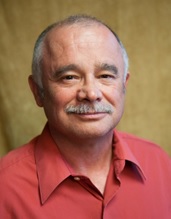 William P. Klein, Jr., Ed.D. is a Biologist with the U.S. Army Corps of Engineers, New Orleans District. Certified Professional Biologist, Senior Environmental Manager/Planner, Regional Lead for Adaptive Management and Monitoring, Subject Matter Expert Coastal Restoration. Plan, budget and conduct civil works water resources development studies and projects including: hurricane and flood risk reduction, navigation, and ecosystem restoration. Conduct environmental impacts assessment, analysis and documentation (e.g., environmental impact statements) on large-scale, complex, and often controversial projects such as: the Coastal Texas Protection and Restoration Study, Louisiana Coastal Area (LCA) Ecosystem Restoration Study and Projects, the Mississippi River Hydrodynamic and Delta Management Study, Southwest Coastal Louisiana Study, West Shore Lake Pontchartrain, others. Develop and implement mitigation plans, adaptive management and monitoring plans for region-wide studies and projects.
William P. Klein, Jr., Ed.D. is a Biologist with the U.S. Army Corps of Engineers, New Orleans District. Certified Professional Biologist, Senior Environmental Manager/Planner, Regional Lead for Adaptive Management and Monitoring, Subject Matter Expert Coastal Restoration. Plan, budget and conduct civil works water resources development studies and projects including: hurricane and flood risk reduction, navigation, and ecosystem restoration. Conduct environmental impacts assessment, analysis and documentation (e.g., environmental impact statements) on large-scale, complex, and often controversial projects such as: the Coastal Texas Protection and Restoration Study, Louisiana Coastal Area (LCA) Ecosystem Restoration Study and Projects, the Mississippi River Hydrodynamic and Delta Management Study, Southwest Coastal Louisiana Study, West Shore Lake Pontchartrain, others. Develop and implement mitigation plans, adaptive management and monitoring plans for region-wide studies and projects.
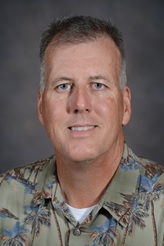 Andy Nyman, Ph.D., has been studying Louisiana’s wetlands since 1987 and interacting with wetland restoration programs since 1993. He has published over 65 peer-reviewed articles and chapters with graduate students and other collaborators. His most cited papers address oil spills and marsh vertical accretion, which allows coastal wetlands worldwide to offset some global sea-level rise and local subsidence. His publications include a text book chapter on managing coastal wetlands in the Wildlife Management Techniques Manual. His most recent publications address the effects of nutrients on wetland vegetation and attempts to use leaf-tissue chemistry as a restoration-planning technique much as is done in agriculture. He is a wildlife professor at the School of Renewable Natural Resources at Louisiana State University and also moonlights as the sole employee of River Oaks Wetland Services, Inc. providing expert consulting and expert witness services.
Andy Nyman, Ph.D., has been studying Louisiana’s wetlands since 1987 and interacting with wetland restoration programs since 1993. He has published over 65 peer-reviewed articles and chapters with graduate students and other collaborators. His most cited papers address oil spills and marsh vertical accretion, which allows coastal wetlands worldwide to offset some global sea-level rise and local subsidence. His publications include a text book chapter on managing coastal wetlands in the Wildlife Management Techniques Manual. His most recent publications address the effects of nutrients on wetland vegetation and attempts to use leaf-tissue chemistry as a restoration-planning technique much as is done in agriculture. He is a wildlife professor at the School of Renewable Natural Resources at Louisiana State University and also moonlights as the sole employee of River Oaks Wetland Services, Inc. providing expert consulting and expert witness services.
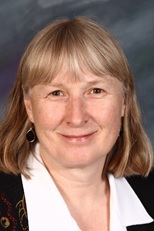 Denise Reed, Ph.D., is the Chief Scientist for the Water Institute of the Gulf. She is a nationally and internationally recognized expert in coastal marsh sustainability and the role of human activities in modifying coastal systems. She has worked on coastal issues in the US and in other parts of the world, for over 30 years. Dr. Reed has been extensively involved in restoration planning in coastal Louisiana since the early 1990's with a focus on bringing scientific knowledge to bear in developing sustainable solutions. Reed has also been engaged in ecosystem restoration research and planning both in the California Bay-Delta and coastal Louisiana. She has served on numerous boards and panels concerning the effects of human alterations on coastal environments and the role of science in guiding ecosystem restoration, including a number of National Research Council Committees. She received her BA and PhD from the University of Cambridge in England.
Denise Reed, Ph.D., is the Chief Scientist for the Water Institute of the Gulf. She is a nationally and internationally recognized expert in coastal marsh sustainability and the role of human activities in modifying coastal systems. She has worked on coastal issues in the US and in other parts of the world, for over 30 years. Dr. Reed has been extensively involved in restoration planning in coastal Louisiana since the early 1990's with a focus on bringing scientific knowledge to bear in developing sustainable solutions. Reed has also been engaged in ecosystem restoration research and planning both in the California Bay-Delta and coastal Louisiana. She has served on numerous boards and panels concerning the effects of human alterations on coastal environments and the role of science in guiding ecosystem restoration, including a number of National Research Council Committees. She received her BA and PhD from the University of Cambridge in England.
![]()
Establishing Reference Conditions for Performance Standards & Long Term Monitoring Results: Soils, Hydrology and Vegetation
Held Tuesday, May 10, 2016 - 3:00 p.m.-5:00 p.m. EDT
INTRODUCTION
- Marla Stelk, Policy Analyst, Association of State Wetland Managers and Jeanne Christie, Association of State Wetland Managers [POWERPOINT PRESENTATION]
PRESENTERS
- Dr. Robert Brooks, Professor, Pennsylvania State University and Director, Riparia [POWERPOINT PRESENTATION]
- Dr. W. Lee Daniels, Professor, Virginia Tech [POWERPOINT PRESENTATION]
- Dr. Eric Stein, Principal Scientist, Southern California Coastal Water Research Project [POWERPOINT PRESENTATION]
ABSTRACTS
Using Reference Wetlands for Restoration and Mitigation Design - Dr. Robert Brooks
Despite 25 years of calls for improving wetlands mitigation and restoration practices, advancements have been scarce, and progress slow. Using data from natural reference wetlands for an appropriate wetland type and region is essential for practitioners who want to enhance project designs and measure performance over time. By designing mitigation or restoration sites with characteristics derived from reference wetlands of relevant hydrogeomorphic subclasses, practitioners are more likely to construct a project that will at least be on a performance trajectory to replace the ecosystem services of natural systems. Example of performance standards and a review of available reference wetlands data nationwide will be provided.
Development of Performance Standards for Wetland Soil Reconstruction - Dr. W. Lee Daniels
Success of wetland creation efforts in mid-Atlantic USA has frequently been limited by inappropriate soil conditions, particularly excessive compaction and low levels of organic matter. Post-construction wetland hydroperiods, particularly for forested wetlands, are commonly dissimilar from natural undisturbed systems. For the past twenty years, Virginia Tech has worked collaboratively with partner universities (ODU and VIMS), state and federal regulatory authorities, VDOT and the private sector to develop and monitor a full range of wetland soil reconstruction protocols to address these combined issues. In this seminar, we will review a range of underlying field studies and associated recommendations for optimal wetland soil recreation along with a newly developed water budget modeling package (Wetbud) applicable to the design and verification of created wetland hydroperiods.
Improving Mitigation Success through Use of Performance Curves (Trajectories) and Tiered Performance Standards - Dr. Eric Stein
“People generally do what they are told”. This fact defines both the challenge and the opportunity of improving the success of wetland and stream mitigation. Numerous studies have questioned the efficacy of mitigation practices, yet an equal number of studies suggest that that permittees are actually complying with conditions of their dredge and fill permits. One strategy to improve overall mitigation success is to refine how the performance standards incorporated into many permit conditions are structured so that they compel permittees to design and implement mitigation projects (or banks) in ways more conducive to long-term success. This webinar will present tools and approaches that could be used to improve performance standards. For example, tiered performance standards incrementally require different physical and hydrologic elements of mitigation implementation to be achieved before implementing biological restoration measures. We will also show examples of the development of performance trajectories that can be used to help identify whether mitigation sites are on track toward success or in need of remedial measures. As these (and other) tools are implemented, they should help better align permit requirements with actions that promote restoration success.
BIOS
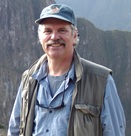 Dr. Robert P. Brooks is Professor of Geography and Ecology, and Founder and Director of Riparia at the Pennsylvania State University. He is a practicing wetland scientist and wildlife biologist certified by the Society of Wetland Scientists and The Wildlife Society, respectively. His research and outreach emphasizes assessments of wetlands and streams, habitat modeling for wetland-dependent wildlife, and restoration of aquatic ecosystems. He recently co-edited a book on Mid-Atlantic Freshwater Wetlands, and was the 2013 recipient of the National Wetlands Award for Science Research. rpb2@psu.edu
Dr. Robert P. Brooks is Professor of Geography and Ecology, and Founder and Director of Riparia at the Pennsylvania State University. He is a practicing wetland scientist and wildlife biologist certified by the Society of Wetland Scientists and The Wildlife Society, respectively. His research and outreach emphasizes assessments of wetlands and streams, habitat modeling for wetland-dependent wildlife, and restoration of aquatic ecosystems. He recently co-edited a book on Mid-Atlantic Freshwater Wetlands, and was the 2013 recipient of the National Wetlands Award for Science Research. rpb2@psu.edu
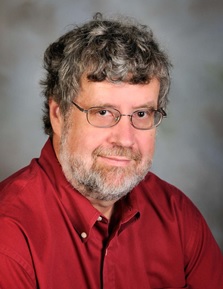 W. Lee Daniels is the Thomas B. Hutcheson Professor of Environmental Soil Science at Virginia Tech in Blacksburg, Virginia. He received his Ph.D. in Soil Science from VPI & SU in 1985. Dr. Daniels areas of specialization include stabilization and restoration of disturbed lands including areas disturbed by mining, road building, waste disposal, urbanization and erosion. In particular, he has focused his research and consulting experience in wetland impact mitigation,mine reclamation, and soil-waste management systems. His teaching programs at Virginia Tech focus on soil geomorphology and landscape analysis with particular emphasis on the relationships among surficial geology, hydrology, soil patterns and long term landscape evolution processes. Major awards include the Reclamation Researcher of the Year by the American Society for Surface Mining and Reclamation (ASMR) in 1993, USEPA’s National Biosolids Utilization Research Award in 2000 and the Lifetime Achievement in Research Award by ASMR in 2012.
W. Lee Daniels is the Thomas B. Hutcheson Professor of Environmental Soil Science at Virginia Tech in Blacksburg, Virginia. He received his Ph.D. in Soil Science from VPI & SU in 1985. Dr. Daniels areas of specialization include stabilization and restoration of disturbed lands including areas disturbed by mining, road building, waste disposal, urbanization and erosion. In particular, he has focused his research and consulting experience in wetland impact mitigation,mine reclamation, and soil-waste management systems. His teaching programs at Virginia Tech focus on soil geomorphology and landscape analysis with particular emphasis on the relationships among surficial geology, hydrology, soil patterns and long term landscape evolution processes. Major awards include the Reclamation Researcher of the Year by the American Society for Surface Mining and Reclamation (ASMR) in 1993, USEPA’s National Biosolids Utilization Research Award in 2000 and the Lifetime Achievement in Research Award by ASMR in 2012.
 Dr. Eric Stein is a principal scientist at the Southern California Coastal Water Research Project (SCCWRP), where he is head of the Biology Department. Dr. Stein oversees a variety of projects related to in-stream and coastal water quality, bioassessment, hydromodification, watershed modeling, and assessment of wetlands and other aquatic resources. His research focuses on effects of human activities on the condition of aquatic ecosystems, and on developing tools to better assess and manage those effects. Dr. Stein has authored over 100 journal articles and technical reports and participates on numerous technical workgroups and committees related to water quality and wetland assessment and management. Prior to joining SCCWRP in 2002, Dr. Stein spent six years as a Senior Project Manager with the Regulatory Branch of the Los Angeles District Corps of Engineers, and four years with a private consulting firm.
Dr. Eric Stein is a principal scientist at the Southern California Coastal Water Research Project (SCCWRP), where he is head of the Biology Department. Dr. Stein oversees a variety of projects related to in-stream and coastal water quality, bioassessment, hydromodification, watershed modeling, and assessment of wetlands and other aquatic resources. His research focuses on effects of human activities on the condition of aquatic ecosystems, and on developing tools to better assess and manage those effects. Dr. Stein has authored over 100 journal articles and technical reports and participates on numerous technical workgroups and committees related to water quality and wetland assessment and management. Prior to joining SCCWRP in 2002, Dr. Stein spent six years as a Senior Project Manager with the Regulatory Branch of the Los Angeles District Corps of Engineers, and four years with a private consulting firm.
![]()
Managing Invasive Species in Wetland Restoration Projects: Considerations for Common Reed, Reed Canary Grass, Purple Loosestrife, Nutria and Feral Hogs
Tuesday, April 26, 2016 - 3:00 p.m.-5:00 p.m. EDT
INTRODUCTION
- Marla Stelk, Policy Analyst, Association of State Wetland Managers and Jeanne Christie, Association of State Wetland Managers [POWERPOINT PRESENTATION]
PRESENTERS
- Margaret (Marnie) Pepper, Wildlife Biologist and Project Leader, USDA-APHIS-Wildlife Services, Chesapeake Bay Nutria Eradication Project/Nutria Detector Dog Program [POWERPOINT PRESENTATION]
- Wendy Anderson, Certified Wildlife Biologist and Assistant Program Manager, USDA-APHIS-Wildlife Service, National Feral Swine Damage Management Program [POWERPOINT PRESENTATION]
- Eric Hazelton, PhD Candidate, Smithsonian Environmental Research Center and the Department of Watershed Sciences & Ecology Center, Utah State University [POWERPOINT PRESENTATION]
- Ben Peterson, Aquatic Noxious Weed Specialist, King County Noxious Weed Control Program, Washington [POWERPOINT PRESENTATION]
- Craig Annen, Operations Manager and Director of Research, Integrated Restorations, LLC [POWERPOINT PRESENTATION]
ABSTRACTS
Chesapeake Bay Nutria Eradication Project - Margaret (Marnie) Pepper
Nutria (Myocaster coypus), semi-aquatic, South American rodents, were introduced to Maryland in the early 1940s. Originally brought to the area for their fur, the market never established and animals were released or escaped into the environment. Nutria thrived and destroyed the coastal wetlands, resulting in negative environmental and economic impacts to the Chesapeake Bay region. To save the valuable wetland resources the Chesapeake Bay Nutria Eradication Project (CBNEP) was established in 2002 through a partnership with the United States Fish and Wildlife Service, the United States Department of Agriculture’s Wildlife Services, Maryland Department of Natural Resources, many state agencies and non-governmental organizations. The CBNEP has removed and reduced nutria populations to near zero across 250,000 acres of wetlands throughout the Delmarva Peninsula (Maryland, Delaware and Virginia). Many areas have recovered and over 400 private landowners have received assistance from the Project. Since all known populations have been trapped to near zero densities, the Project’s focus today is on monitoring/surveillance.
Feral Swine Damage to Wetlands and Effective Management of this Invasive Species - Wendy Anderson
Feral swine (Sus scrofa), also known as wild pigs, feral hogs, or wild boars, are unconstrained or unclaimed swine including Eurasian boars, Polynesian pigs and escaped, or feral, domestic swine and hybrids. They are a harmful and destructive invasive species whose geographic range is rapidly expanding and populations are increasing across the United States. The relocation of feral swine by people has exacerbated their spread, while population growth is due to their high reproductive capacity, lack of natural predators, and adaptability to nearly any environment. Due to their lack of sweat glands, feral swine prefer moist environments where they can wallow in muddy water to maintain their body temperature. Their consumption of large amounts of vegetation and rooting, trampling, and wallowing behaviors pose problems for wetland habitats. Sites disturbed by feral swine are often vulnerable to soil compaction, erosion, degraded water quality, elevated waterborne bacteria levels, increased mosquito habitat, and the establishment of invasive plants. Siltation and water contamination in streams and coastal areas with feral swine activity have contributed to declines in aquatic organisms, including freshwater mussels and insects. Feral swine may eat or uproot protected, sensitive, or rare plants and prey on invertebrates, other small animals, and the eggs and young of ground-nesting birds and reptiles, including threatened and endangered species. Through collaboration with other federal, state, tribal, and local entities and landowners, the United States Department of Agriculture’s Animal Plant Health Inspection Service (APHIS) is on the frontlines in the battle with this invasive species. A national strategy has been developed to reduce, and where possible, eliminate the damages inflicted by feral swine to America’s resources. An integrated wildlife damage management approach, involving education, outreach, research, monitoring, and an array of control methods is both recommended and applied at the local level. Improvement to the health of wetlands has been documented where feral swine populations have been removed.
Invasion of the Clones: Phragmites Invasion in North America - Eric Hazelton
Phragmites distribution is tied to land use in, and adjacent to, the wetlands it inhabits. Anthropogenic and natural disturbances allow Phragmites to colonize new areas by seed, then it expands by seed and clonal reproduction. Nutrient input allows Phragmites to grow explosively and out compete native vegetation. We will present a model of Phragmites invasions, and the anthropogenic factors that facilitate its success. Additionally, we will present the distribution of native Phragmites in an effort to reduce mistaken identities. Our goals are to help managers focus their efforts on wetlands that are likely to recover to a native plant community, and not spend often limited budgets on native Phragmites or wetlands that are too degraded to be resilient toward reinvasion.
Purple Loosestrife- identification and control of this wetland noxious weed - Ben Peterson
Purple loosestrife (Lythrum salicaria) is one of the most widespread and impactful wetland and shoreline weeds in North America. This talk will cover the plant’s history, impact, and reproduction characteristics. A variety of control techniques will be discussed, including examples of what is used in Washington State. These techniques include manual, biocontrol, cultural, chemical, and combining techniques into an IPM (Integrated Pest Management) strategy.
Reversing Reed Canarygrass Invasions with Process-Based Approaches - Craig Annen
Reed canarygrass (RCG) has been the topic of 913 published studies from 311 different peer-reviewed journals. Despite such a large pool of information available to land managers, reversing RCG invasions is widely perceived as an unrealistic management goal. However, recent insights into community structure have revealed that plant community states are structured and reinforced by feedback cycles within the system. Manipulating these feedbacks in conjunction with applying standard management practices (burning, herbicide applications, etc.) has made reversing reed canarygrass invasions a matter of routine (and affordable) management. This systems approach will be illustrated with examples from several successful reversal projects.
A Multiple-Method Systems Approach to Reversing Reed Canargyrass Invasions
BIOS
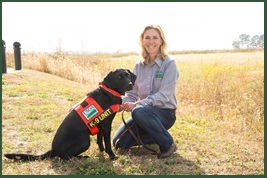 Marnie Pepper received her Bachelor of Science degree in Wildlife Conservation in 2003 and a Master of Science degree in Wildlife Ecology from the University of Delaware in 2008. She started on Chesapeake Bay Nutria Eradication Project stationed in Cambridge, Maryland as the Wildlife Biologist in 2010. She was responsible for developing The Nutria Detector Dog Program through a partnership with the National Detector Dog Training Center (A program within APHIS – Plant Protection and Quarantine). She is a certified Agricultural Detector Dog Handler and a Field Canine Trainer. In 2015 she assumed the role as Project Leader. The Chesapeake Bay Nutria Project consists of 10 Wildlife Specialists (4 Canine Handlers), a Maintenance Mechanic, and an Office Assistant/GIS Specialist.
Marnie Pepper received her Bachelor of Science degree in Wildlife Conservation in 2003 and a Master of Science degree in Wildlife Ecology from the University of Delaware in 2008. She started on Chesapeake Bay Nutria Eradication Project stationed in Cambridge, Maryland as the Wildlife Biologist in 2010. She was responsible for developing The Nutria Detector Dog Program through a partnership with the National Detector Dog Training Center (A program within APHIS – Plant Protection and Quarantine). She is a certified Agricultural Detector Dog Handler and a Field Canine Trainer. In 2015 she assumed the role as Project Leader. The Chesapeake Bay Nutria Project consists of 10 Wildlife Specialists (4 Canine Handlers), a Maintenance Mechanic, and an Office Assistant/GIS Specialist.
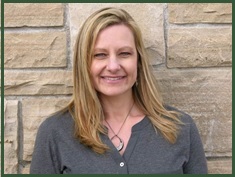
Wendy Anderson is a TWS (The Wildlife Society) Certified Wildlife Biologist with the USDA - Animal and Plant Health Inspection Service’s Wildlife Services program where she works as the Assistant Program Manager for the National Feral Swine Damage Management Program based in Fort Collins, Colorado. Wendy has worked for Wildlife Services for 18 years in various locations and positions, ranging from Field Biologist in Arizona to State Director in New Jersey. She is originally from Alaska. Wendy received a B.S. in Wildlife Biology and Natural Resource Sciences from Washington State University and a Masters of Public Administration from Troy University. In her current position with the National Feral Swine Damage Management Program, she coordinates with Wildlife Services programs in 41 states and 2 territories that receive federal feral swine allocations, and their state agency partners, on managing damage caused by feral swine through population suppression or, where possible, elimination.
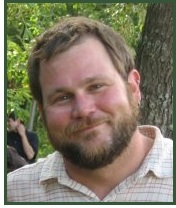 Eric Hazelton has been working in coastal wetlands since 2004 when he conducted Master's research on the physiology of Spartina, and native and introduced Phragmites at the University of Southern Maine. Since then he has worked in academia, USFWS, and consulted extensively on Phragmites management. Currently, Eric is finishing a PhD in Ecology at Utah State University with research centered at the Smithsonian Environmental Research Center in Maryland, focusing on Phragmites management in Chesapeake Bay. He is looking at the impact of land use on Phragmites management, plant recovery, and the impact of management on wetlands. Additionally, Eric has worked for over a decade identifying, and locating stands of native Phragmites in wetlands in all corners of the country.
Eric Hazelton has been working in coastal wetlands since 2004 when he conducted Master's research on the physiology of Spartina, and native and introduced Phragmites at the University of Southern Maine. Since then he has worked in academia, USFWS, and consulted extensively on Phragmites management. Currently, Eric is finishing a PhD in Ecology at Utah State University with research centered at the Smithsonian Environmental Research Center in Maryland, focusing on Phragmites management in Chesapeake Bay. He is looking at the impact of land use on Phragmites management, plant recovery, and the impact of management on wetlands. Additionally, Eric has worked for over a decade identifying, and locating stands of native Phragmites in wetlands in all corners of the country.
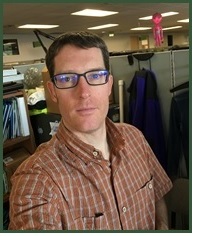 Ben Peterson has been with the King County Noxious Weed Control Program (KCNWCP) for eight years working on both aquatic and terrestrial weed issues. He earned a BS in Rangeland Ecology from Colorado State University in 1998 and a MS in Forest Resources from the University of Washington in 2008. He has over fifteen years of experience working in the restoration field for federal and local agencies, as well as private ecological restoration companies. In his current position as the Aquatic Noxious Weed Specialist for the KCNWCP he develops control priorities; write management plans; surveys for aquatic weeds; work cooperatively with land owners to achieve control of regulated aquatic noxious weeds;
Ben Peterson has been with the King County Noxious Weed Control Program (KCNWCP) for eight years working on both aquatic and terrestrial weed issues. He earned a BS in Rangeland Ecology from Colorado State University in 1998 and a MS in Forest Resources from the University of Washington in 2008. He has over fifteen years of experience working in the restoration field for federal and local agencies, as well as private ecological restoration companies. In his current position as the Aquatic Noxious Weed Specialist for the KCNWCP he develops control priorities; write management plans; surveys for aquatic weeds; work cooperatively with land owners to achieve control of regulated aquatic noxious weeds;  provides public education about the impacts of aquatic noxious weeds and control strategies.
provides public education about the impacts of aquatic noxious weeds and control strategies.
Craig Annen (B.S. Environmental Science and Plant Molecular Biology, M.S. Aquatic Botany) is Operations Manager and Director of Research with the firm Integrated Restorations, LLC. Craig has previously worked for the International Crane Foundation, Harlan Sprague Dawley Biotechnologies, the U.S. Army Corps of Engineers, and Michler & Brown, LLC. His research interests include invasive species ecology (focusing on reed canarygrass, narrow-leaved and hybrid cattail, and crown vetch), herbicide-additive chemistry, lichens and primitive plants, mathematical ecology, and conservation economics. Craig can be contacted at www.ir-wi.com).
![]()
Water Rights & Wetland Restoration
Tuesday, February 23, 2016 - 3:00 p.m. ET
INTRODUCTION
- Marla Stelk, Policy Analyst, Association of State Wetland Managers and Jeanne Christie, Association of State Wetland Managers [POWERPOINT PRESENTATION]
 PRESENTERS
PRESENTERS
- Alan J. Leak, P.E.., Program Manager, Water Rights and Infrastructure at RESPEC [POWERPOINT PRESENTATION]
- Julie A. Merritt, Water Resources Specialist/Project Manager, WGM Group [POWERPOINT PRESENTATION]
ABSTRACTS
Western Water Rights - What You Need to Know - Alan J. Leak, P.E.
Water rights are the fabric of semi-arid and arid regions of the Western United States. Basic understanding of the principles behind the prior-appropriation doctrine used in most western states and how it differs from riparian and other types of water rights administration is vital in the decisions and recommendations one makes regarding any project that includes wetlands. Projects dealing with wetlands often need to recognize how they may affect or may be affected by State water rights laws and regulation. This presentation will provide you with insight in a very critical area of western water rights and the variations in the laws and water administration in the Western United States.
Water Rights Regulations and Wetland Restoration: A Montana Perspective - Julie A. Merritt
Water use in Montana is controlled, as it is in other western states, by the Prior Appropriation Doctrine. Because wetland restoration projects may include diversion of surface and/or groundwater, or changes to an existing flow regimes, water right regulations must be addressed. It is critical to consider both the flow rate and volume of water needed as well as potential impacts to nearby water users. Even if regulators determine water rights are not required for a project, legal challenges can arise if changes to flow regimes affect downstream or adjacent surface or groundwater users.
BIOS
Alan J. Leak, P.E., is the Program Manager for Water Rights and Infrastructure at RESPEC. Alan has over 34 years of comprehensive engineering experience in water rights, water and wastewater infrastructure, and stormwater management. Alan has served as an expert witness in number of Colorado water court proceedings and hearings dealing with water rights, water augmentation plans, water resources development, substitute water supply plans, reuse and exchange plans, water rights accounting, development of water supply plans, and many other areas of water resources engineering. As an expert witness he has developed testimony, participated in depositions, and appeared under cross-examinations. Alan also teaches a two day water rights engineering course for the Urban Watershed Research Institute. His in-depth and unparalleled water rights expertise offers you a unique and exceptionally valuable learning experience.
Ms. Merritt has been working as a water resources specialist for over 19 years, working closely with private property owners involved in state and federal water conservation programs and preparing water right analyses for public and private organizations. Her experience includes locating and analyzing historical documents, maps and aerial photographs, analyzing Montana Water Court decrees for water right clients, and preparing water right permit and change of use applications with the Montana Dept of Natural Resources and Conservation.
![]()
Evaluating the Ecological Performance of Compensatory Mitigation
Tuesday, February 2, 2016 – 3:00 p.m. ET
INTRODUCTION
- Marla Stelk, Policy Analyst, Association of State Wetland Managers and Jeanne Christie, Association of State Wetland Managers [POWERPOINT PRESENTATION]
PRESENTERS
- Joseph A. Morgan, U.S. Environmental Protection Agency, Wetlands Division [POWERPOINT PRESENTATION]
- Dr. Eric Stein, Southern California Coastal Water Research Project [POWERPOINT PRESENTATION]
- Dr. Siobhan Fennessy, Kenyon College [POWERPOINT PRESENTATION]
ABSTRACTS
Joseph A. Morgan
Compensatory mitigation offsets losses permitted under Section 404 of the Clean Water Act, and has been the subject of various disputes surrounding its ecological value and administrative oversight. Evaluating both ecological and administrative performance of compensatory mitigation programs under §404 of the Clean Water Act is essential to ensuring that wetland functions are restored and protected. In this review of studies evaluating compensatory mitigation performance in the last 15 years, trends show an overall decline in evaluations, especially in the years since the 2008 Mitigation Rule. Compensatory mitigation performance has not been evaluated for large portions of the US, and relatively few studies of compensation for streams have taken place despite the growing importance of this area of compensatory mitigation. Study design is inconsistent, making comparisons across time and space difficult.
Dr. Eric Stein and Dr. Siobhan Fennessy
Despite billions of dollars spent and dozens of scientific studies, we still lack the ability to demonstrate whether investments in compensatory mitigation are producing meaningful offsets of wetland losses and ensuring that sustainable wetland resources will be maintained over the long-term. In an attempt to achieve national “no-net loss” objectives, the 2008 Corps-EPA mitigation rule dramatically altered the preferred approaches for compensatory mitigation by prioritizing larger scale mitigation banks and in-lieu fee programs over traditional site-specific mitigation. Determining the effectiveness of this strategy at improving mitigation performance will require a standardized, repeatable, and easily reportable monitoring and assessment strategy that can be applied at the watershed, state, or national scale. Past attempts to address questions of mitigation performance have been hampered by the lack of consistent protocols and designs. To address this challenge a team of national wetland experts developed a protocol to assess the ecological outcomes of the three compensatory mitigation mechanisms (banking, in lieu fee, and permittee responsible) in a manner that will enable comparisons of these mechanisms nationwide. The recommended protocol is a modified version of the methods developed by USEPA for the National Wetland Condition Assessment (NWCA) and relies primarily on vegetation, soils, and hydrology, which are the defining features of wetlands and have proved useful for characterizing community structure and ecosystem condition. This approach facilitates standardization and allows leveraging of nationwide reference sites. Implementation of this approach at broad spatial scales over time should allow for a rigorous evaluation of current mitigation policies and approaches. This webinar will provide an overview of the proposed approach and results of pilot implementations in Ohio and North Carolina.
BIOS
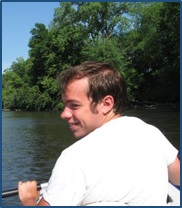 Joseph A. Morgan is an environmental scientist currently working within EPA’s Wetlands Division at EPA Headquarters in Washington, D.C., under an appointment to the Oak Ridge Institute of Science and Education (ORISE) Research Participation Program. He primarily studies issues surrounding stream and wetland compensatory mitigation performance, and is particularly interested in working with tribal, state, and federal governments to design sustainable programs for evaluating the ecological performance of mitigation projects. Joe also provides advisory support in key issue areas including stream restoration, general permitting, and surface coal mining. Prior to joining EPA’s Wetlands Division, Joe wrote his Masters thesis on the effects of restoration practices on riverine hydrological and biogeochemical processes at Indiana University’s School of Public and Environmental Affairs.
Joseph A. Morgan is an environmental scientist currently working within EPA’s Wetlands Division at EPA Headquarters in Washington, D.C., under an appointment to the Oak Ridge Institute of Science and Education (ORISE) Research Participation Program. He primarily studies issues surrounding stream and wetland compensatory mitigation performance, and is particularly interested in working with tribal, state, and federal governments to design sustainable programs for evaluating the ecological performance of mitigation projects. Joe also provides advisory support in key issue areas including stream restoration, general permitting, and surface coal mining. Prior to joining EPA’s Wetlands Division, Joe wrote his Masters thesis on the effects of restoration practices on riverine hydrological and biogeochemical processes at Indiana University’s School of Public and Environmental Affairs.
 Dr. Eric Stein is a principal scientist at the Southern California Coastal Water Research Project (SCCWRP), where he is head of the Biology Department. Dr. Stein oversees a variety of projects related to in-stream and coastal water quality, bioassessment, hydromodification, watershed modeling, and assessment of wetlands and other aquatic resources. His research focuses on effects of human activities on the condition of aquatic ecosystems, and on developing tools to better assess and manage those effects. Dr. Stein has authored over 100 journal articles and technical reports and participates on numerous technical workgroups and committees related to water quality and wetland assessment and management. Prior to joining SCCWRP in 2002, Dr. Stein spent six years as a Senior Project Manager with the Regulatory Branch of the Los Angeles District Corps of Engineers, and four years with a private consulting firm.
Dr. Eric Stein is a principal scientist at the Southern California Coastal Water Research Project (SCCWRP), where he is head of the Biology Department. Dr. Stein oversees a variety of projects related to in-stream and coastal water quality, bioassessment, hydromodification, watershed modeling, and assessment of wetlands and other aquatic resources. His research focuses on effects of human activities on the condition of aquatic ecosystems, and on developing tools to better assess and manage those effects. Dr. Stein has authored over 100 journal articles and technical reports and participates on numerous technical workgroups and committees related to water quality and wetland assessment and management. Prior to joining SCCWRP in 2002, Dr. Stein spent six years as a Senior Project Manager with the Regulatory Branch of the Los Angeles District Corps of Engineers, and four years with a private consulting firm.
 Dr. Siobhan Fennessy is the Jordan professor of Biology and Environmental Studies at Kenyon College. As a wetland ecologist she studies biological assessment methods, watershed-based assessment approaches, restoration, and the role of temperate wetlands in the global carbon cycle. She received her Ph.D. in Environmental Biology from the Ohio State University in 1991. She previously served on the faculty of the Geography Department of University College London. During a subsequent position at Ohio EPA, Fennessy helped establish Ohio’s wetland bioassessment program and wrote the wetland water quality standards for Ohio. Fennessy worked for the past 6 years on the National Wetland Condition Assessment led by USEPA, including to help design NWCA field methods, co-develop the U.S. Rapid Assessment Method, develop plant-based metrics for use in an vegetation IBI, and work on soil based indicators. She currently serves on the Water Science and Technology Board, a governing board of the National Academy of Sciences and was recently appointed to both the Intergovernmental Platform on Biodiversity and Ecosystem Services (UNEP) and the Ramsar Convention’s Scientific and Technical Review Panel.
Dr. Siobhan Fennessy is the Jordan professor of Biology and Environmental Studies at Kenyon College. As a wetland ecologist she studies biological assessment methods, watershed-based assessment approaches, restoration, and the role of temperate wetlands in the global carbon cycle. She received her Ph.D. in Environmental Biology from the Ohio State University in 1991. She previously served on the faculty of the Geography Department of University College London. During a subsequent position at Ohio EPA, Fennessy helped establish Ohio’s wetland bioassessment program and wrote the wetland water quality standards for Ohio. Fennessy worked for the past 6 years on the National Wetland Condition Assessment led by USEPA, including to help design NWCA field methods, co-develop the U.S. Rapid Assessment Method, develop plant-based metrics for use in an vegetation IBI, and work on soil based indicators. She currently serves on the Water Science and Technology Board, a governing board of the National Academy of Sciences and was recently appointed to both the Intergovernmental Platform on Biodiversity and Ecosystem Services (UNEP) and the Ramsar Convention’s Scientific and Technical Review Panel.
![]()
View Past Improving Wetland Restoration Success Webinars Here
| 2015 | 2014 | ||
View a List of Improving Wetland Restoration Success Webinar Recordings Here

